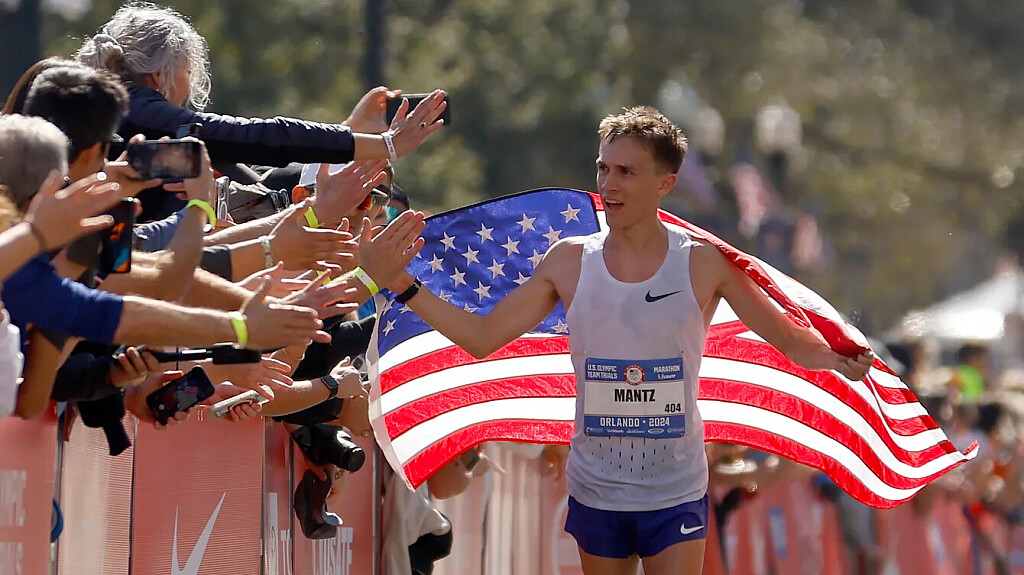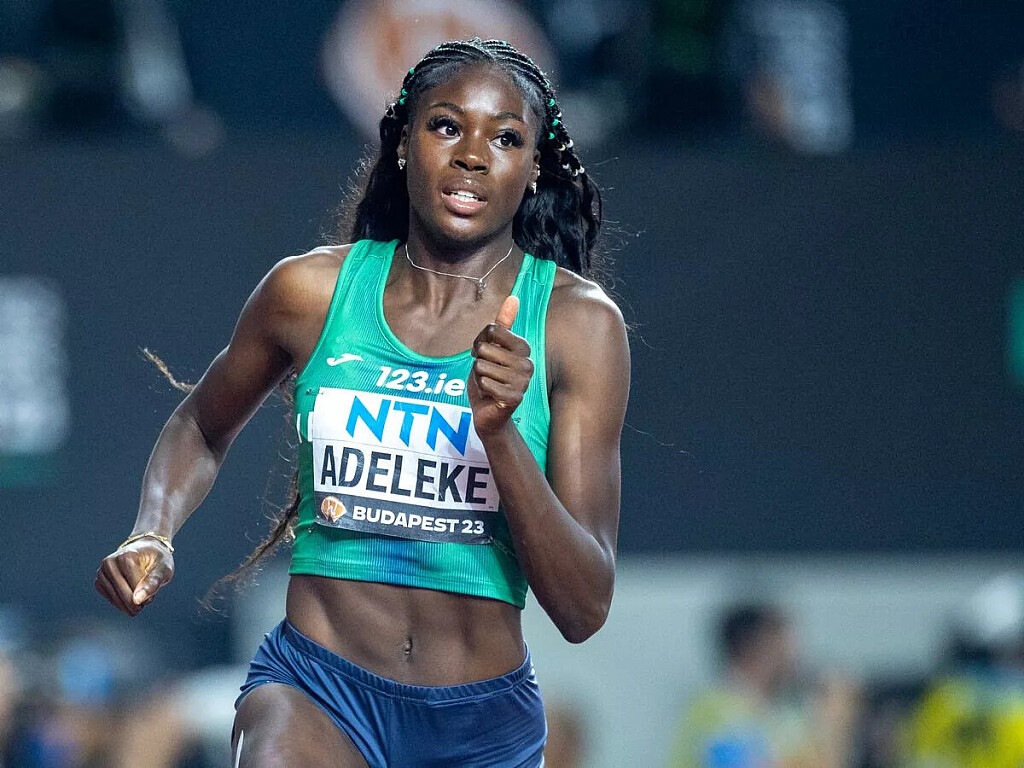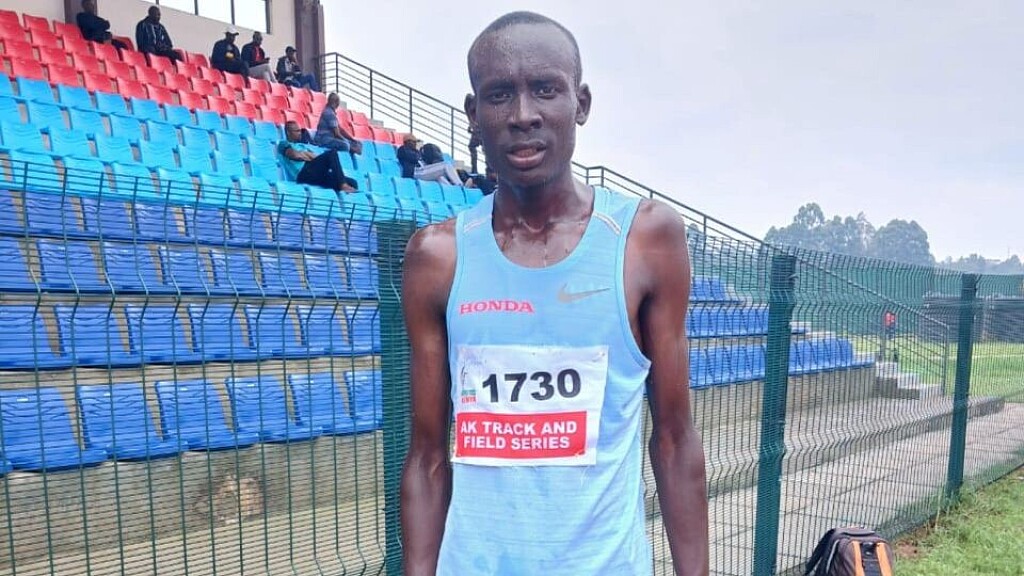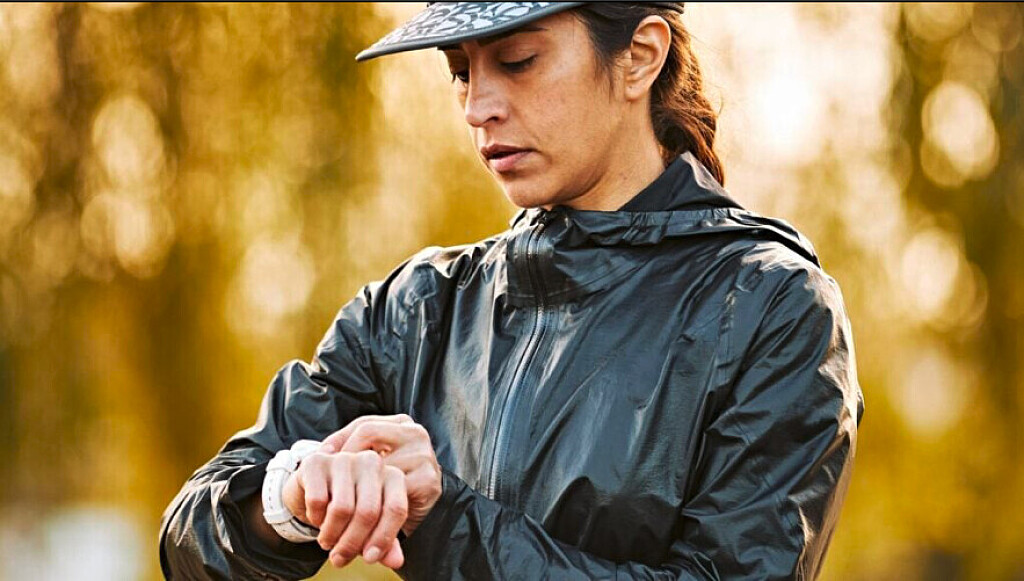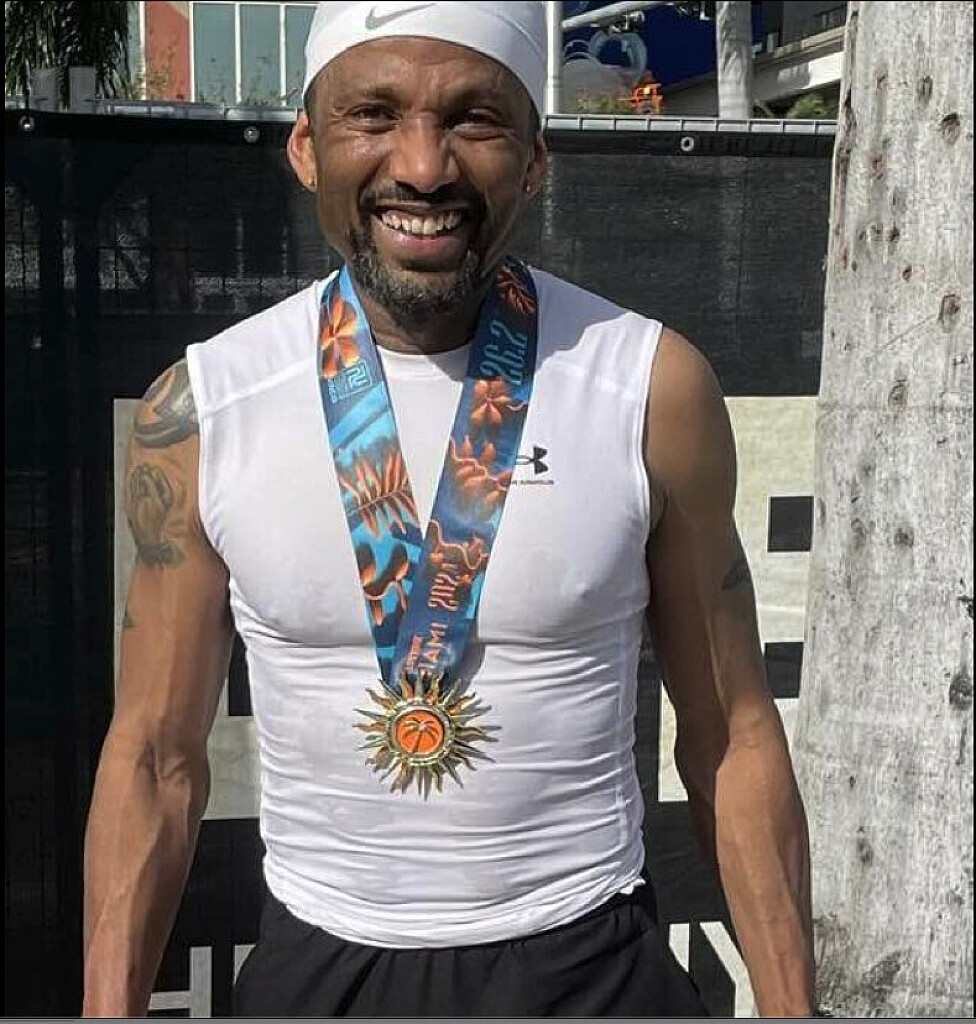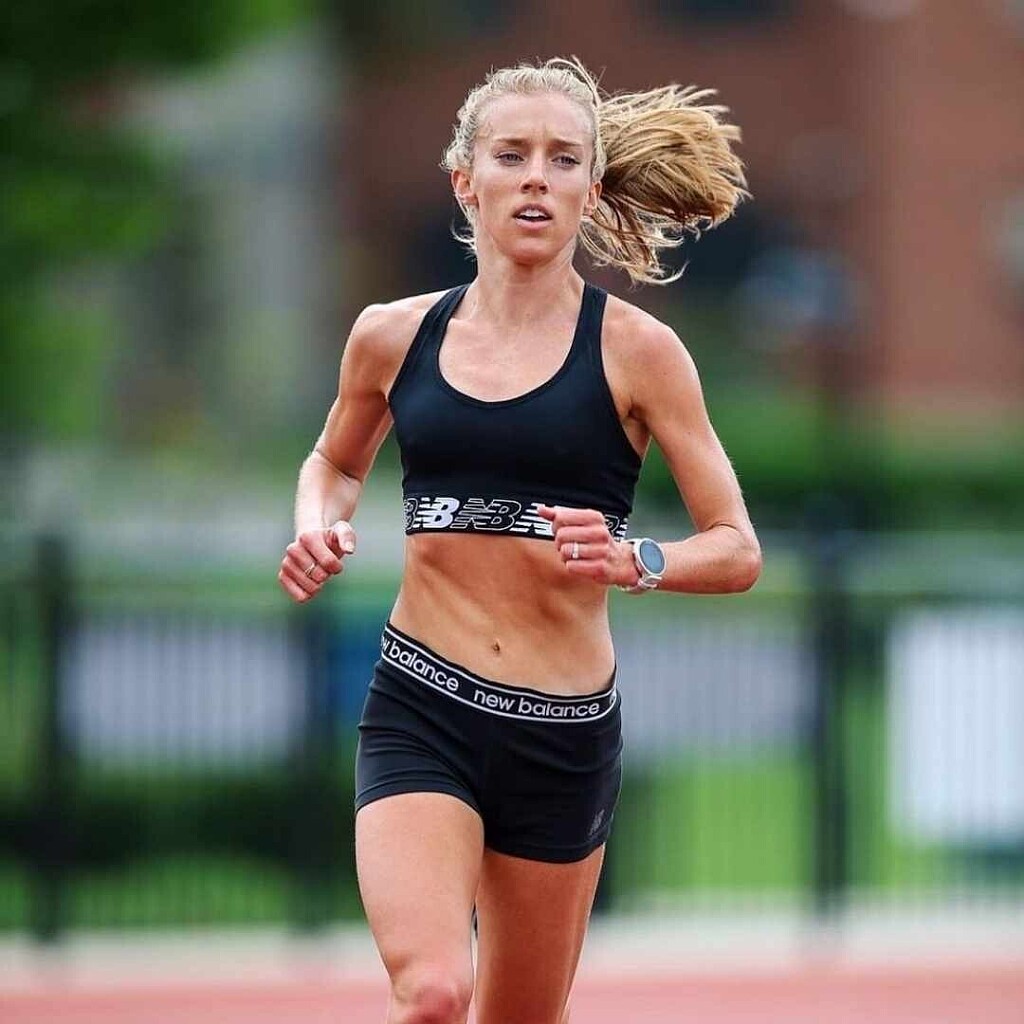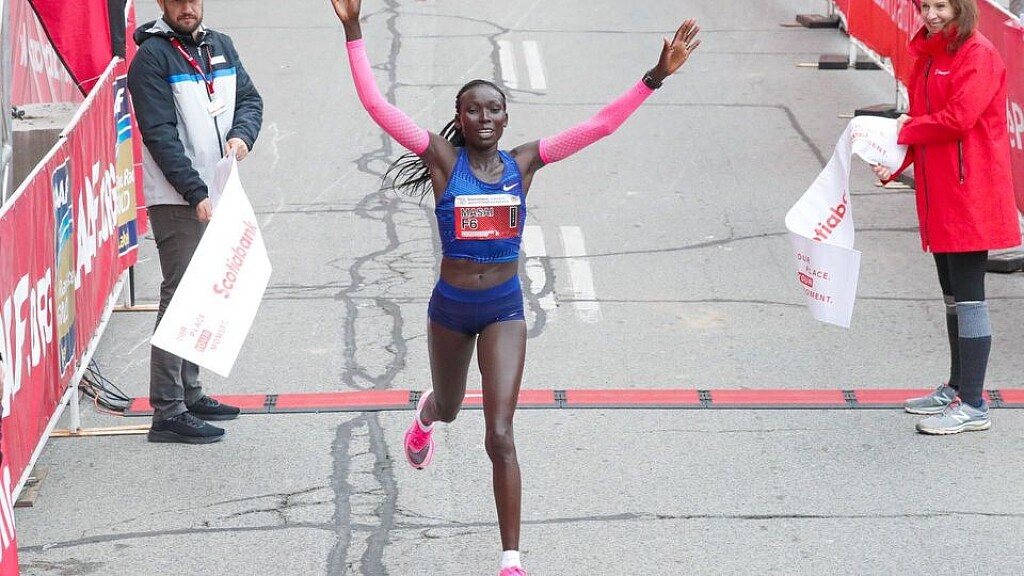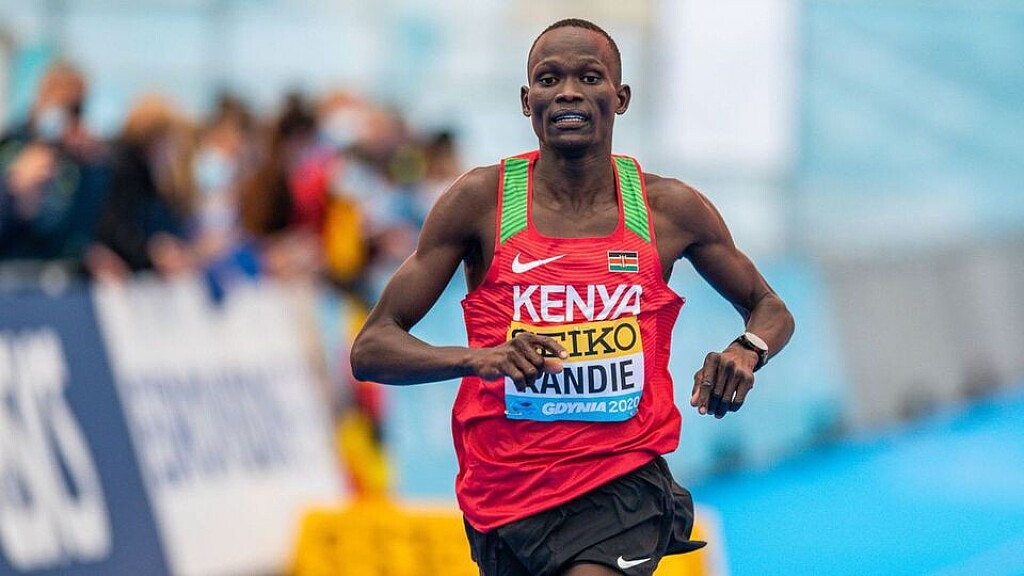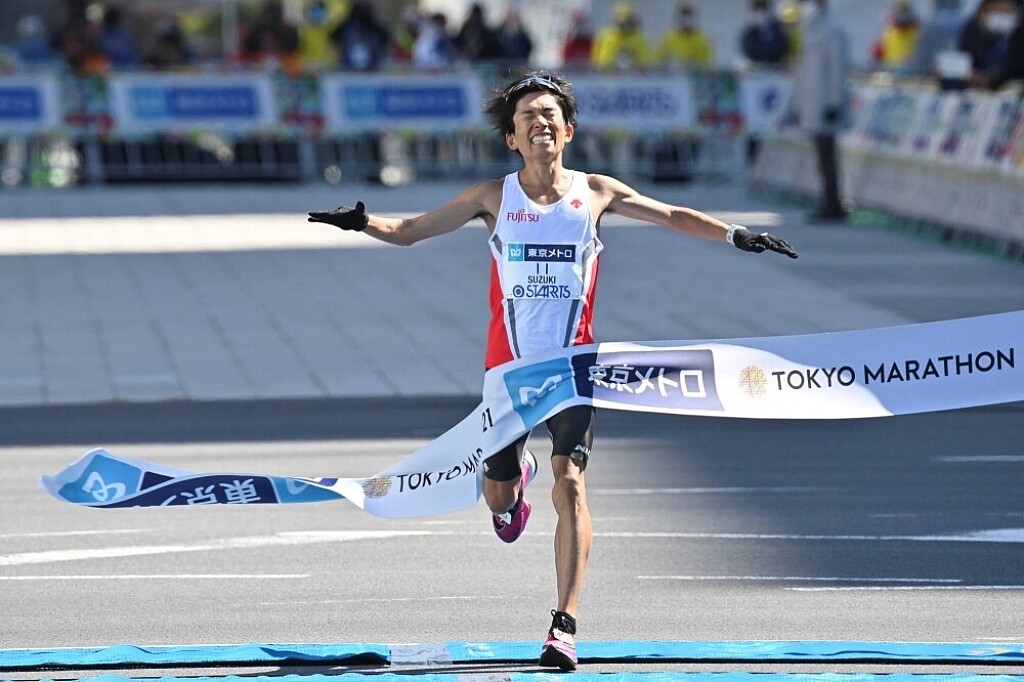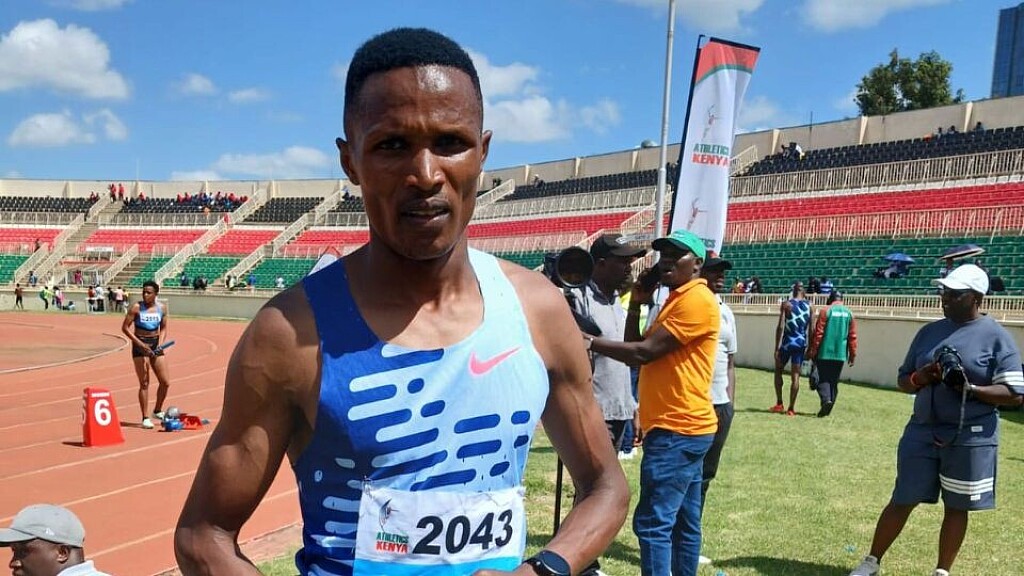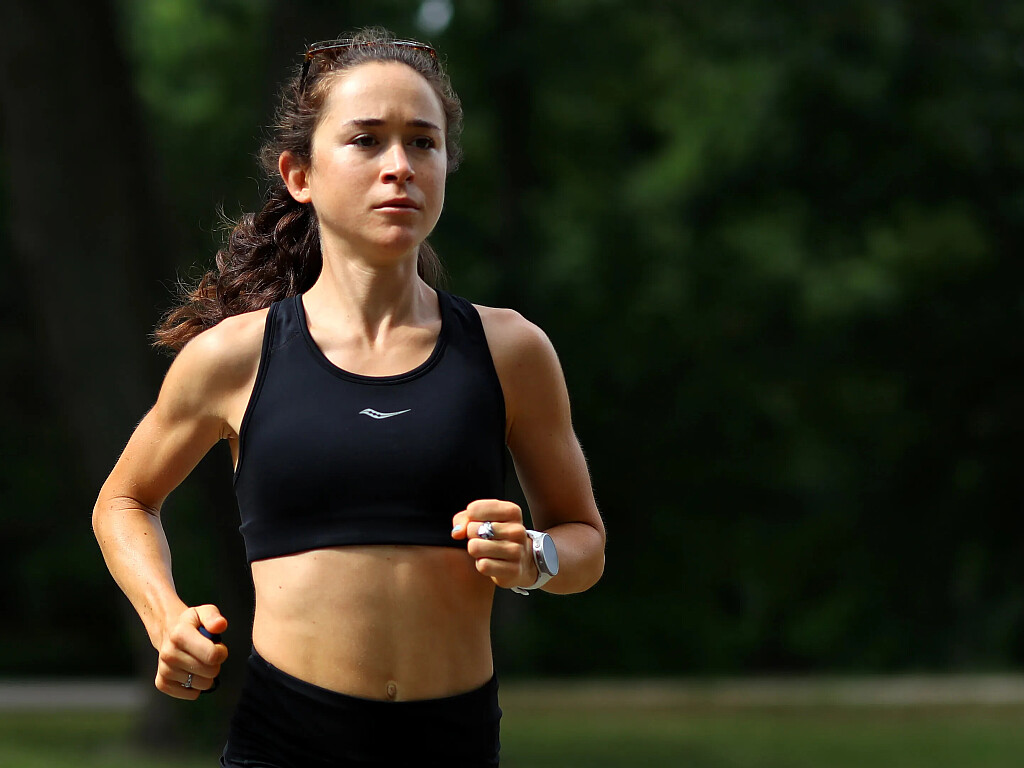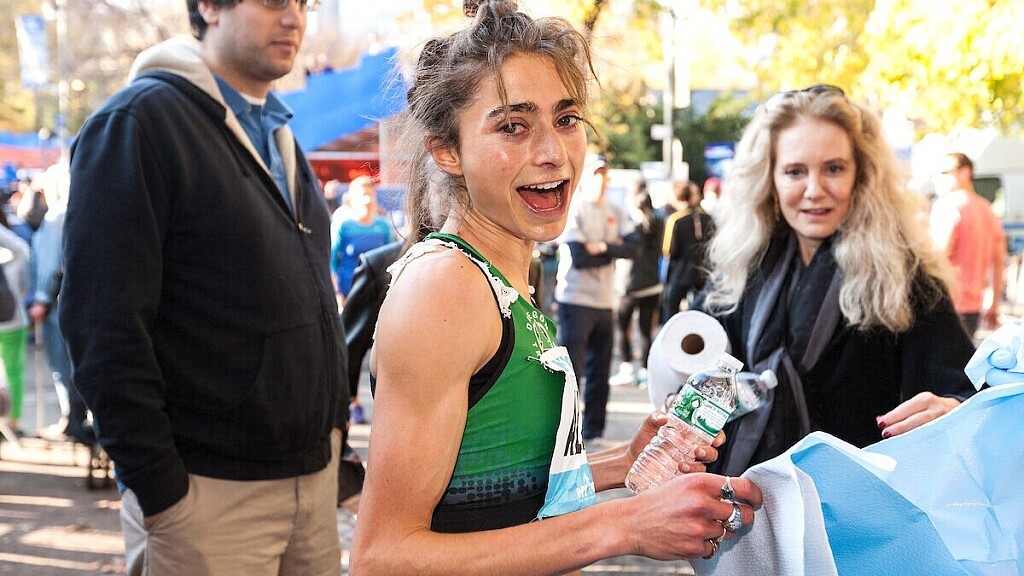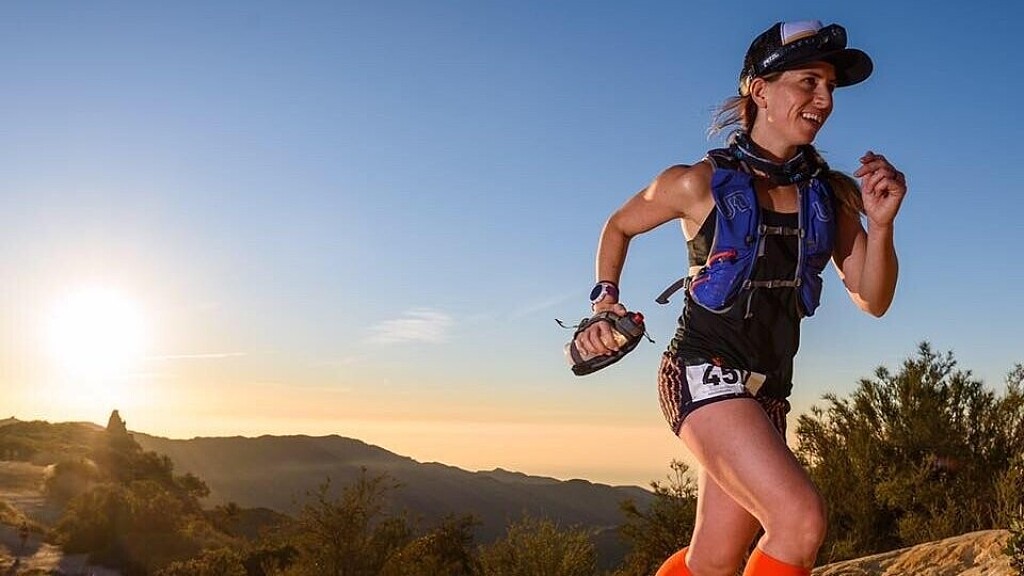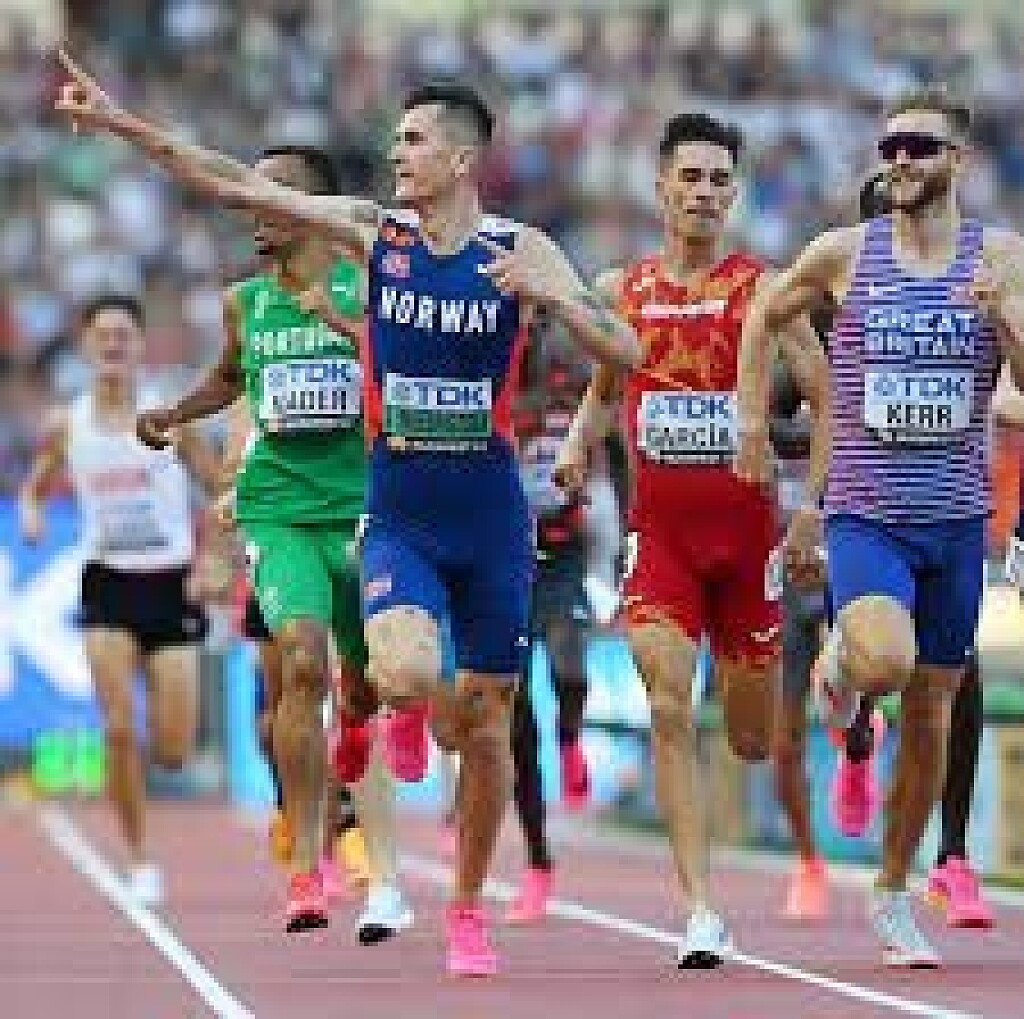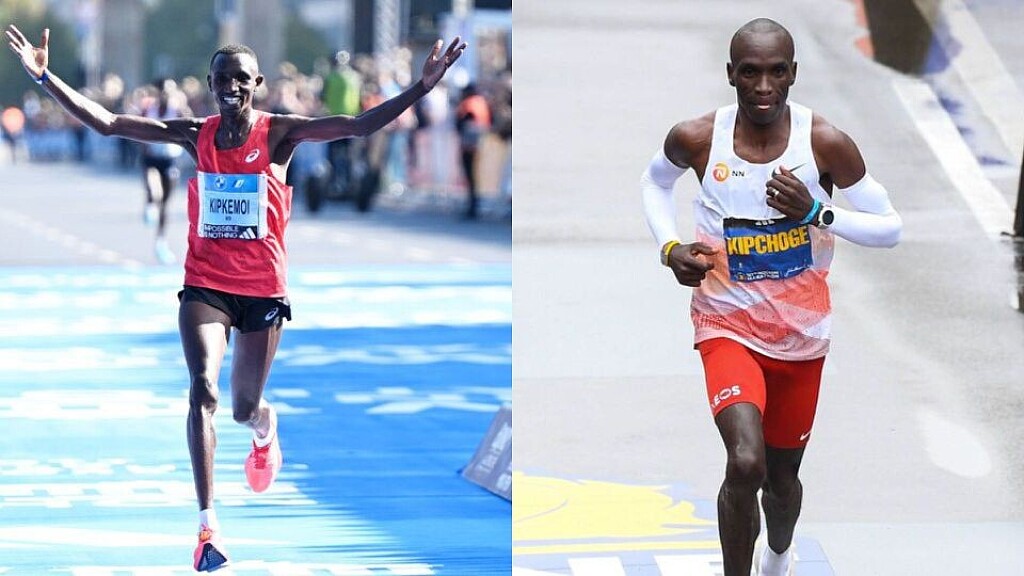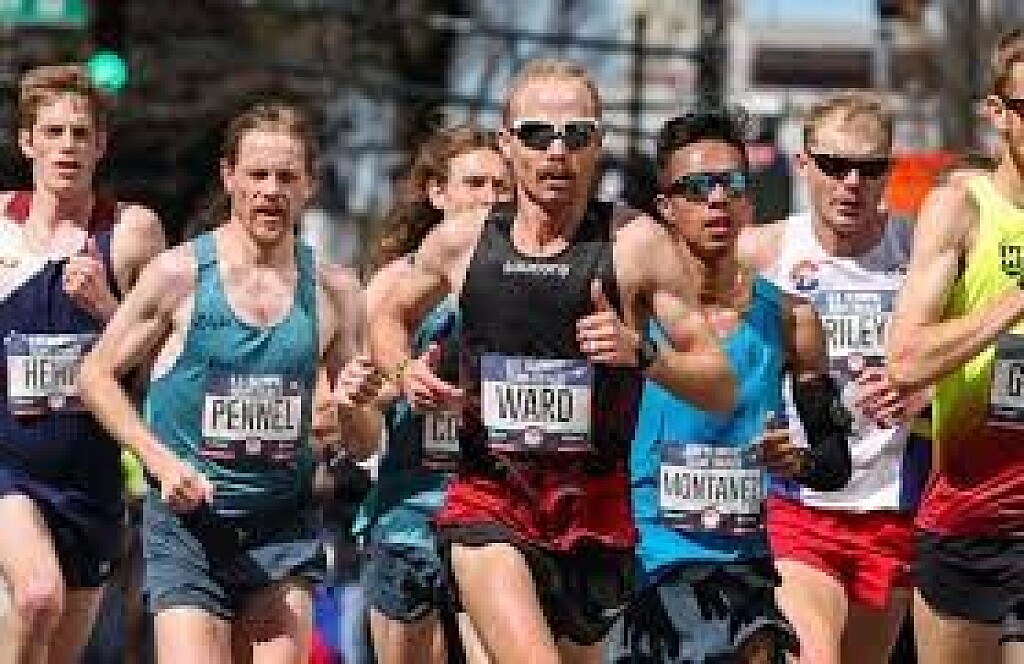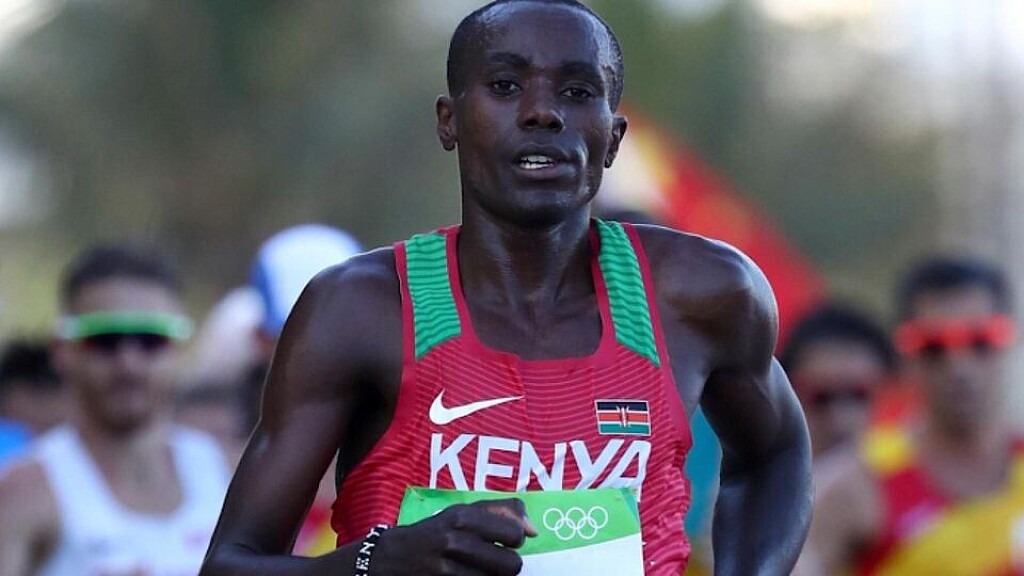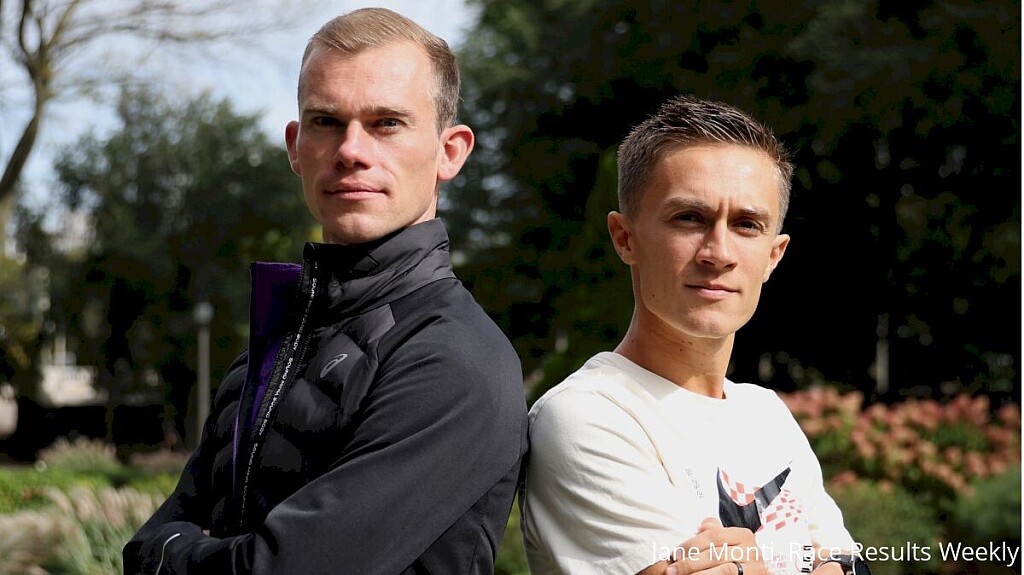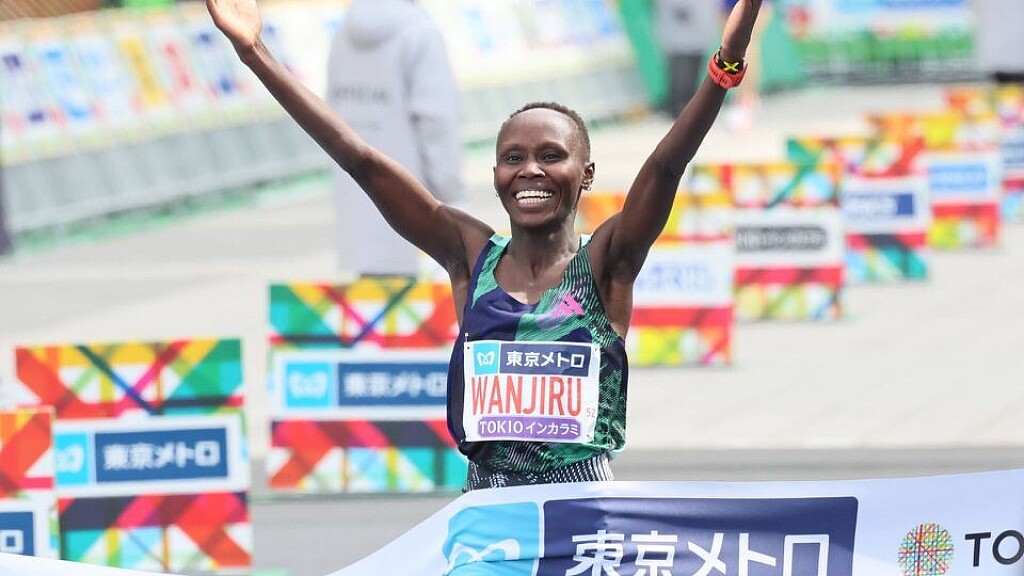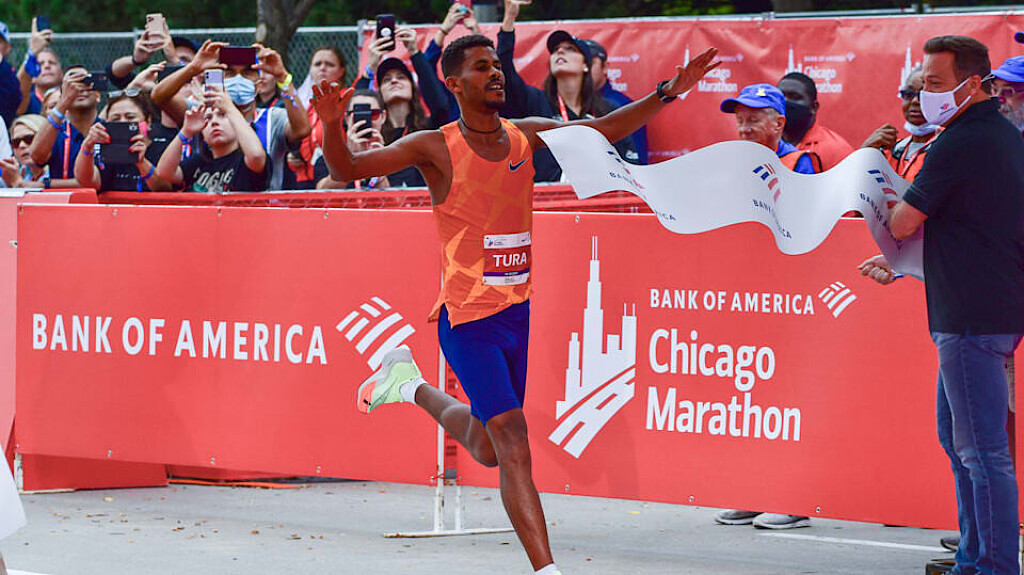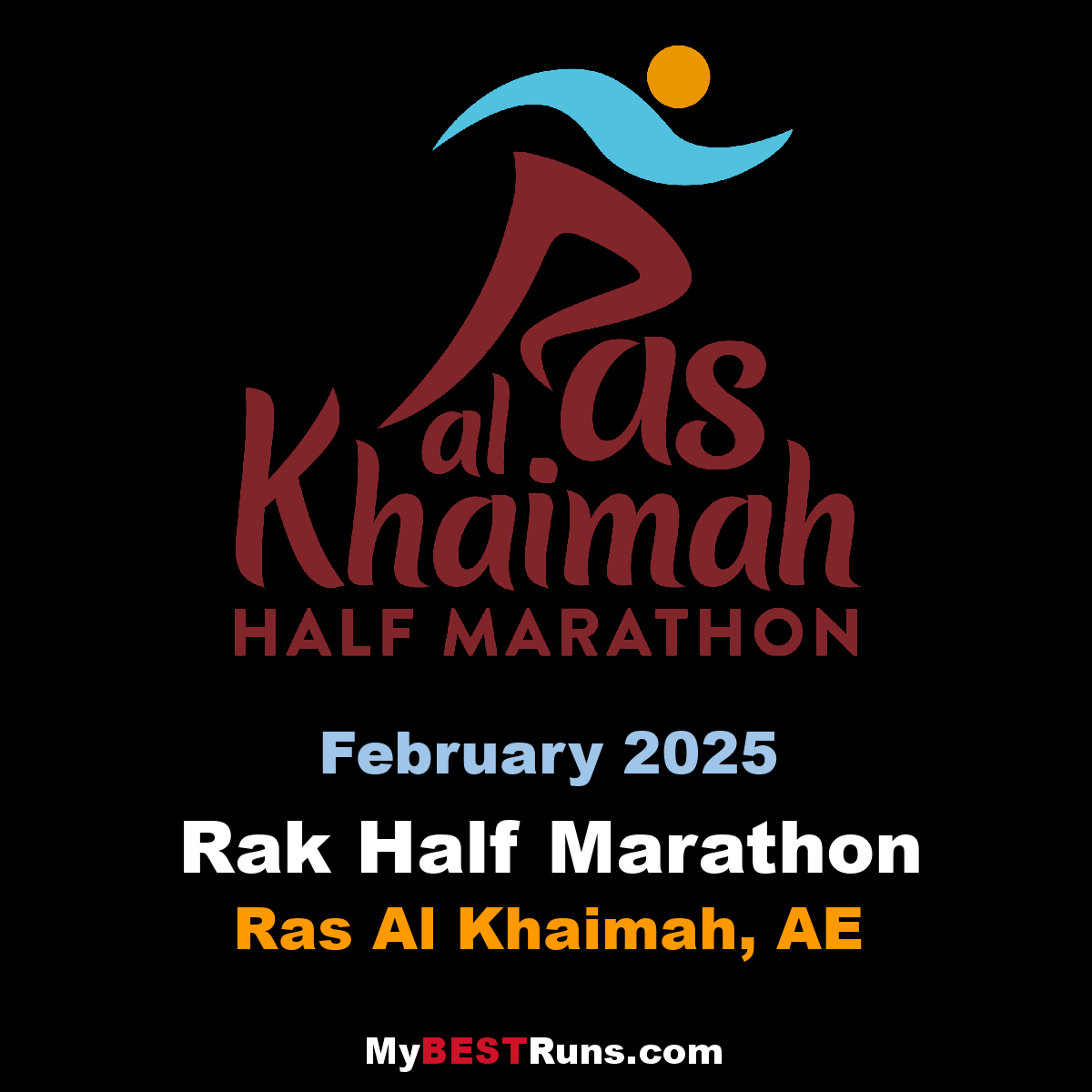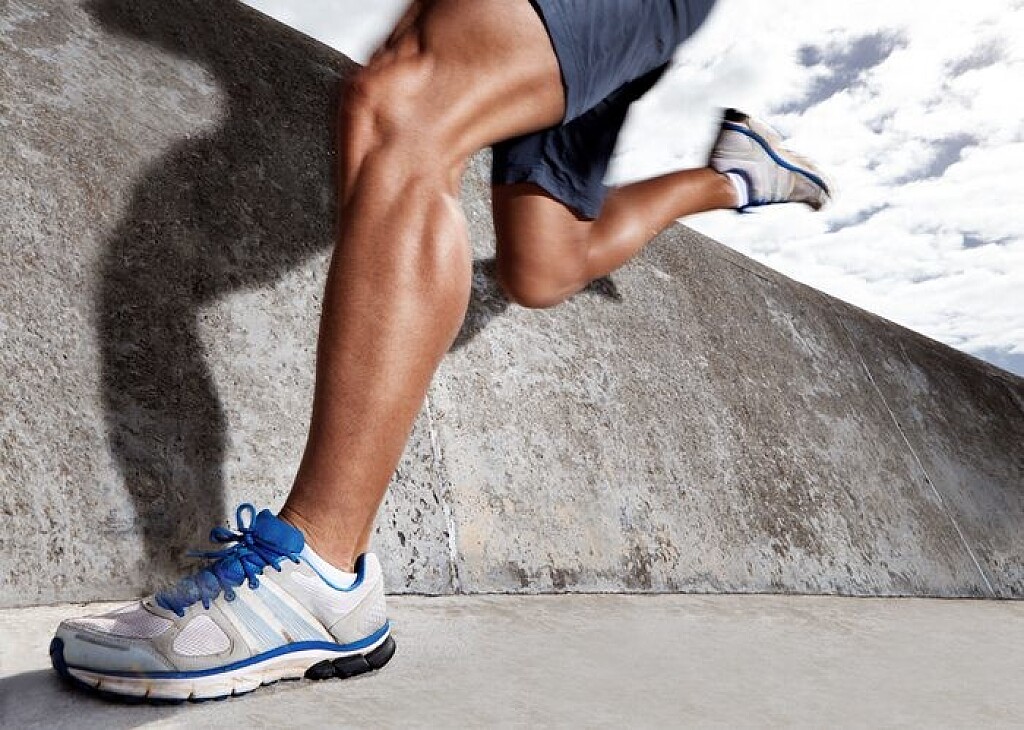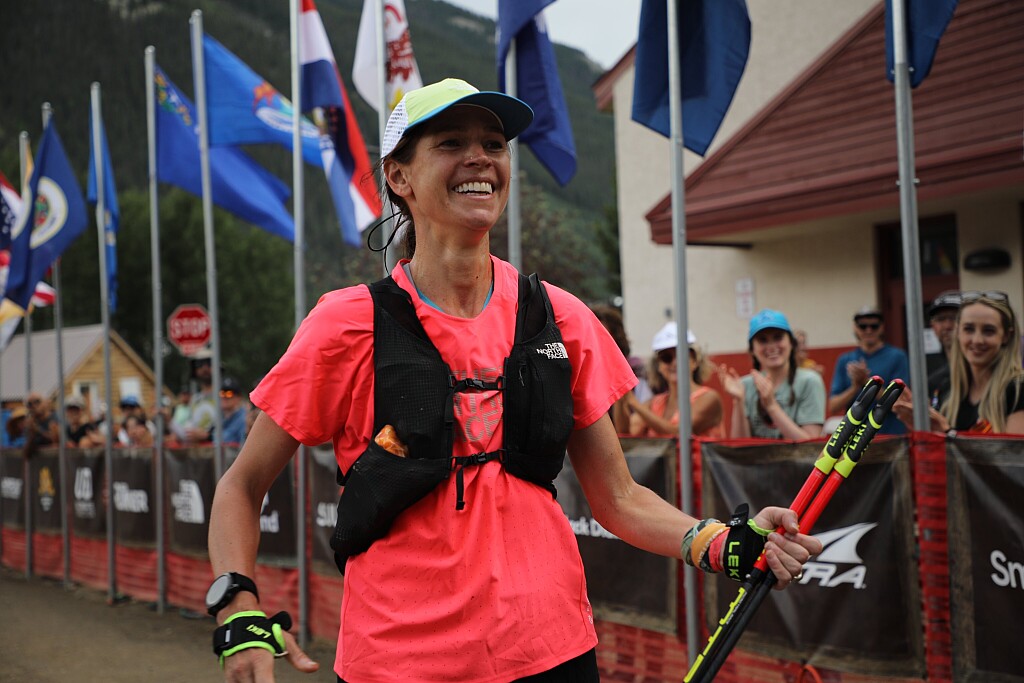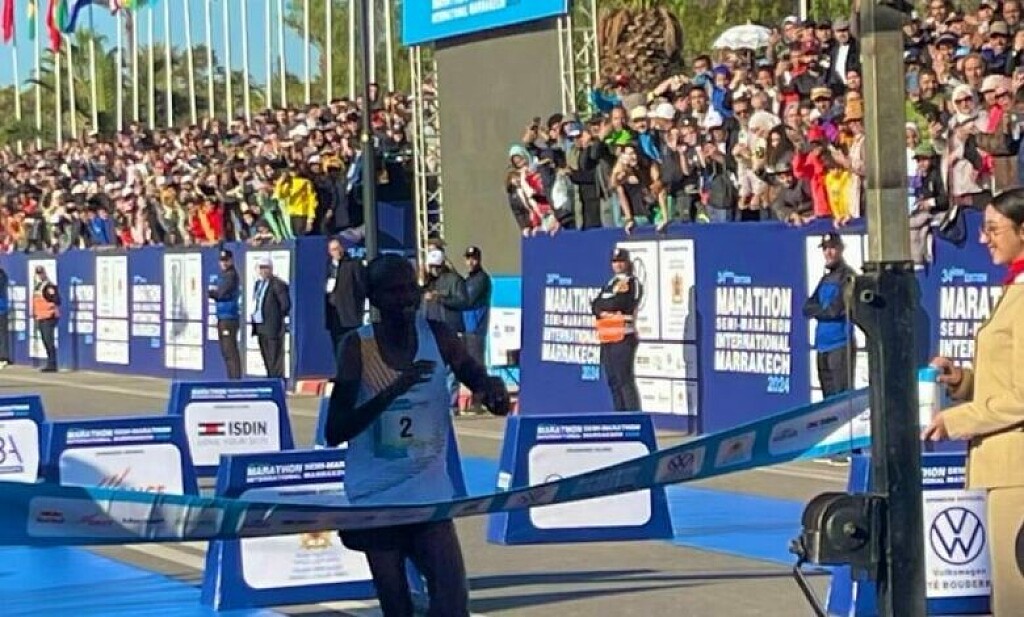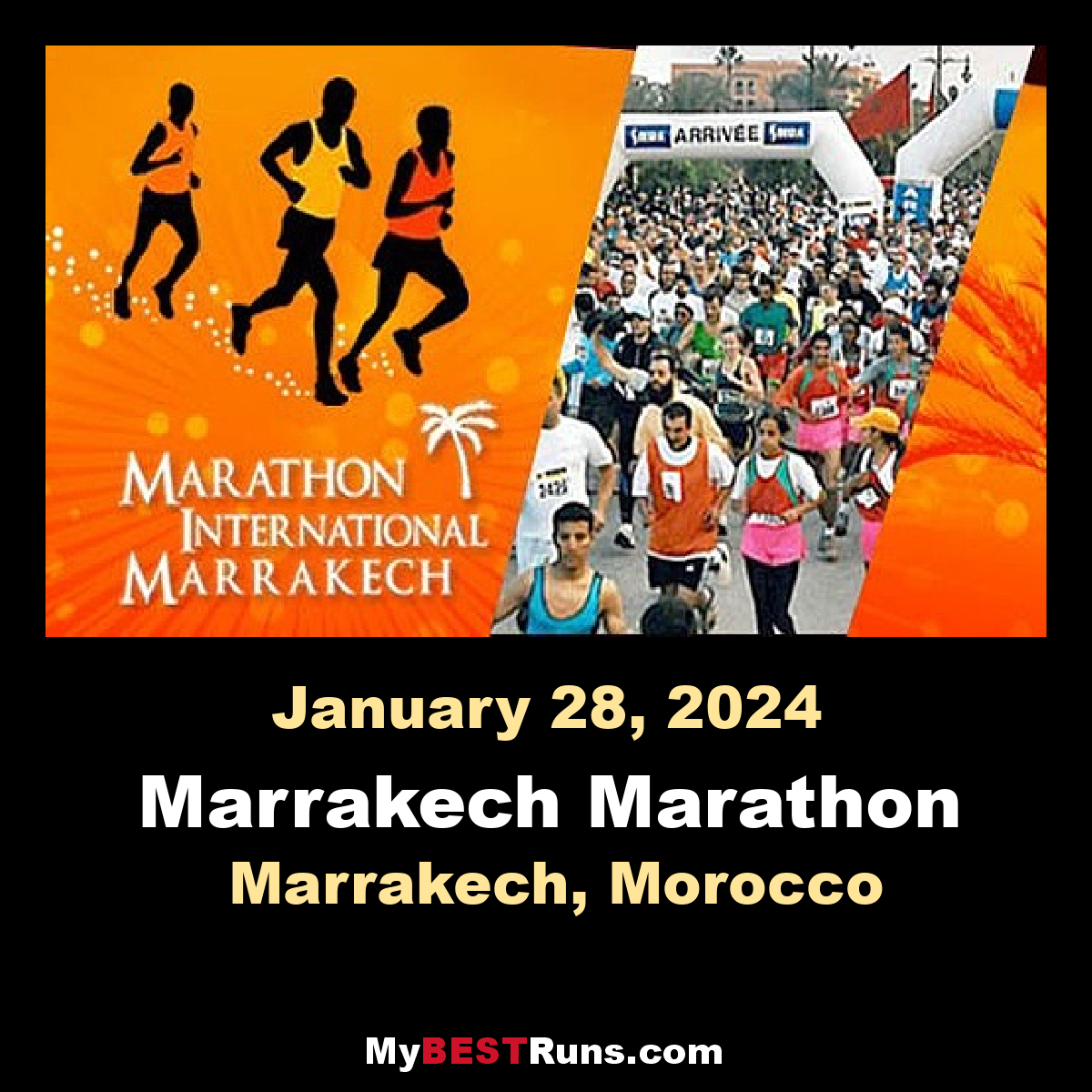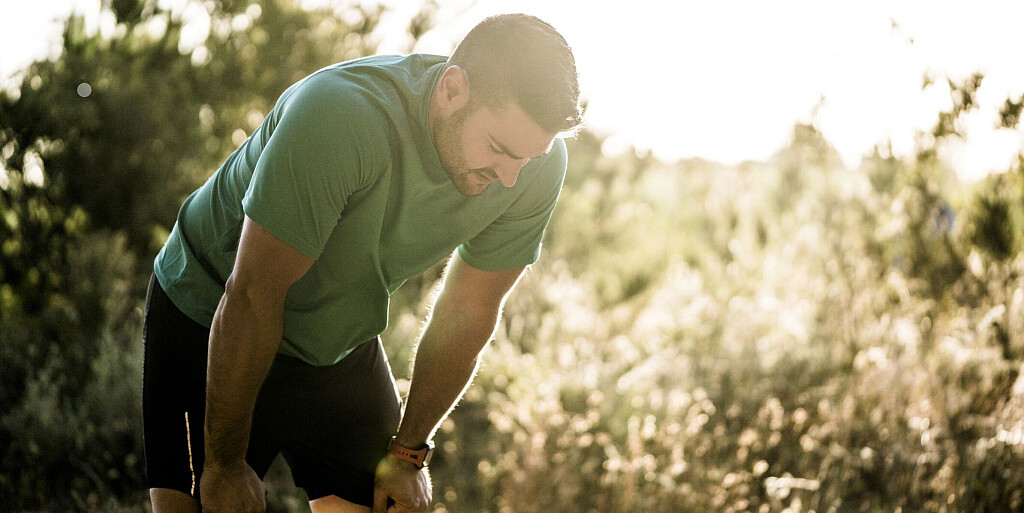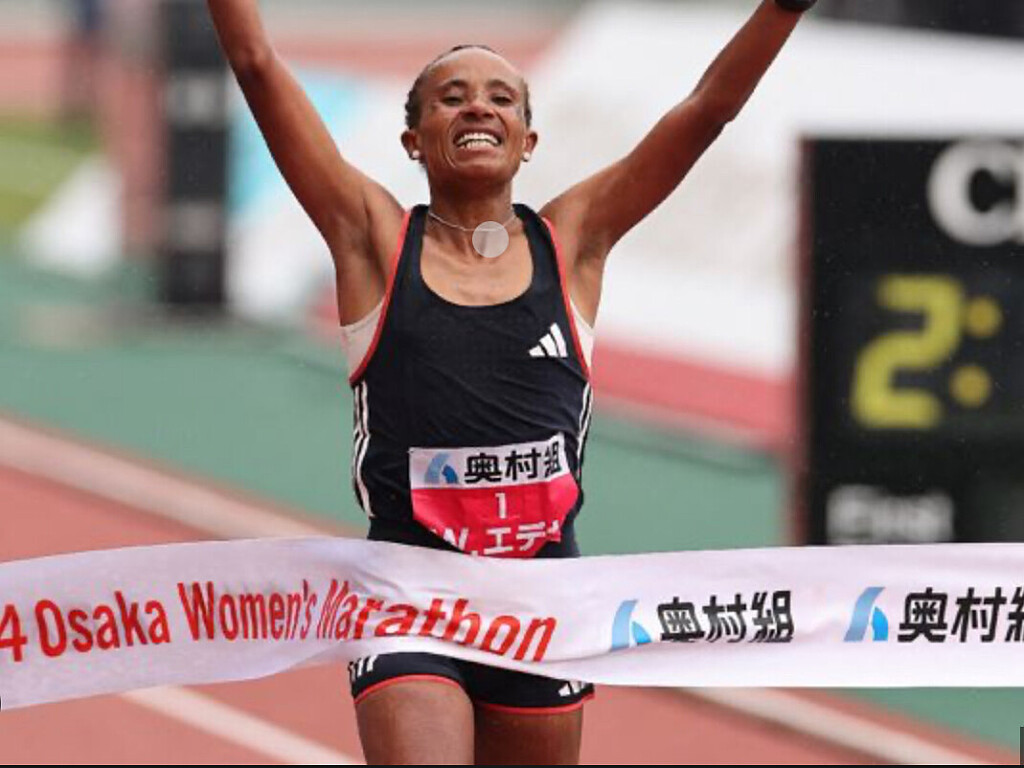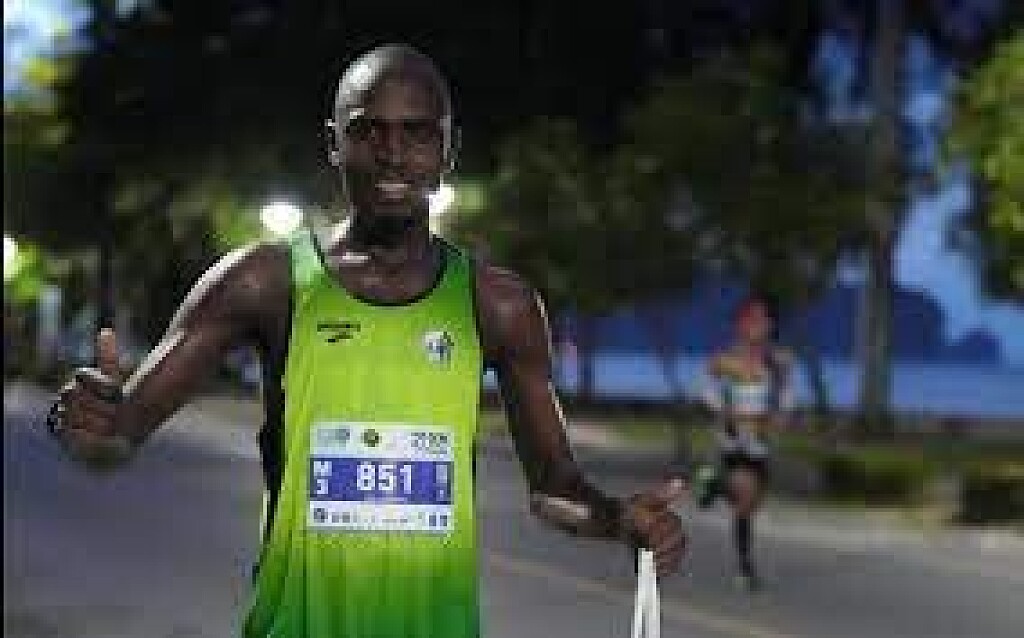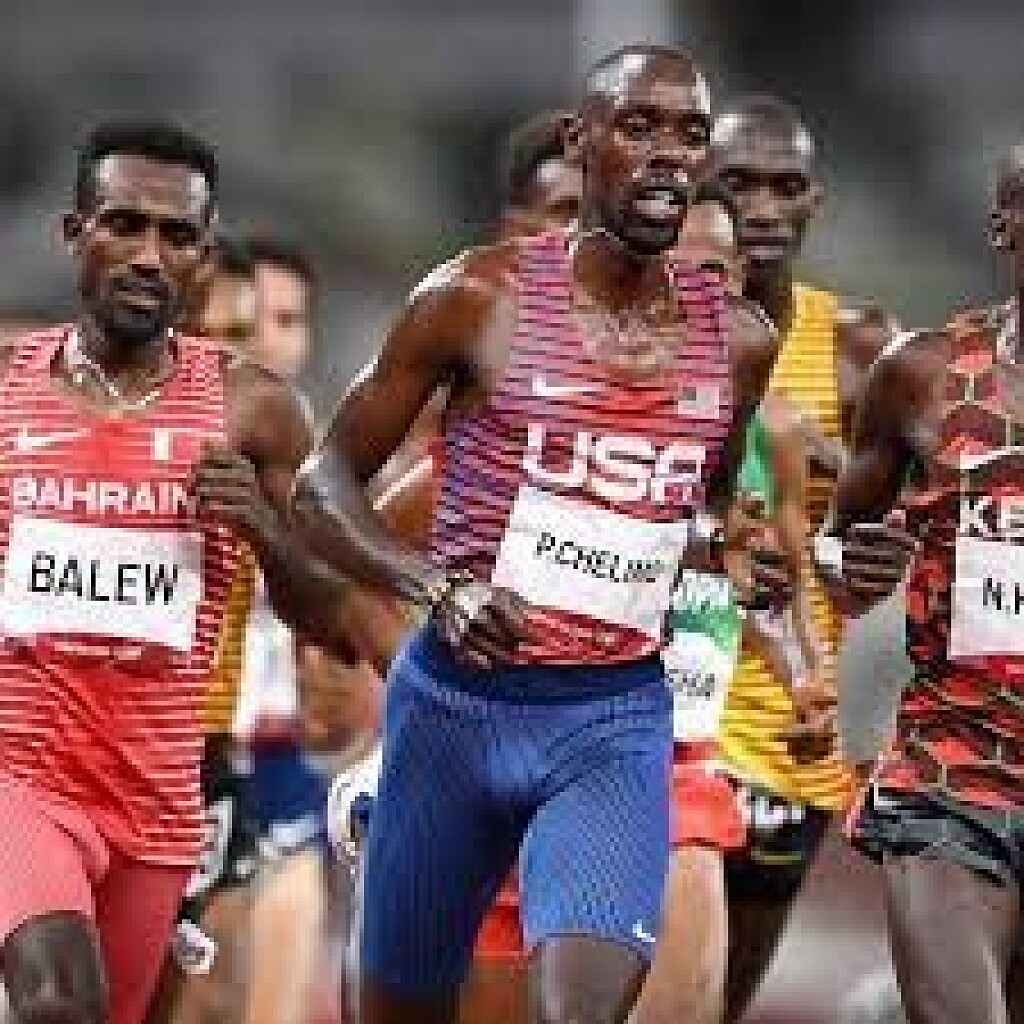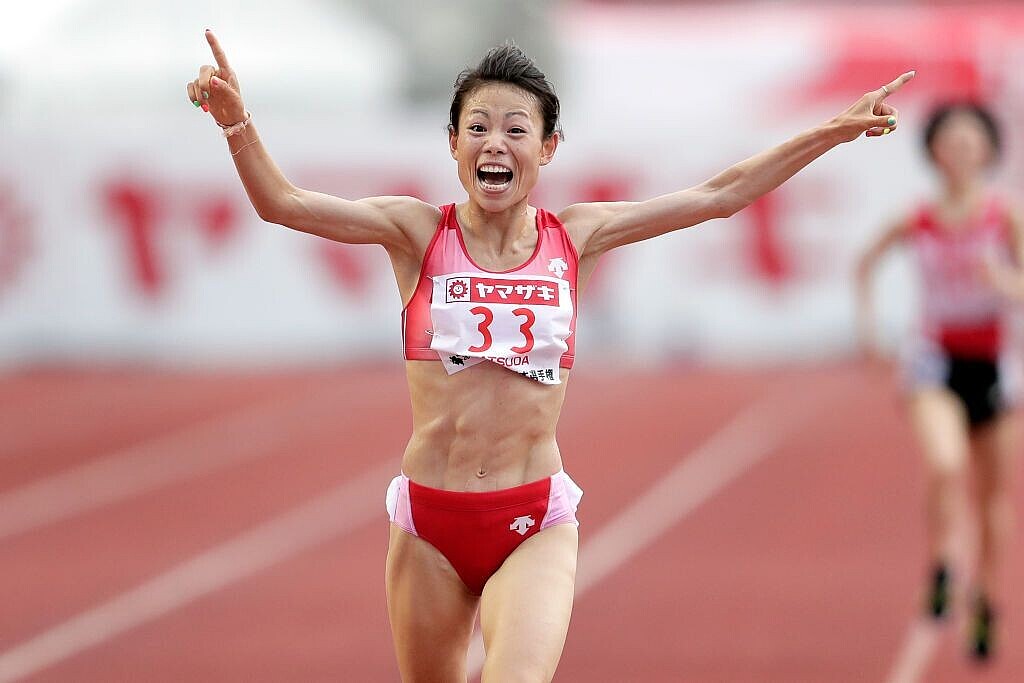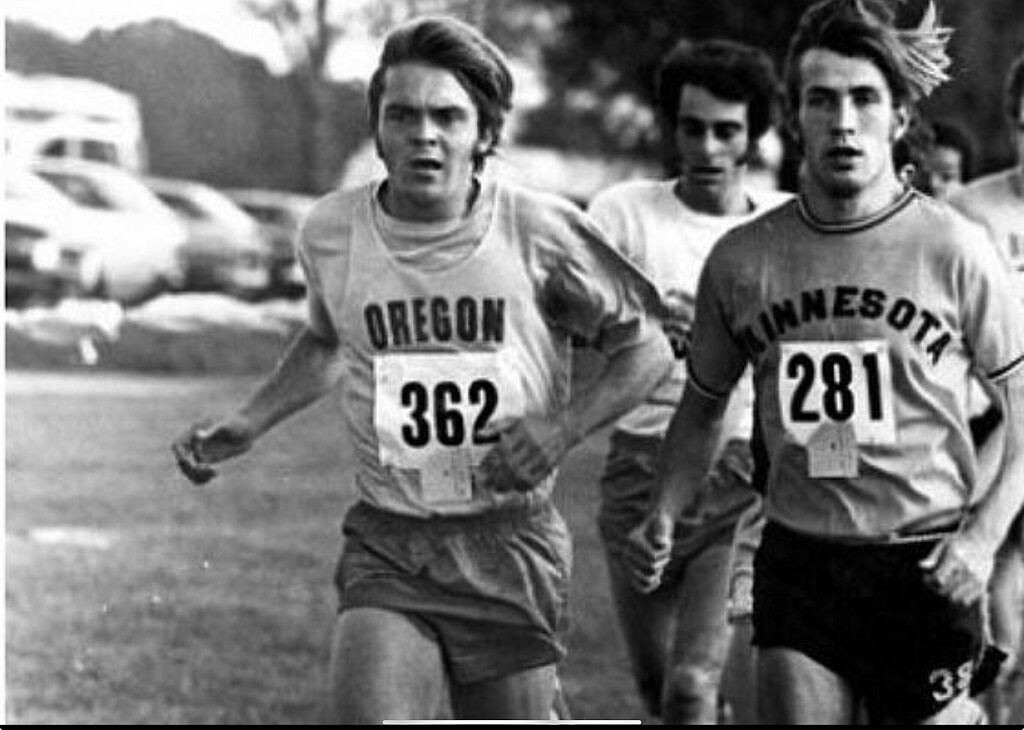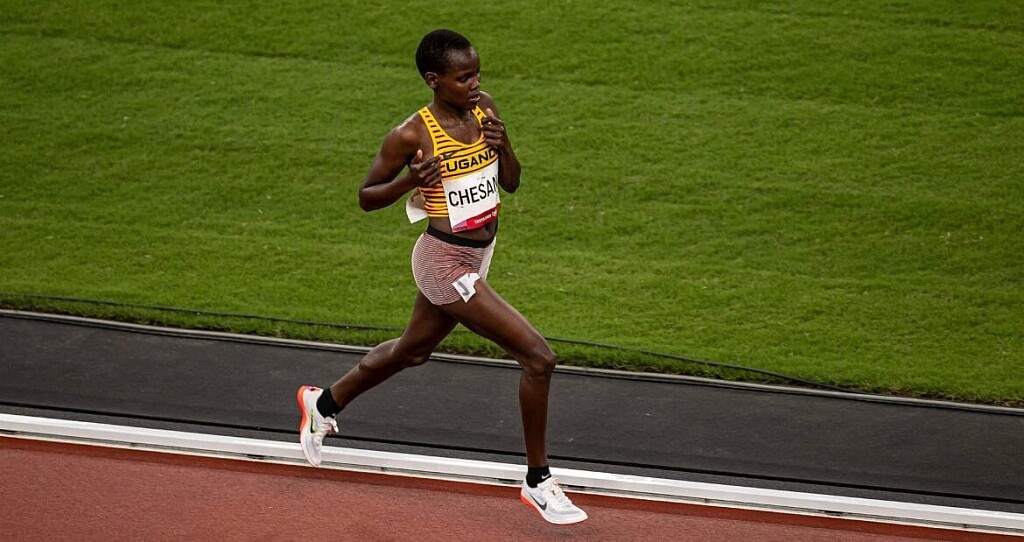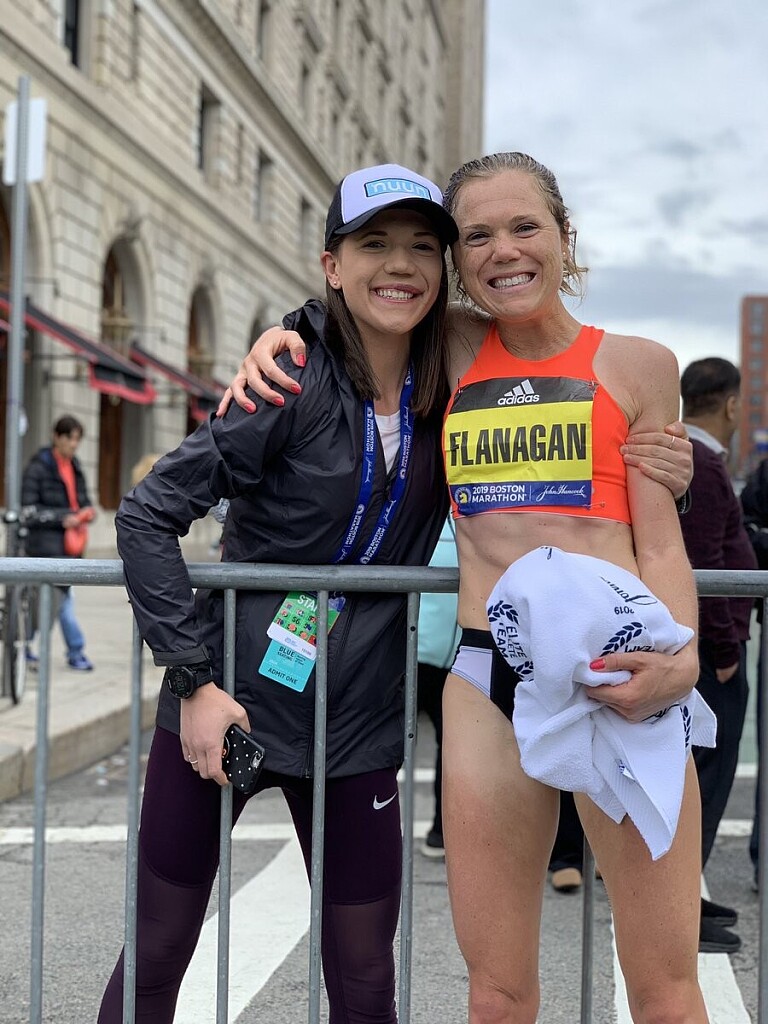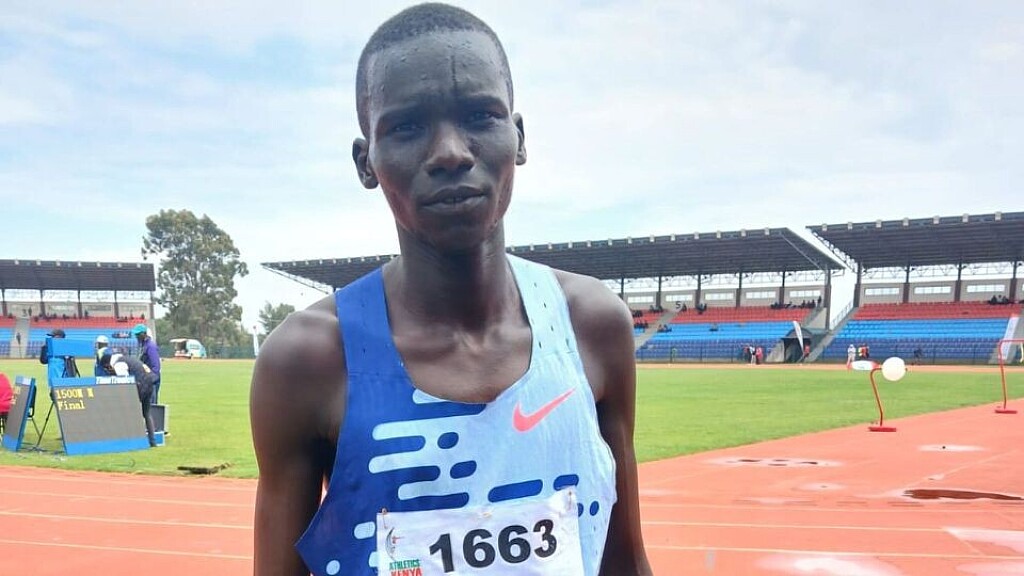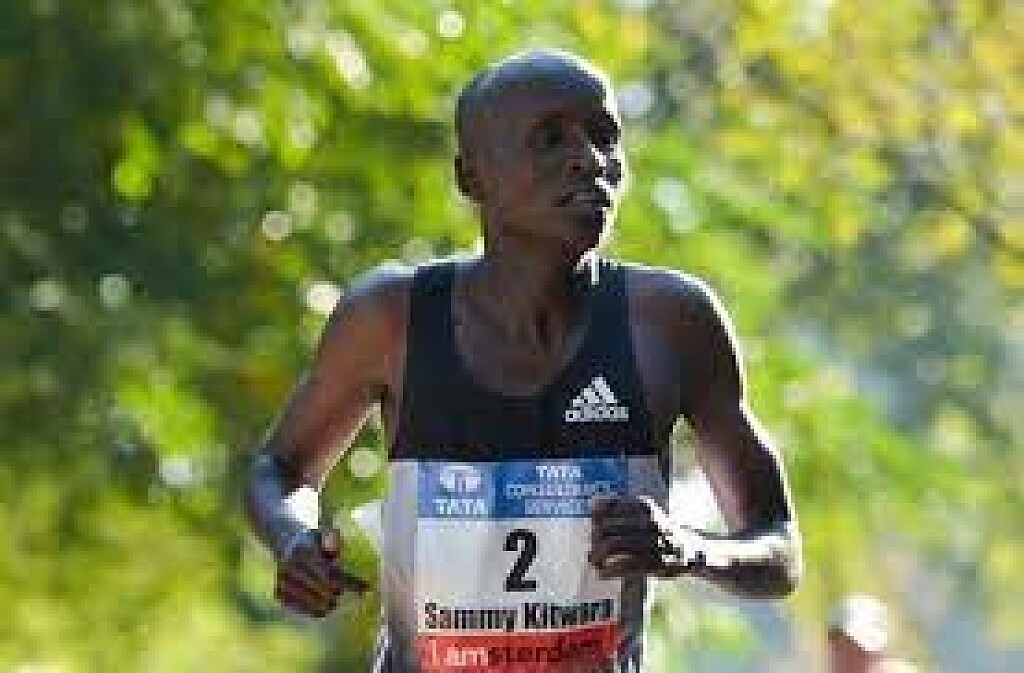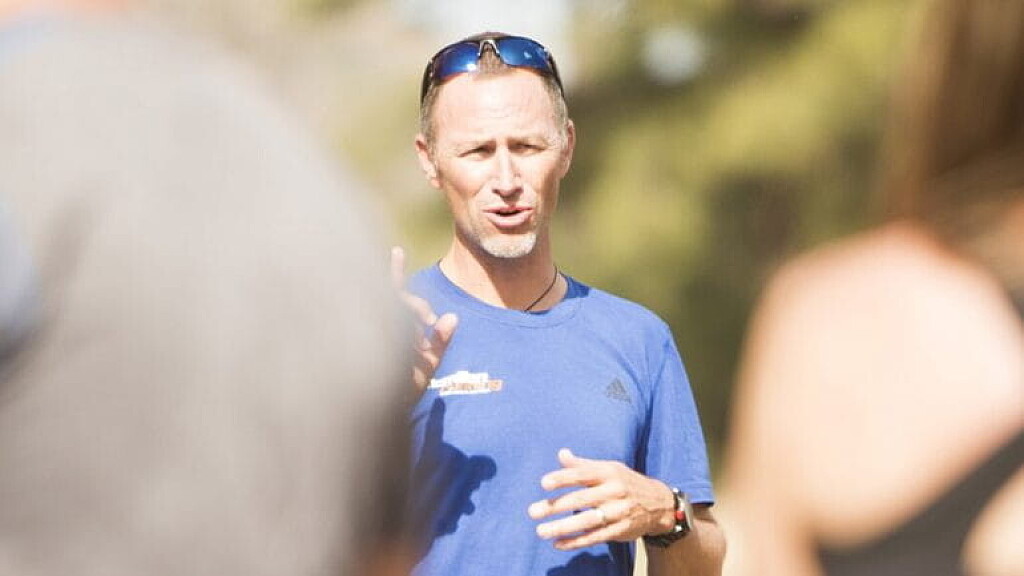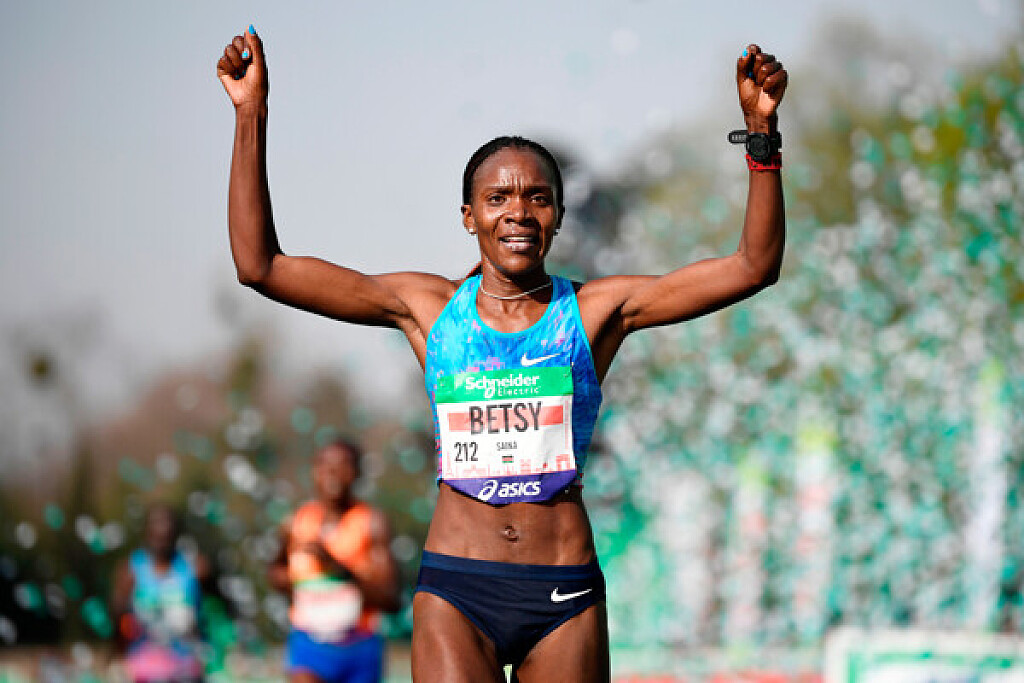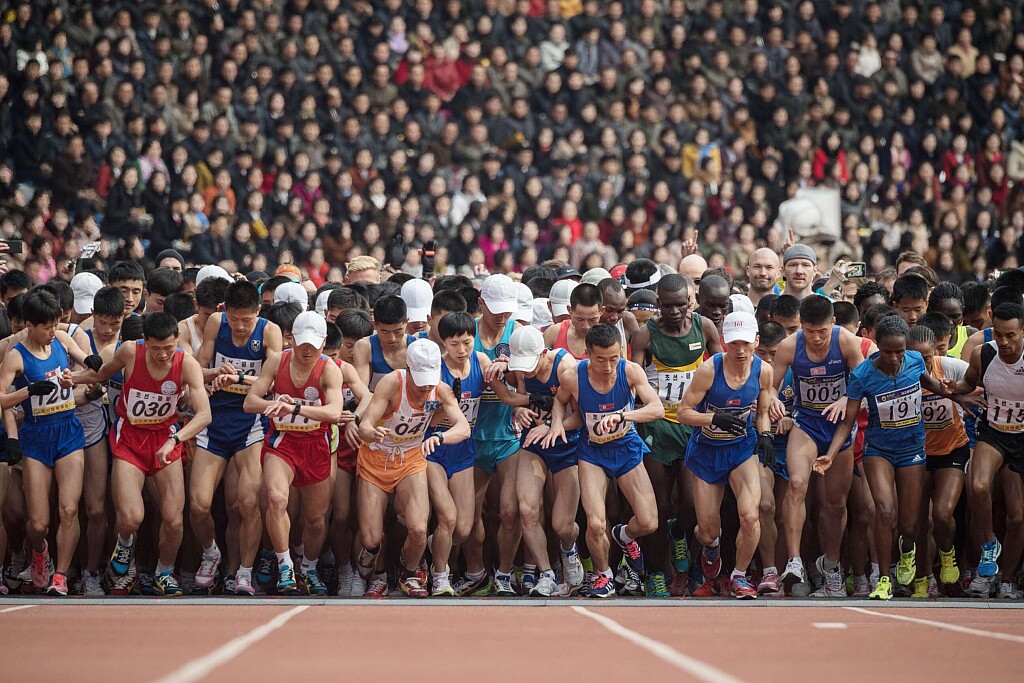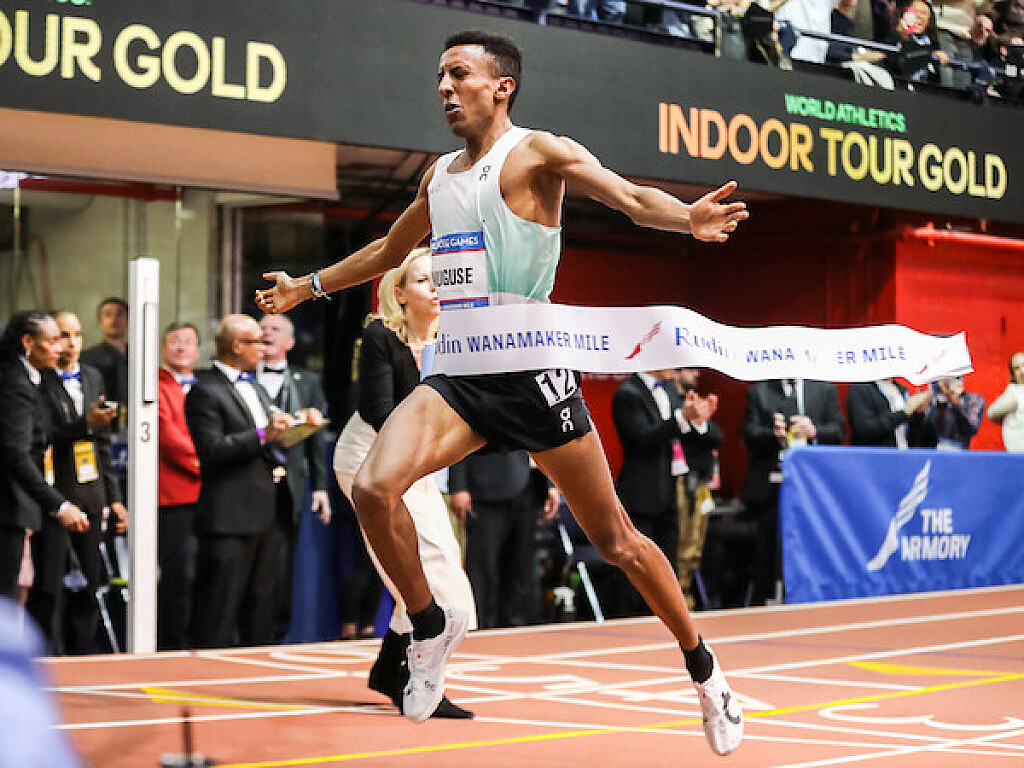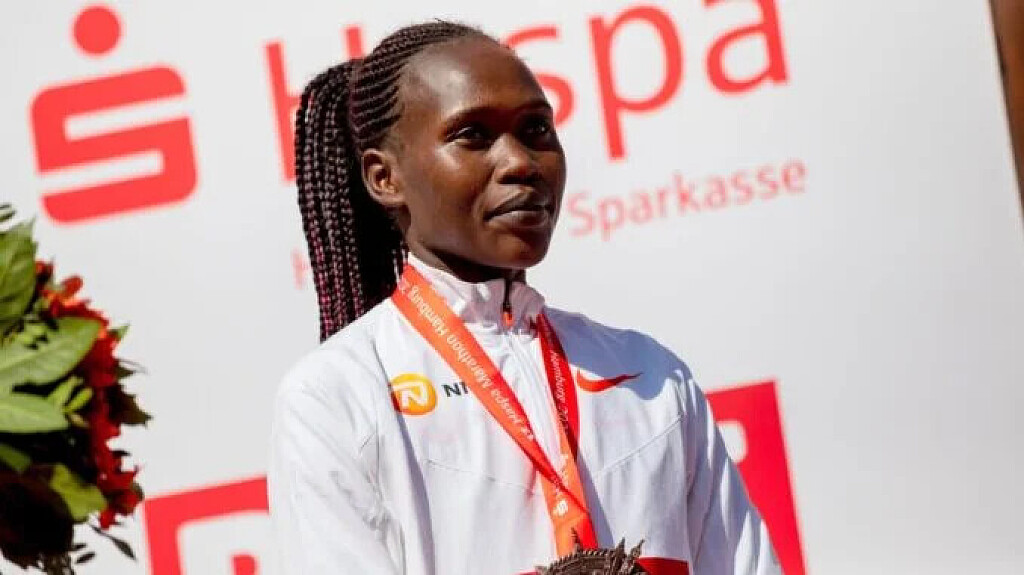Running News Daily
Running News Daily is edited by Bob Anderson in Mountain View, California USA and team in Thika Kenya, La Piedad Mexico, Bend Oregon, Chandler Arizona and Monforte da Beira Portugal. Send your news items to bob@mybestruns.com Advertising opportunities available. Over one million readers and growing. Train the Kenyan Way at KATA Running Retreat Kenya. (Kenyan Athletics Training Academy) in Thika Kenya. Opening in june 2024 KATA Running retreat Portugal. Learn more about Bob Anderson, MBR publisher and KATA director/owner, take a look at A Long Run the movie covering Bob's 50 race challenge.
Index to Daily Posts · Sign Up For Updates · Run The World Feed
2024 U.S. Olympic marathon trials: Conner Mantz and Fiona O'Keeffe race to victory
Mantz crossed the finish line just in front of training partner Clayton Young in the men's race. Fiona O'Keeffe dominated the women's race in a record-breaking debut marathon.
Conner Mantz and Fiona O'Keeffe raced to victory at the 2024 U.S. Olympic marathon trials on 3 February in Orlando to secure their spots on this year's Olympic team ahead of the Paris 2024 Games.
In the men's race, Mantz crossed the line in 2:09:05, directly in front of training partner and close friend Clayton Young, who crossed the line in second place just one second later. Young has also secured a quota for Paris having previously run the Olympic entry standard at the 2022 Chicago Marathon. Leonard Korir ran 2:09:57 to finish in third.
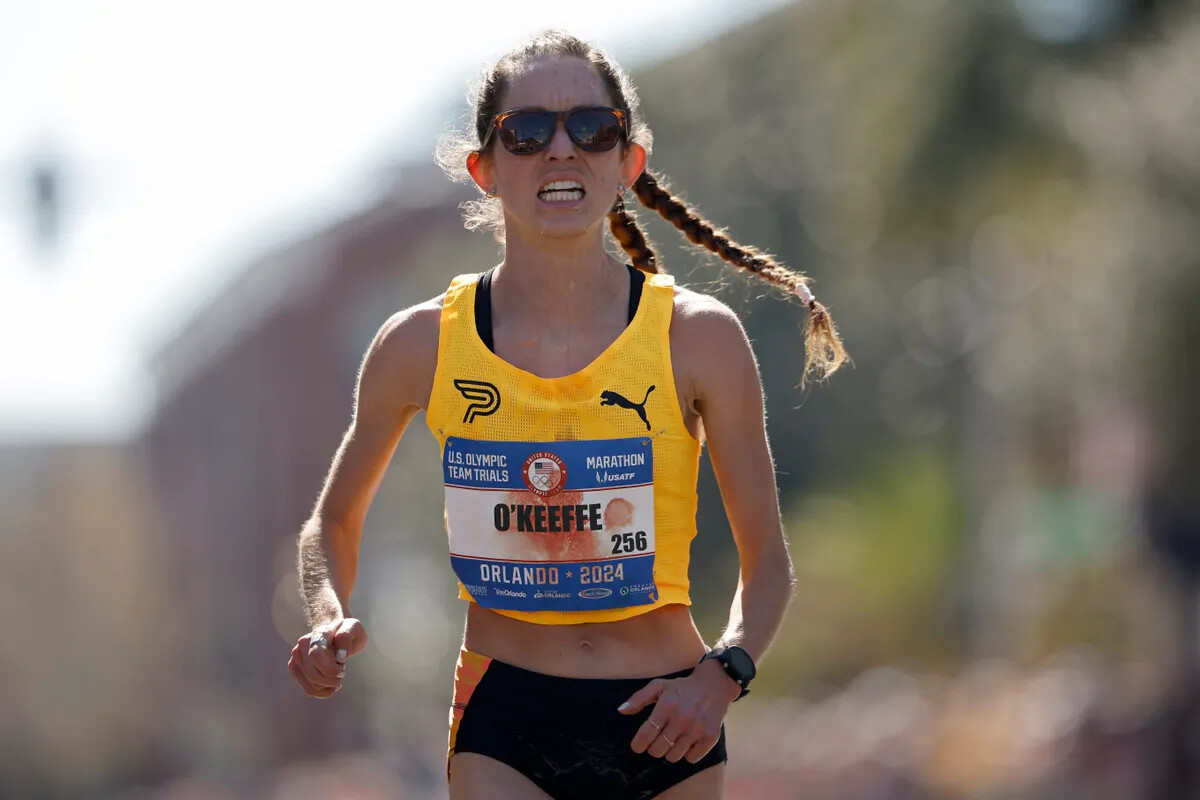
In her first marathon ever, O'Keeffe took a hugely impressive win in the women's race, breaking the U.S. Trials record with a time of 2:22:10.
She was comfortably in front of second-place finisher and American record holder Emily SIsson who ran through the line in a time of 2:22:42.
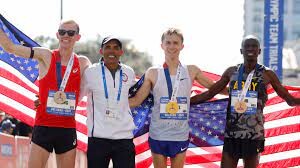
Dakotah Lindwurm couldn't believe her 2:25:31 third-place finish and looked around in shock as she crossed the line.
The largely fat course near Lake Eola Park was made up of an approximately 2.2-mile (five-and-a-half kilometer) loop followed by three eight-mile (12-kilometer) loops to the finish line. It was a sunny but humid 55˚F (13˚C ) at the 10:10 am start.
Women's winner Fiona O'Keeffe: "I'm so excited about this team"
“The goal has always been to make an Olympic team,” Mantz said in a post-race interview.
His mental strategy had been to run each mile for a different person - his mom, his dad, Clayton, with the final lap being for his wife.
“Let’s go to Paris, let’s make this happen,” second-place Young smiled after a close-to-ideal race that unfolded alongside his friend and fellow Utah native Mantz.
Zach Panning had led the way for the majority of the race before Mantz and Young took over the lead and pulled ahead with less than four miles to go. Panning fell back further as Korir took over in the final stretch to secure third.
In the women's race, O'Keeffe detailed the excitement she had felt with eight miles to go, having to remind herself not to "freak out."
"The past couple years I’ve been clawing my way through things," she said, before adding of her victory that she is now "so excited about this team."
Sisson, the women's American record holder in the marathon, has previous experience of the Olympics, having come 10th in the 10,000m at Tokyo 2020.
"I'm elated," she said, reflecting on making her second Olympic team in front of her friends and family.
Lindwurm was still in disbelief as she laughed with the press after the race, revealing ”I’m such an underdog… I was a walk on to my Division II team."
(02/03/2024) ⚡AMPby Sam Peene
2024 US Olympic Trials Marathon
Most countries around the world use a selection committee to choose their Olympic Team Members, but not the USA. Prior to 1968, a series of races were used to select the USA Olympic Marathon team, but beginning in 1968 the format was changed to a single race on a single day with the top three finishers selected to be part...
more...Rhasidat Adeleke and Talitha Diggs head to Millrose Games
The past two women’s NCAA 400m champions, Rhasidat Adeleke and Talitha Diggs, will line up for a 300m clash at the Millrose Games in New York on February 11.
Racing them at this season’s penultimate World Athletics Indoor Tour Gold meeting will be Jamaica’s Leah Anderson and Candice McLeod.
Adeleke has already made a strong start to 2024 as she ran 7.15 for 60m and 22.49 for 200m to improve her own Irish indoor records in Albuquerque on 20 January.
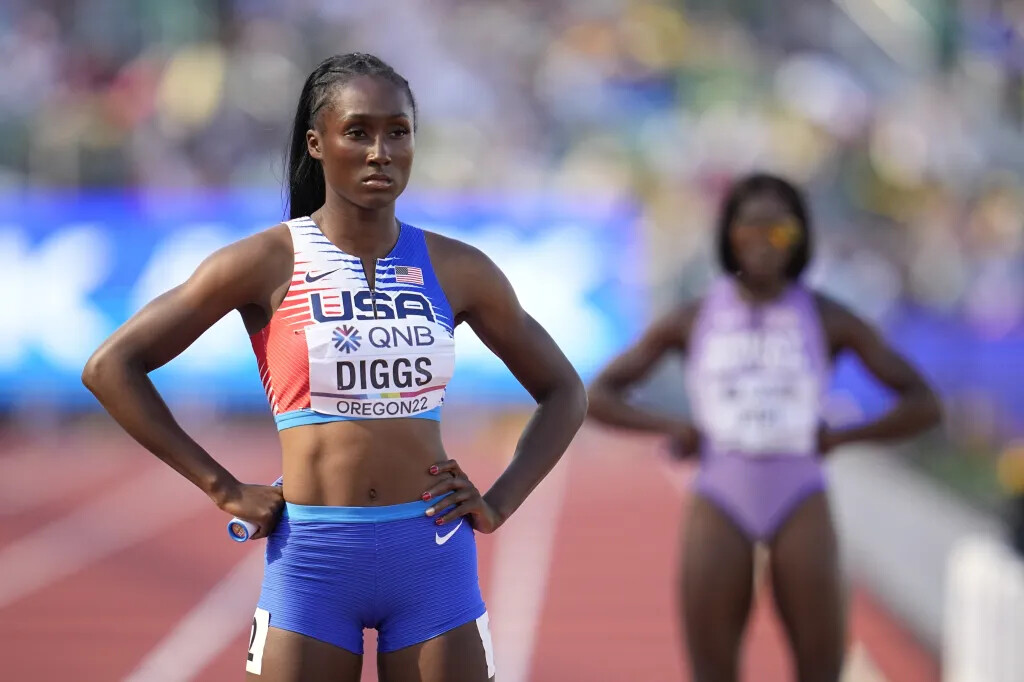
The 21-year-old, who finished fourth in the world 400m final last year in Budapest, has raced 300m once before, in 2022 when she ran a national record of 36.87.
In New York she’ll go up against the athlete who preceded her as NCAA 400m champion, Diggs.
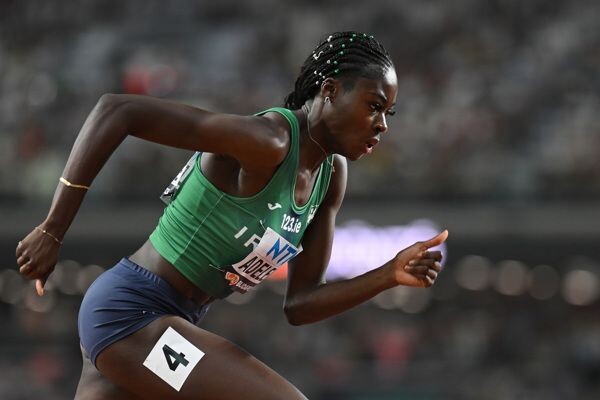
USA’s Diggs is set to make her season debut at this weekend’s World Indoor Tour Gold meeting in Boston, where she will also race the 300m.
New York offers a rematch as her PB of 36.37 was set when winning ahead of Adeleke in Clemson in 2022.
Anderson finished third in last year’s Millrose Games 300m in 36.68, while Olympic and world 4x400m medallist McLeod is set to race the distance for the first time.
Joining the already announced Alicia Monson in the two-mile race in New York will be North American mile record-holder Nikki Hiltz, who won the US 1500m title last year and started 2024 by running 2:34.09 for 1000m.
They will race against a field featuring USA’s Emily Infeld and Courtney Wayment, Japan’s Nozomi Tanaka, and Ethiopia’s Medina Eisa and Melknat Wudu.
In the high jump, the previously announced Yaroslava Mahuchikh will compete against 2016 world indoor champion Vashti Cunningham, NCAA champion Charity Griffith and Asian Games champion Safina Sadullayeva.
(02/03/2024) ⚡AMPby World Athletics
NYRR Millrose Games
The NYRR Millrose Games,which began in 1908 as a small event sponsored by a local track club, has grown to become the most prestigious indoor track and field event in the United States. The NYRR Millrose Games meet is held in Manhattan’s Washington Heights at the New Balance Track & Field Center at the Armony, which boasts a state-of-the-art six-lane,...
more...Kelvin Kiplagat ready to follow Eliud Kipchoge's footsteps
Kelvin Kiplagat, an athlete from Eldama Ravine has opened up on his admiration for marathon king Eliud Kipchoge and World Half Marathon silver medallist Daniel Simiu.
Kelvin Kiplagat is keenly following in the footsteps of former world marathon record holder Eliud Kipchoge and World Half Marathon silver medallist Daniel Simiu.
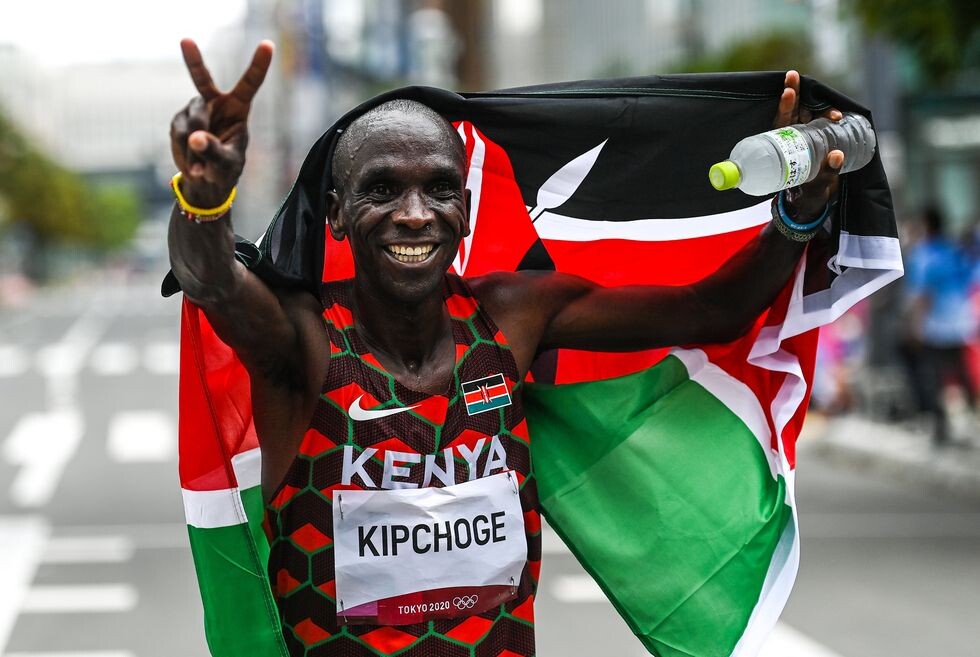
The Eldama Ravine-based athlete has been slowly making strides to match the achievements of his role models and he is surely on the track.
He was in action during the second Athletics Kenya weekend meet held at the Ulinzi Sports Complex where he dominated the men’s 10,000m. He was also in action in the first weekend meet and competed in the 3000m race where he finished fifth.
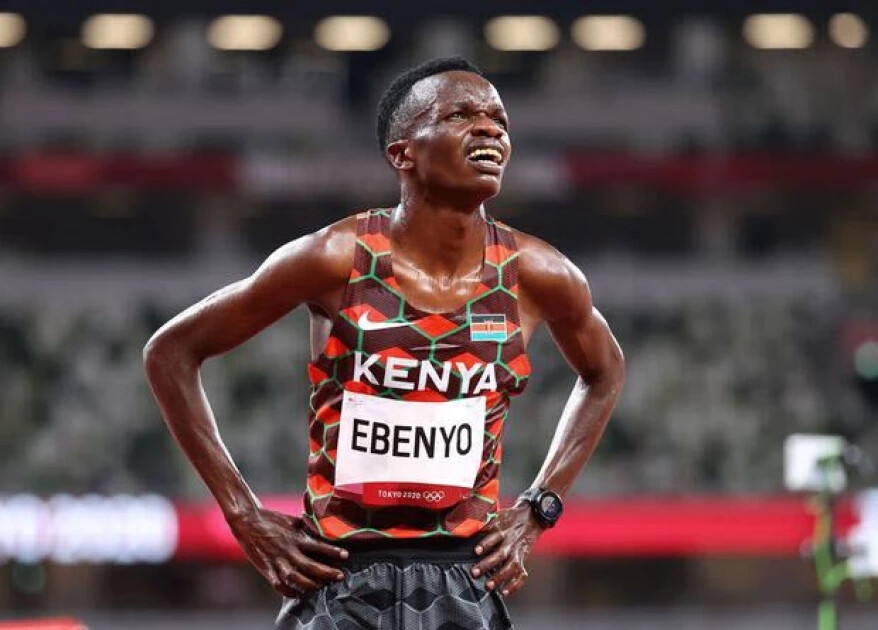
“I look up to my coaches for advice and they inspire me a lot. I also want to be like Eliud Kipchoge and Daniel Simiu who have cemented their places in the world of athletics,” Kiplagat told Pulse Sports.
He will be keen to make his debut in the national team this season, having set eyes on the Kip Keino Classic, the World Cross-country Championships, and the Olympic Games in Paris, France.
Making his first Team Kenya berth will be a dream come true since he has been burning the midnight oil to keep his hopes alive.
“I’m targeting the Kip Keino Classic, Olympics, and the Cross-country championships. I have never represented Kenya before and achieving that will mean that my hard work has finally paid off.
“I started running back in primary, in class seven and I competed up to county level. In class eight, I got to the regional levels and then when I joined secondary school, the Covid-19 pandemic came and disrupted everything,” he said.
But after the pandemic was over, Kiplagat put on his spikes once again and represented his school, Sinonin Secondary School, at the East Africa level where he finished second in the 5000m race.
(02/03/2024) ⚡AMPby Abigael Wuafula
Paris 2024 Olympic Games
For this historic event, the City of Light is thinking big! Visitors will be able to watch events at top sporting venues in Paris and the Paris region, as well as at emblematic monuments in the capital visited by several millions of tourists each year. The promise of exceptional moments to experience in an exceptional setting! A great way to...
more...What Blood Testing Data Reveals About Runners' Health
I used to think running was a panacea. "If the furnace is hot enough, anything will burn, even Big Macs," as the fictional miler Quenton Cassidy once said. Then, about a decade ago, there was a big surge of doubt about the health effects of running. Most prominent was the suggestion that even modest amounts of running might damage your heart-"One Running Shoe in the Grave," as the Wall Street Journal put it-but running was also accused of broader sins like promoting inflammation, causing muscle loss, and wreaking havoc on blood sugar levels.
As a runner and a journalist, I spent a lot of time trying to understand these claims, and reevaluating my own understanding of running's health effects-a process that continues to this day. Part of that process involved going back to the original research that led us to believe that running is healthy. And to be honest, the evidence wasn't as clear as I'd assumed. Does running (or aerobic exercise more generally) really improve health markers, or is it just that healthy people are more likely to choose to run? Do the benefits max out after a few minutes per day, or do they keep growing? Can you outrun a bad diet?
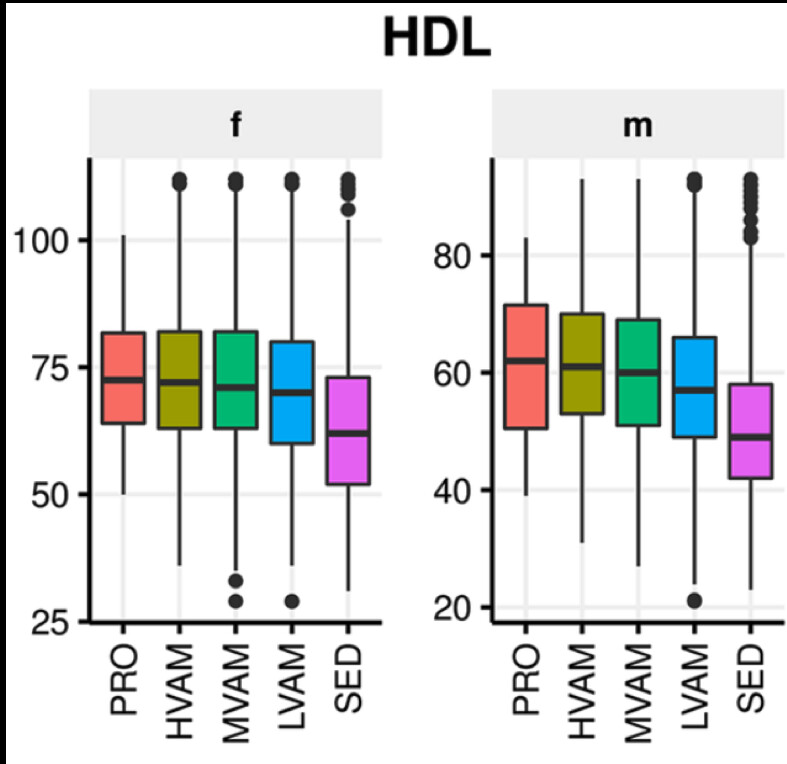
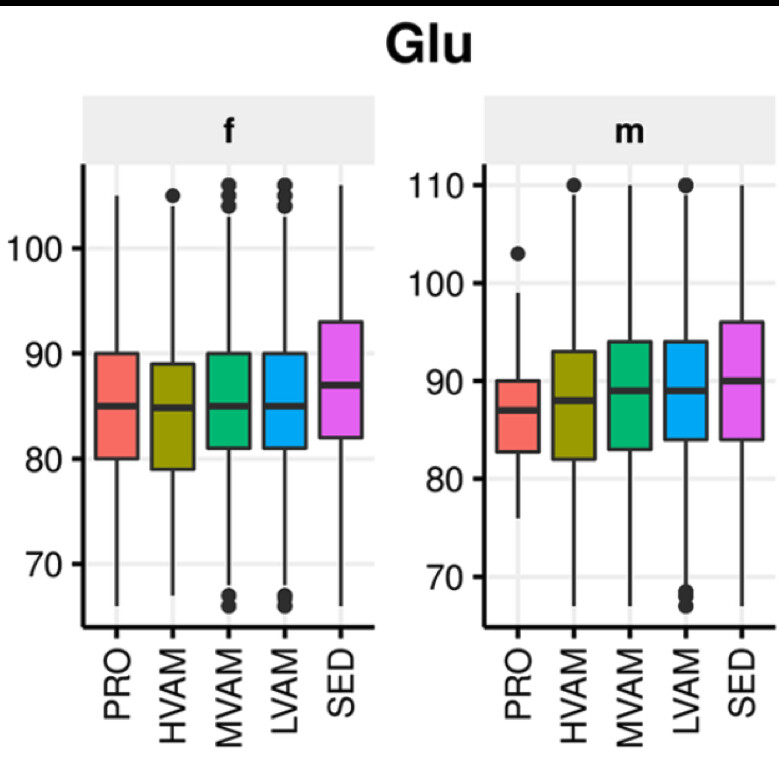
I have opinions about all these questions, but I no longer assume that the answers are obvious. So I'm always interested in new data, like a recent study in PLoS ONE from the science team at InsideTracker, a company that sells personalized blood testing to track various health biomarkers. The paper offers a peek at the aggregated results of more than 23,000 customers who report various levels of running, divided into three groups: low volume (less than three hours of running per week), medium volume (three to ten hours per week), and high volume (more than ten hours per week). For comparison, they also include results from 4,400 sedentary non-runners, and at the opposite end of the spectrum, 82 professional distance runners.
There are two important caveats to point out before diving into the data. First, this is observational data, not a randomized trial. That makes it hard to determine whether running causes any of the patterns in the data (though, as we'll see below, there are some ways to test our assumptions about causation). Second, this is a self-selected cohort. Even the sedentary group is made up of people who are interested enough in their health that they've decided to spring for a service that starts at $699 for a single battery of blood tests. Since this control group is already fairly healthy, detecting any improvements will be more challenging.
The Raw Data
The journal article (which is free to read online) presents data on 27 different biomarkers that were significantly different between runners and non-runners. I'm just going to pick out a few categories that are particularly interesting.
First, here's HDL (i.e. "good") cholesterol levels, for females (f) and males (m) in each of the five groups: pro runners, high-, medium-, and low-volume amateurs (HVAM, MVAM, and LVAM, respectively), and sedentary people.
The biggest difference is between runners and non-runners: runners have clearly higher levels, which is good. And among the runners, the trend is that more running is associated with higher levels. Similar patterns are seen for LDL ("bad") cholesterol and triglycerides: running is good, and more running is better.
The pattern here is much less pronounced. There's still a significant difference between runners and non-runners, but the dose-response effect of more mileage is smaller in men and non-existent for women. The same is true when looking at HgbA1c levels, which offer an estimate of long-term average blood sugar levels rather than a single snapshot. In that case, there's a more pronounced difference between runners and non-runners, but no dose-response response effect. For blood sugar, then, running is good but more running isn't necessarily better.
One key point: the sedentary control group has remarkably good blood sugar levels, with an average below the prediabetes cutoff. Given that 98 million Americans have prediabetes, this confirms that the control group is already pretty healthy. If you were to compare runners to the average population, you'd probably see a bigger effect.
Another group of biomarkers is associated with chronic low-grade inflammation. The pattern here is a little more complicated, but data on C-reactive protein, white blood cell count, and ferritin collectively suggest that greater volumes of running are associated with lower levels of inflammation. The fact that ferritin is considered a marker of inflammation was a surprise to me, since I think of it as an indicator of iron levels in endurance athletes. But it turns out ferritin levels can mean different things in different contexts.
For most of the biomarkers, there's a fairly smooth trend from sedentary to pro runners. But there are a few examples where the pro runners are noticeably different from everyone else, even the amateurs who claim they're running more than ten hours a week. Most notably, the pro runners tended to have low magnesium levels-an observation that mirrors earlier data from British Olympic track athletes. The British study also found that athletes with a history of tendon problems were most likely to have low magnesium levels, which suggests that it's something to watch for if you're training hard.
Is It All About BMI?
All the results I mentioned above were statistically adjusted for body-mass index, age, and sex. That's important, because there were significant differences in BMI among the groups. Here's that data:
Now, I look at this graph and think, "Yep, all else being equal, the more you run the less you weigh." This used to strike me as a painfully obvious statement. The current scientific consensus, on the other hand, is that exercise is ineffective for weight loss. And it's true that lots of studies have assigned people to exercise, sometimes quite vigorously, and have seen underwhelming results for weight loss. This is a complex topic whose nuances I'll leave for another day, but suffice to say that the new data agrees with my feeling that, if you're running more than an hour a day, you very likely weigh less than you would if you weren't running.
You can get another level of insight by adding in some of the genetic data that InsideTracker also collects from some of its customers. There are a large number of separate gene variants that are associated with higher BMI; by checking which of these variants a given individual has, the researchers calculated a "polygenic risk score" for obesity. In the sedentary group, those with higher risk scores tended to have higher BMI. Among the high-volume and pro runners, in contrast, that trend was flattened: those with higher risk scores had similar BMI to those with lower scores. Though the sample size was too small to draw definitive conclusions (since relatively few customers opted to get genetic testing), the results suggest that running counteracted the gene variants associated with obesity.
The BMI data raises another important question: are all the other apparent health benefits of running just secondary effects of lower BMI? Here they use a cool technique called Mendelian randomization (which I wrote about in another context earlier this year). It's a way of turning a large observational study into a randomized trial. The randomization occurs at birth: as noted above, some people have gene variants that predispose them to have a higher BMI. These variants are randomly distributed, so if people with the low-BMI versions tend to also have better cholesterol scores (for example) regardless of whether or not they run, it suggests that BMI is what's driving the cholesterol scores.
The results of the Mendelian randomization-again limited by low sample numbers-are somewhere in the middle. It does appear that BMI explains much of the group's difference in cholesterol and inflammation levels, for example-but not all of it. For example, gene variants didn't predict LDL levels, suggesting that it's an independent effect of running.
But the closer you look, the blurrier the line between genes and behavior gets. Some of the genes associated with exercise are also associated with motivation and self-control; people who exercise a lot are also more highly motivated to eat healthily; and so on. We're back to the challenge I mentioned at the top: teasing out the independent health effects of going for a run is really hard. The InsideTracker researchers conclude that "a holistic wellness lifestyle approach is in practice the most likely to be most effective toward preventing cardiometabolic disease." That borders on tautological, but their data adds another small brick to the pile of evidence suggesting that endurance exercise, even or perhaps especially in large quantities, is a useful part of that holistic wellness lifestyle.
(02/03/2024) ⚡AMPby Trail Runner Magazine
How Little Strength Training Can You Get Away With?
To be a maximalist, you must first be a minimalist. That's an aphorism I first heard from Michael Joyner, the Mayo Clinic physiologist and human performance expert, and it resonates. To truly reach your potential in one or a few areas, you have to be disciplined about all the other ways in which you could fritter away your valuable time and energy. Excellence requires tough choices.
All this is to say that when it comes to strength training, I'm not ashamed to admit that my number one question is "How little can I get away with?" I'm fully convinced that strength training has important benefits for health and performance, and I recognize that lifting heavy things can be a source of meaning and self-mastery. But I've got miles to run before I sleep and, metaphorically, a bunch of errands to run before my kids get home, so a recent review in Sports Medicine caught my eye. An international group of researchers, led by David Behm of Memorial University of Newfoundland and Andreas Konrad of Graz University in Austria, sum up the existing research on minimalist resistance training: how low can you go and still get meaningful gains in strength and fitness?

For starters, let's acknowledge that making meaningful gains is not the same as optimizing or maximizing your gains. There's a general pattern in the dose-response functions of various types of exercise: doing a little bit gives you the biggest bang for your buck, but adding more training leads to steadily diminishing returns (and eventually, for reasons that aren't as obvious as you might think, a plateau). Those diminishing returns are worth chasing if you're trying to maximize your performance. But if your goal is health, more is not necessarily better, as we'll see below.
In a perfect world, you'd like to see a systematic meta-analysis of all the literature on minimalist strength training, meaning that you'd pool the results of all the different studies into one big dataset and extract the magic training formula. Unfortunately, the resistance training literature is all over the map: different types of strength training, study subjects with different characteristics and levels of experience, different ways of measuring the outcome. That makes it impossible to meaningfully combine them in one dataset. Instead, Behm and Kramer settled for a narrative review, which basically means reading everything you can find and trying to sum it up.
Their key conclusion is that "resistance training-hesitant individuals" can get significant gains from one workout a week consisting of just one set of 6 to 15 reps, with a weight somewhere between 30 and 80 percent of one-rep max, preferably with multi-joint movements like squats, deadlifts, and bench press. That's strikingly similar to a minimalist program I wrote about a couple of years ago: that one involved a single weekly set of 4 to 6 reps, but the lifting motions were ultra-slow, which heightens the stimulus. You don't even necessarily have to lift to failure, though you probably need to get within a couple of reps of it.
The data that Behm and Kramer looked at came from studies that typically lasted 8 to 12 weeks. One of the unanswered questions is whether such a minimalist program would keep producing gains on a longer timeframe. You'd clearly need to continue increasing the weight you lift to ensure that you're still pushing your body to adapt. But do you reach a point where further progress requires you to increase the number of sets, or the number of workouts per week? Maybe-but it's worth recalling that we're not trying to maximize gains here, we're just trying to achieve some hazily defined minimum stimulus. For those purposes, the evidence suggests running through a rigorous full-body workout once a week is enough to maintain a minimum level of muscular fitness.
There's another, less obvious angle to minimalist strength training that researchers continue to grapple with. Duck-Chul Lee of Iowa State and I-Min Lee of Harvard, both prominent epidemiologists, published a recent review in Current Cardiology Reports called "Optimum Dose of Resistance Exercise for Cardiovascular Health and Longevity: Is More Better?"
The question echoes a debate that flared up a decade or so ago about whether too much running is bad for you, in which Duck-Chul Lee played a key role. Back in 2018, he also published a study of 12,500 patients from the Cooper Clinic in Dallas which found that those who did resistance training were healthier-but that the benefits maxed out at two workouts a week, and were reversed beyond about four workouts a week. At the time, I assumed the result was a fluke. But the new article collects a larger body of evidence to bolster the case. The newer data suggests that about an hour of strength training a week maximizes the benefits, and beyond two hours a week reverses them. Lee and Lee hypothesize that too much strength training might lead to stiffer arteries, or perhaps to chronic inflammation.
Now, when Duck-Chul Lee and others produced data suggesting that running more than 20 miles a week is bad for your health, I was brimming with skepticism and went over the data with a fine-tooth comb. I'm similarly cautious about these new results, and have trouble believing that there's anything unhealthy about doing three weekly strength workouts. But they do put the idea of minimalist strength training in a different light. Maybe you're not maximizing strength or muscle gains, but it's possible that you're optimizing long-term health-especially if the reason you only hit the gym once or twice a week is that you're too busy hitting the trails.
(02/03/2024) ⚡AMPby Trail Runner Magazine
Miami Marathon finisher medals spark airport security concerns
Finishers of the 2024 Miami Marathon on Jan. 28 were warned, but still, hundreds of participants went home without their medals when the TSA (Transportation Security Administration, for Canadians) confiscated the medals, likening them to deadly ninja throwing stars.
The 2024 medal is shaped like a golden sun with the event’s orange palm tree logo in the centre, designed to portray the sunrise of Miami, Miami Beach, Brickell and Coconut Grove areas (which the course runs through). The sun’s rays, however, have very sharp points–plus, it spins. In anticipation of potential issues, race organizers released a statement two days before the event, advising marathon participants to pack the medal in checked luggage or mail it home, rather than wearing it to the airport.Ricky Deane, a 52-year-old from Elmhurst, Ill., was one of the unfortunate runners who had his medal confiscated. Deane had placed the spikey medal in his carry-on bag, leading security to remove it as a potential weapon. Now, Deane is left with only a photo and memories.
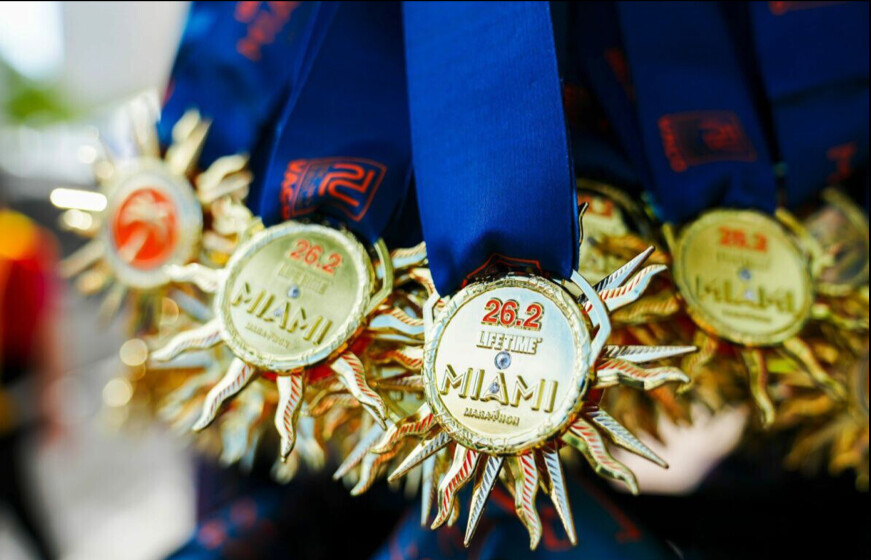
The same thing happened with half-marathon finisher Alfred Scaletta, who wore his medal while going through security on his flight to Chicago. He was told it was because the medal had a spinning feature, and now, he is requesting that the race send him a replacement.Each year, more than 4,000 of the 18,000 participants travel to the race by plane from 49 states and 75 countries. Although the TSA website states that it allows carry-on items such as cowboy spurs, ice skates, antlers, knitting needles, cigar cutters, corkscrews, bowling balls and even fidget spinners, TSA agents have final discretion over what can be allowed on flights.
“This was proactive on our end. Once we received the initial batch of medals, we thought, Hey, you know what? Someone could misinterpret this,” Miami race director Frankie Ruiz said to the Miami Herald. “Runners love to wear them [the medals] after the race. We just wanted to give people a heads-up—it has not happened in the past—but in case there’s an agent who flags it. We’re thinking ahead for people.”
(02/03/2024) ⚡AMPby Running Magazine
How to increase your weekly mileage with minimal effort
When trying to add to their weekly mileage totals, a lot of runners jump immediately to longer long runs and bigger workouts. But this may actually do more harm than good. For a number of reasons, lengthening your warmup and cooldown are likely the safest, and easiest, ways to add extra mileage.
First, the warmup and cooldown are done at a slow, easy pace. If there’s anything we’ve learned from runners like Eliud Kipchoge or Molly Seidel, it’s that you have to run slow to run fast. These runners do up to 80 per cent of their mileage at a very slow pace, which helps them run more without increasing the stress on their bodies. By increasing the length of your warmup and cooldown, you’re increasing the time you spend on your feet without stressing your body with more hard running.

Second, it’ll help you better prepare your body for your workout. If you’re like a lot of runners, you probably cut your warmup and cooldown a little bit short in favour of just getting the workout done. We get it–sometimes you just want to get on with it, and when you’re tired from a hard workout, cooldowns can feel like cruel punishment. But they are both important aspects of training, since they help prepare your body for the work ahead (the warmup) and helping kick-start the recovery process (the cooldown) so you’ll be ready for your next speed session.
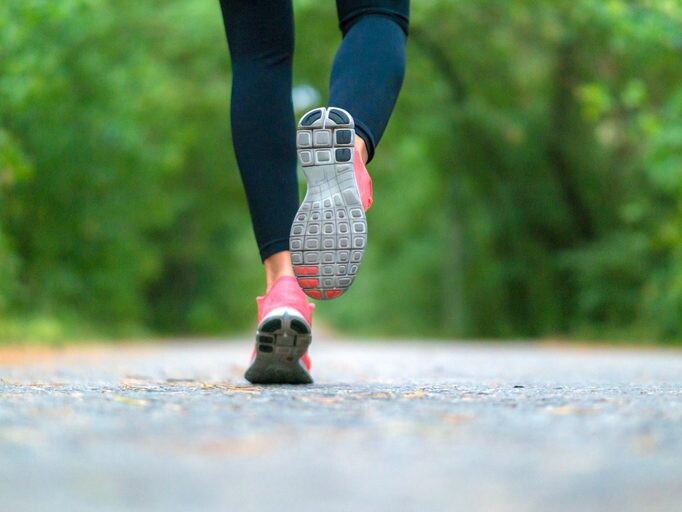
Finally, the warmup and cooldown are a great place to add mileage because, other than the extra time put in, you’ll hardly notice the change–it’s like free mileage! Simply start by adding five minutes more of easy jogging on either side of your workout (on workout days), and you can gradually continue to add to your warmups and cooldowns in this way until you’re satisfied with your weekly mileage total. While it sounds like a small amount, the extra kilometers add up.
You’re not doing workouts, you say? If you have race goals, at some point you should be doing speedwork. There are many ways to gradually introduce speedwork without getting injured. (But if you’re really not ready, you can still increase your weekly mileage by simply adding five minutes to the start and end of your runs.)
(02/02/2024) ⚡AMPby Brittany Hambleton
Emily Sisson, Olympic Marathon Trials favorite, is ready for Saturday
Emily Sisson is the American record holder (2:18:29) in the marathon and the pre-race favorite to win the 2024 US Olympic Marathon Trials.
At the time of publication, 64.2% of you are picking her to win the Trials in the LRC $20,024 Prediction Contest Sponsored by Relay.
Sisson talked to LRC this week via video conference, and by all accounts her buildup for Orlando has gone very well.
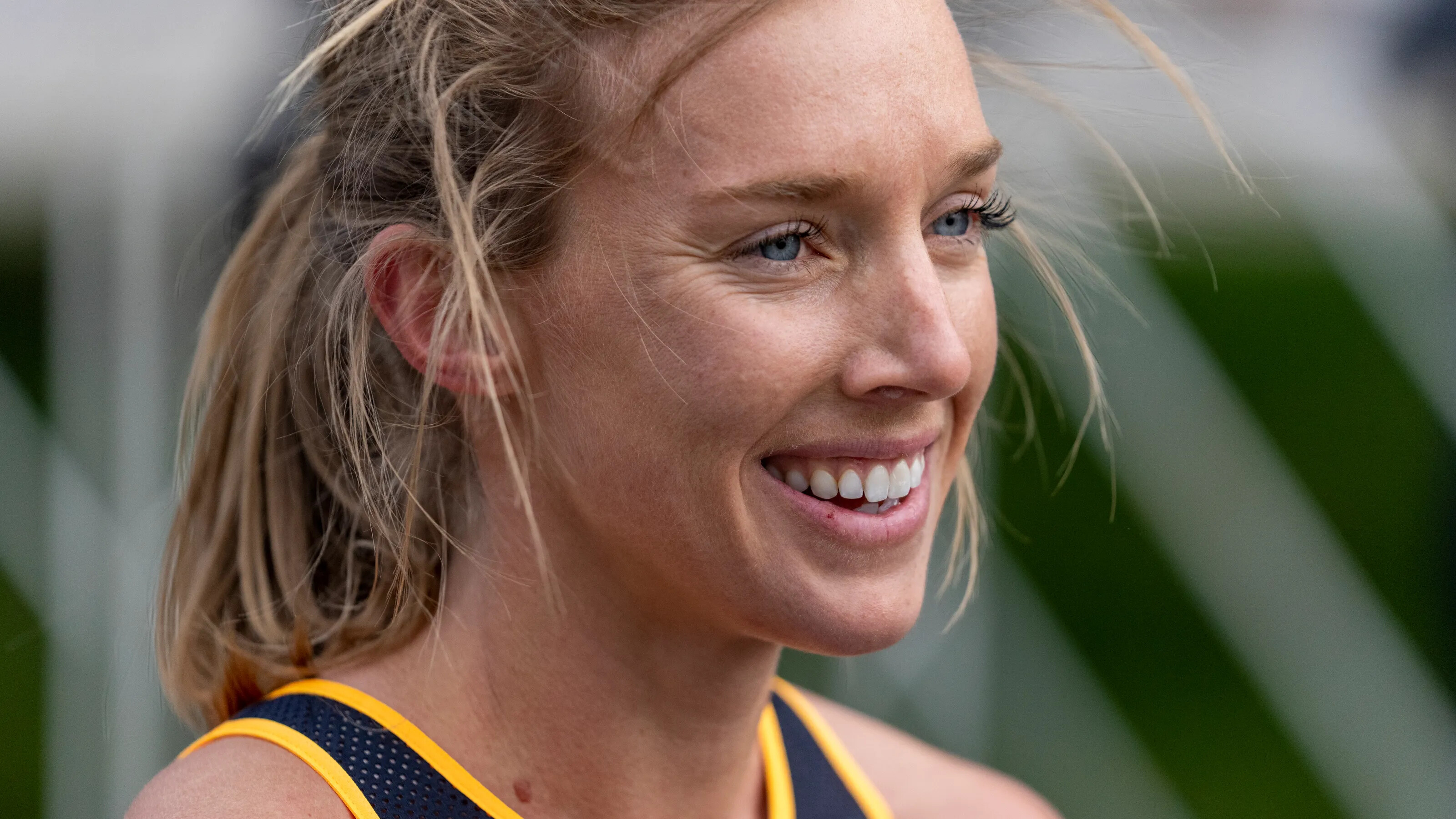
“Everything’s been better, all the long runs, all the tempos, and actually my long interval workouts, those have actually been better than they’ve been before.”
When Sisson was asked to compare her fitness and buildup to the 2022 Bank of America Chicago Marathon where she broke the American record, she said:
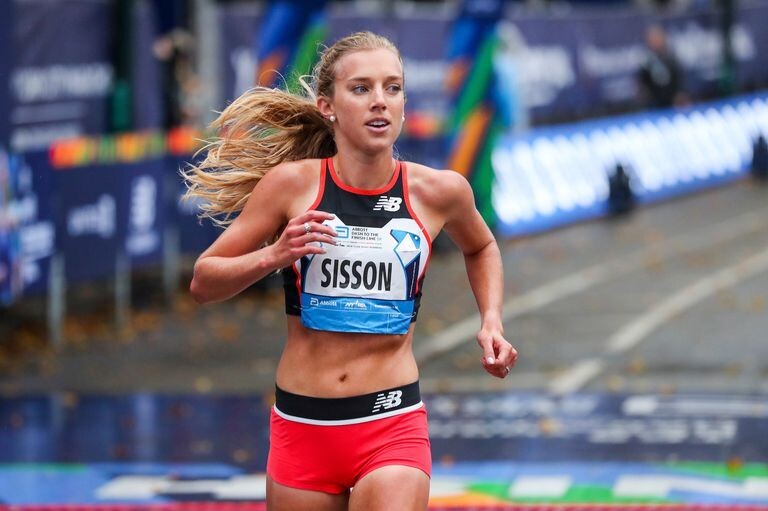
Everything’s been better, all the long runs, all the tempos, and actually my long interval workouts, those have actually been better than they’ve been before.
The workouts like on paper, like the times they’re all better. I think like I get confidence from that, but also just I’m feeling good and I’m feeling strong. So the training’s been good.
Sisson ran a 30:52 time trial on the roads in Arizona, which is just slightly slower than her official track PB of 30:49. Sisson, unlike Trials #2 contender Betsy Saina who ran a workout with 12 male pacers in Kenya, ran the workout all alone although her husband Shane was next to her on a bike. Sisson wasn’t blown away by almost setting a 10k PR in practice, as she said her track PR should be much faster. But she was pleased she could run that pace by herself. “I was happy that I was able to push myself that hard on my own,” she said.
Lessons from Chicago 2023
Chicago 2023 didn’t go as well as Chicago 2022 for Sisson, as she developed a side stitch later in the race and ran 2:22:09 for 7th place.
Sisson now views the Chicago 2023 setback as a positive experience as she learned from it. “We found some videos early on in Chicago and I just looked a little less fluid this past fall than I did in my 2022 Chicago. It was really subtle, like there was a little bit more movement in my upper body. So, we’re trying to like stay on top of that a bit more this time just to make sure nothing like a side stitch or anything else breaks down again,” she said, adding she worked with chiropractor John Ball.
Respect for the competition and the marathon distance
Sisson enters the Trials not only fit but healthy. When asked whether she worries about the other competitors in the race, she said, “It’s not that I don’t worry about my competitors. It’s not that I don’t think about them, but, I just feel like the marathon’s different than like a half marathon or a 10k. When I go into those races, I’m just trying to be as fit as I can and try to be fitter than my other competitors. But in the marathon, you are racing your other competitors, but you’re also racing the marathon itself. So it doesn’t matter, what your competitors are doing.”
“I feel fit and I feel healthy. With a marathon, that’s not everything, but those are two big parts of it. So I am happy with that. I’m happy with how training went,” Sisson said.
Getting a Real Olympic Experience
While Sisson made the 2020 Olympic in the 10,000m, she, like Aliphine Tuliamuk, said she missed out on the traditional Olympic experience because of the Covid protocols. She’d like to get another shot at it. “Being an Olympian is like the biggest dream,” she said of a goal that started when she watched Olympic gymnastics with her mom as a kid.
“I was so thankful they happened in 2021, but it was definitely a different Olympic experience than Olympics prior. So I’d love to get back there.”
Of Sisson’s 5 marathons, the only one that went poorly was the 2020 Olympic Marathon Trials in Atlanta where she dropped out.
Now with some time to reflect, Sisson has a better picture of what she think went wrong. “I think I went too hard in the buildup. I think my body, when I was standing on the start line, I think I was tired and, and I just didn’t realize it at the time because I was so new to the marathon, I thought it was just so normal to be tired, but there were things afterwards that I looked back on and there were signs that maybe I’d pushed it too hard in training.”
Sisson has backed off a little in her training this time. “So we did try to focus this time on getting good training in, getting in a good buildup, but just not overdoing it. I don’t wanna leave my race in training,” she said.
Sisson does believe she can do well in a hilly marathon. If she qualifies for Paris, she’ll get the chance as the Olympic course has a massive uphill heading to Versailles.
(02/02/2024) ⚡AMPby Weldon Johnson
2024 US Olympic Trials Marathon
Most countries around the world use a selection committee to choose their Olympic Team Members, but not the USA. Prior to 1968, a series of races were used to select the USA Olympic Marathon team, but beginning in 1968 the format was changed to a single race on a single day with the top three finishers selected to be part...
more...Magdalyne Masai eyeing a great start to her season at Sevilla Marathon
Magdalyne Masai has been confirmed for the Sevilla Marathon where she hopes to start her season on a good note.
The 2023 Vienna City Marathon champion Magdalyne Masai has been confirmed for the Sevilla Marathon scheduled for Sunday February 18.
Masai will be opening her season at the event with the hope of stunning her opponents and continuing her hot streak from last season.
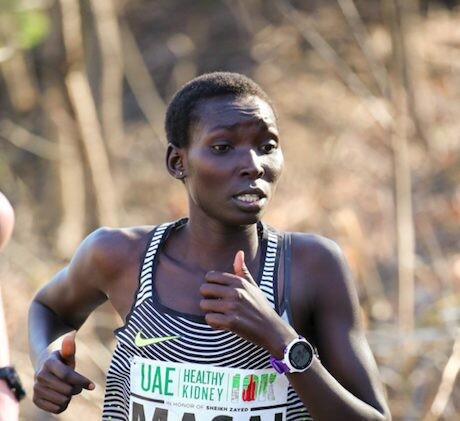
Last season, the Kenyan was on fire, winning the Vienna Marathon and also finishing third at the Roma Ostia Half Marathon. However, she stumbled at the Frankfurt Marathon where she finished ninth but she will be out to prove her marathon prowess once again.
She will be up against Namibian long-distance runner Helalia Johannes, who is aged 43 but still has it in her legs to run well.

The Namibian only competed once last season, at the Daegu International Marathon that saw her finish 10th and she will seek to start her season on a good note this year.
Azmera Gebru, an Ethiopian runner, has also been confirmed for the event and she will be out to give Masai a run for her money.
Gebru returns to competitive running after a mixed two years and she has her fingers crossed to run well this season.
Last year, she was in action at the Zurich Marathon in Barcelona which saw her finish sixth while in 2022, she was confirmed for the Prague Marathon where she failed to finish the race.
The race organizers of the event are still announcing the elite athletes of the event which will promise fireworks owing to the women who have already been announced.
(02/02/2024) ⚡AMPby Abigael Wuafula
Zurich Marathon Sevilla
This urban, flat, fast and beautiful brand new race course will drive athletes through the most beautiful monuments of the city. Zurich Maraton de Sevilla brings the unique opportunity to brake the Best personal result over the mythical distance to all the athletes, professional or age groupers, in one of the most perfect international marathon circuits. This fast marathon takes...
more...Kibiwott Kandie and Ruth Chepngetich will lead strong fields to the Barcelona Half Marathon
Kibiwott Kandie and Ruth Chepngetich will lead strong fields to the Barcelona Half Marathon with the aim of shattering the course records.
The race organizers of the 34th Barcelona Half Marathon have expressed their thrill ahead of the event set for Sunday February 11 with more than 28,000 confirming participation in the largest half marathon in Spain and the second largest in Europe.
The organizers have also expressed interest in achieving new course records in both the men’s and women’s races. The men’s course record currently stands at 58:53 while the women’s is 1:04:37.
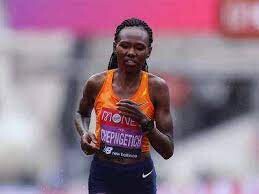
They will be banking on the 23 international elite athletes who will be competing for the top prize. In the men's field, Kibiwott Kandie stands out.
The three-time Valencia Half Marathon champion and former world record holder over the distance will be aspiring for a podium finish.
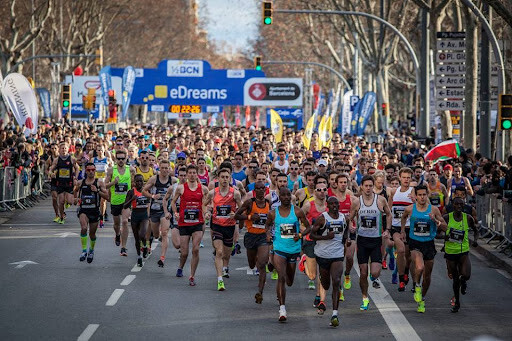
Also seeking for top honors will be Prague Half Marathon winner Philemon Kiplimo, Mathew Kimeli (58:43), and Hillary Kipkoech (59:22).
Tanzania’s Gabriel Geay will also be in the mix with the hope of having a great build-up ahead of his return to the Boston Marathon.
In the women’s race, the rival to beat will be two-time Chicago Marathon champion Ruth Chepngetich. She is the 2019 World Marathon champion and also holds the fourth fastest time over the distance.
Her main opponent will be her compatriot Joyciline Jepkosgei, runner-up in the world half marathon in 2018 and who already ran the Mitja de Barcelona achieving a personal best of 1:04:46.
The formidable duo will be joined by the Ethiopian Senbere Teferi and another Kenyan, Gladys Chepkurui, both with achieving under one hour and six minutes.
(02/02/2024) ⚡AMPby Abigael Wuafula
Barcelona Half Marathon
The half-marathon in Barcelona, also known as the Mitja Marató de Barcelona. It’s the second largest running event in Barcelona next to the Marathon. The route takes the runners from the Arc de Triomf, by the old town to the Plaça Catalunya. From there it goes down the famous Ramblas and along Avenida del Paral·lel. Then it goes through the...
more...National record holder Kengo Suzuki joins Tokyo Marathon field
Japanese national record-holder Kengo Suzuki will be part of a strong Tokyo Marathon men's field, led by two-time Olympic champion Eliud Kipchoge of Kenya, organizers said Tuesday.
The March 3 marathon is the last of the two remaining "final challenge" races for Japan's third and last spot in the men's marathon at the Paris Olympics.
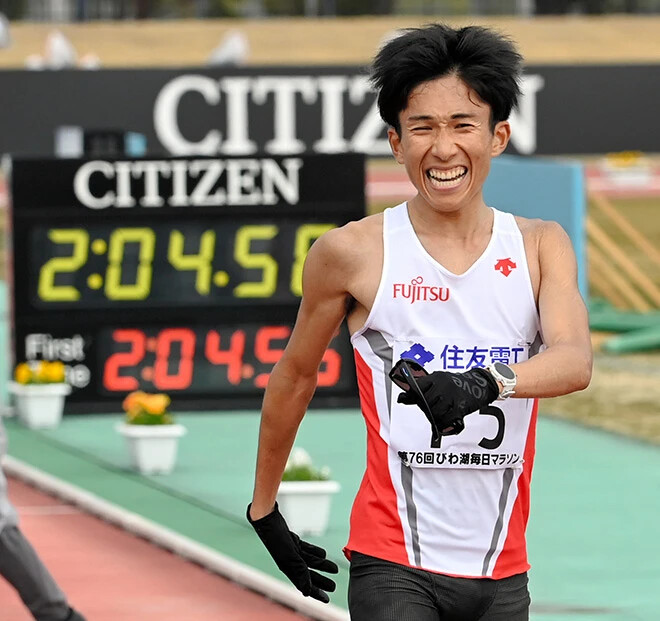
Also invited are Ichitaka Yamashita, Kenya Sonota and Kazuya Nishiyama, who represented Japan at last summer's world athletics championships in Budapest.
The Osaka Marathon, scheduled for Feb. 25, is the second of the three races, the first having taken place in Fukuoka in December.

Naoki Koyama and Akira Akasaki have already clinched their Paris Olympic berths by finishing first and second, respectively, at October's Marathon Grand Championship in Tokyo.
The Tokyo Marathon women's race will feature Hitomi Niiya, runner of Japan's third-fastest marathon, and Sifan Hassan of the Netherlands, who won both the 5,000 and 10,000 meters at the Tokyo Olympics in 2021.
(02/01/2024) ⚡AMPby The Japan Times
Tokyo Marathon
The Tokyo Marathon is an annual marathon sporting event in Tokyo, the capital of Japan. It is an IAAF Gold Label marathon and one of the six World Marathon Majors. Sponsored by Tokyo Metro, the Tokyo Marathon is an annual event in Tokyo, the capital of Japan. It is an IAAF Gold Label marathon and one of the six World...
more...Kipngetich Ngeno on why he looks up to Olympic silver medalist Ferguson Rotich
Kipngetich Ngeno has disclosed why he looks up to Ferguson Rotich and how qualifying for the Paris Olympic Games will change his life.
Former World Under-20 800m silver medalist Kipngetich Ngeno has shared why he looks up to Olympic Games 800m silver medalist Ferguson Rotich.
Ngeno noted that he loves Rotich’s style of running and the fact that he has accomplished great milestones on the track including competing at the World Championships, Commonwealth Games, African Championships, and Olympic Games.
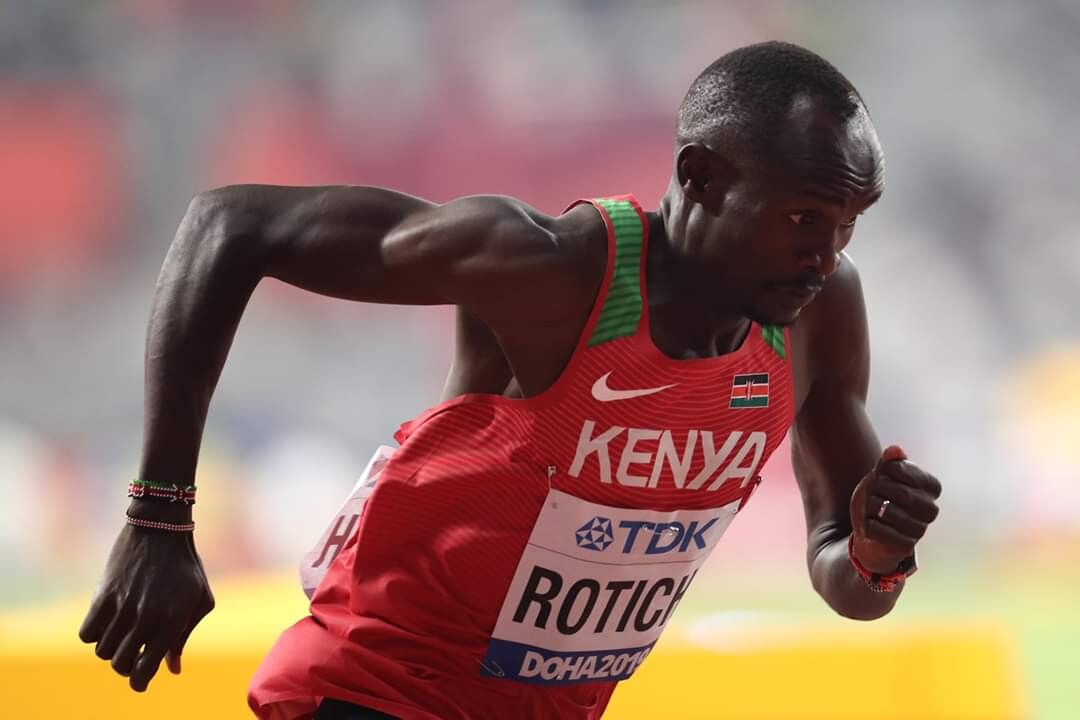
Just like Rotich, Ngeno would like to make the Olympic team someday and come back home with a medal. He opened up on the significance of having the Olympic title to his name.
“Ferguson Rotich inspires me a lot…I want to run in the Olympics like him. I have worked with him in a couple of events in 2019 and last year. If I make the cut to this year’s Olympics, I will be just like him.
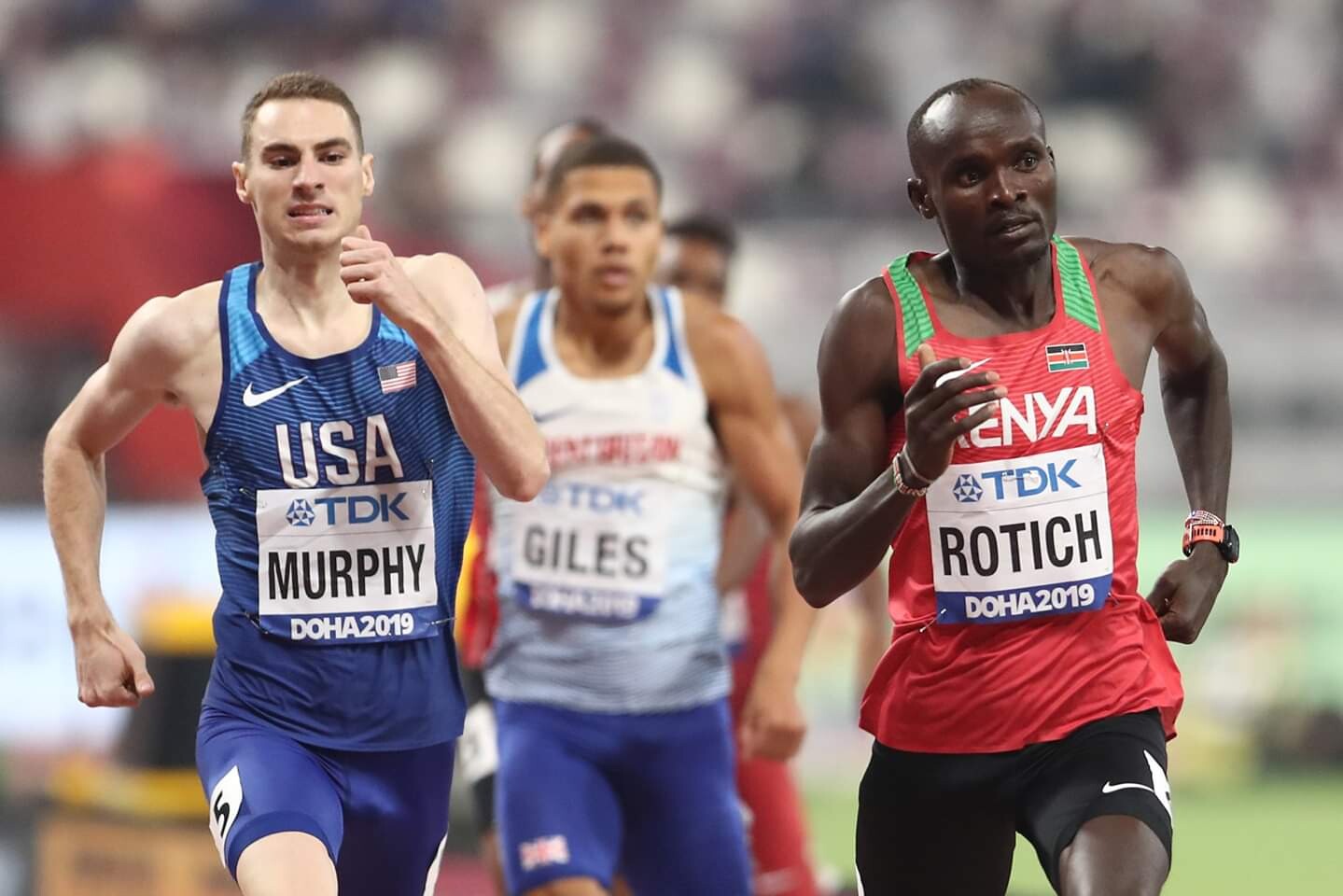
“I know my life will change when I compete at the Olympics and also my profile will improve,” Ngeno said.
Meanwhile, Ngeno was also in action at last year’s World Championships in Budapest, Hungary, competing alongside World Under-20 800m champion Emmanuel Wanyonyi, Rotich, and the then defending champion Emmanuel Korir.
He, however, did not proceed to the final of the event after faltering in the semifinal. Despite the setback, Ngeno had a lot of take aways from the global showpiece.
“I learnt a lot of things from there and I want to polish up on my shortcomings so that I can make the Olympic team when I go for the trials. I’m working on my endurance and speed and hopefully by April, my body will be okay,” he said.
(02/01/2024) ⚡AMPParis 2024 Olympic Games
For this historic event, the City of Light is thinking big! Visitors will be able to watch events at top sporting venues in Paris and the Paris region, as well as at emblematic monuments in the capital visited by several millions of tourists each year. The promise of exceptional moments to experience in an exceptional setting! A great way to...
more...Doping-approved games receive massive financial boost ahead of first-ever event in 2025
The doping-approved Enhance Games has received a huge financial boost from the co-founder of PayPal, Peter Thiel, and cryptocurrency investor Christian Angermayer among other billionaires.
Aron D’Souza, the man behind the doping-enthused Enhanced Games, has revealed he received millions of dollars in financial backing for his entrepreneurial idea a year and a half before his first planned Games in 2025.
As per the Canadian Running Magazine, D’Souza revealed that German-American billionaire and co-founder of PayPal, Peter Thiel, has invested a “single-digit million-dollar number” into the Enhanced Games.
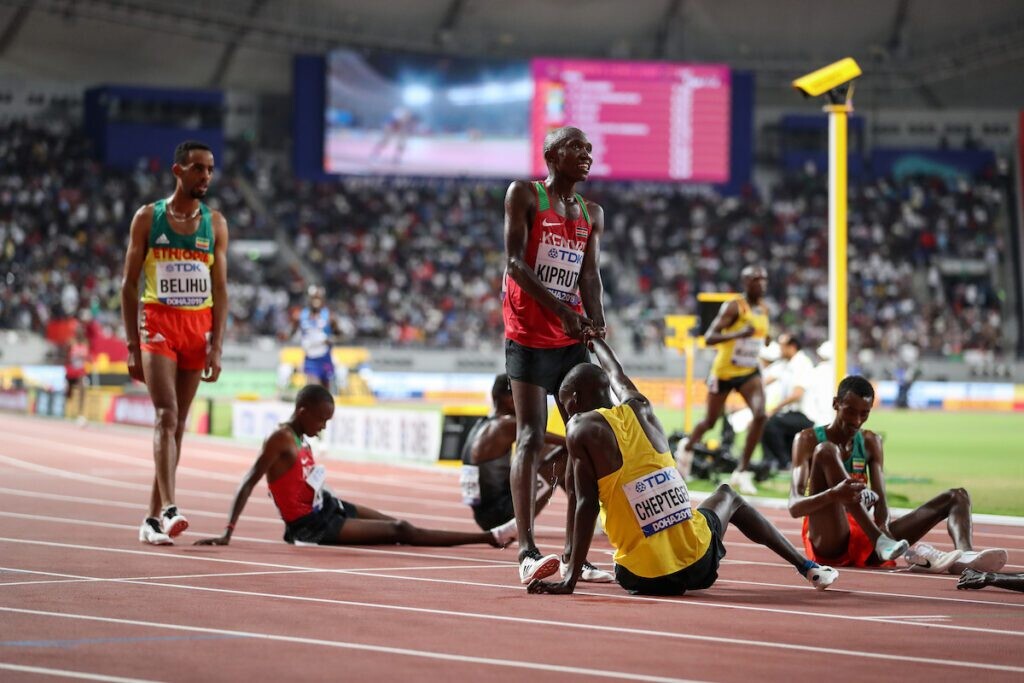
He disclosed that Thiel isn’t the only investor on board since cryptocurrency investor and billionaire Christian Angermayer and Balaji Srinivasan, former CTO of crypto exchange Coinbase, have also invested in his idea.
Meanwhile, D’Souza wants to provide an alternative to what organizers perceive as a ‘corrupt Olympics’ and he openly criticizes the International Olympic Committee (IOC) for its alleged exploitation of athletes, lack of payment of athletes, and rejection of “enhanced” world records.

On their website, they openly speak about using science and focusing on core sports, aiming to break world records and ensure fair compensation for athletes.
They insist that performance-enhancing drugs, when used responsibly, can significantly enhance training outcomes and allow athletes to reach their full potential.
“The Olympic Games are this ancient model reinvented by a colonialist aristocrat in 1896 for the Victorian world.
“We need to design a modernized Games for social media [like TikTok and Instagram] and broadcast television for short attention spans,” he added.
The Enhanced Games will focus on a limited number of events that are of high interest, like track and field, and swimming.
“The core focus of the Games is breaking world records. We only want athletes who have the potential to break world records in sports that actually matter. And so by having a much narrower set (of events), we can deliver much more cost-effectively,” he said.
Speaking about the prize money, the Enhanced Games competitors will be paid a base rate for competing, with bonuses for winning events and setting world records.
“We anticipate there’ll be multi-million-dollar prize pools for breaking world records. We have to create real incentives for athletes to jump ship from this very established prestigious system,” he added.
(02/01/2024) ⚡AMPby Abigael Wuafula
Molly Seidel withdraws from Olympic Marathon Trials due to injury
Tokyo Olympic bronze medalist Molly Seidel announced she is withdrawing from Saturday’s U.S. marathon trials for the Paris Games due to a knee injury.
Seidel, 29, said in a video posted Thursday that she suffered a knee injury a month ago, couldn’t run on it and got an MRI that revealed a broken patella and a partially torn patella tendon.
“I have done everything in my power over this last month to try and get myself to the (starting) line,” she said. “I’ve had just the most incredible physios and doctors doing everything in their power to help me. I’ve been cross-training my (butt) off, but ultimately I got to this week, and my knee had not healed up enough, and I knew that I could not race a marathon hard on it in its current state without really, really injuring myself.”
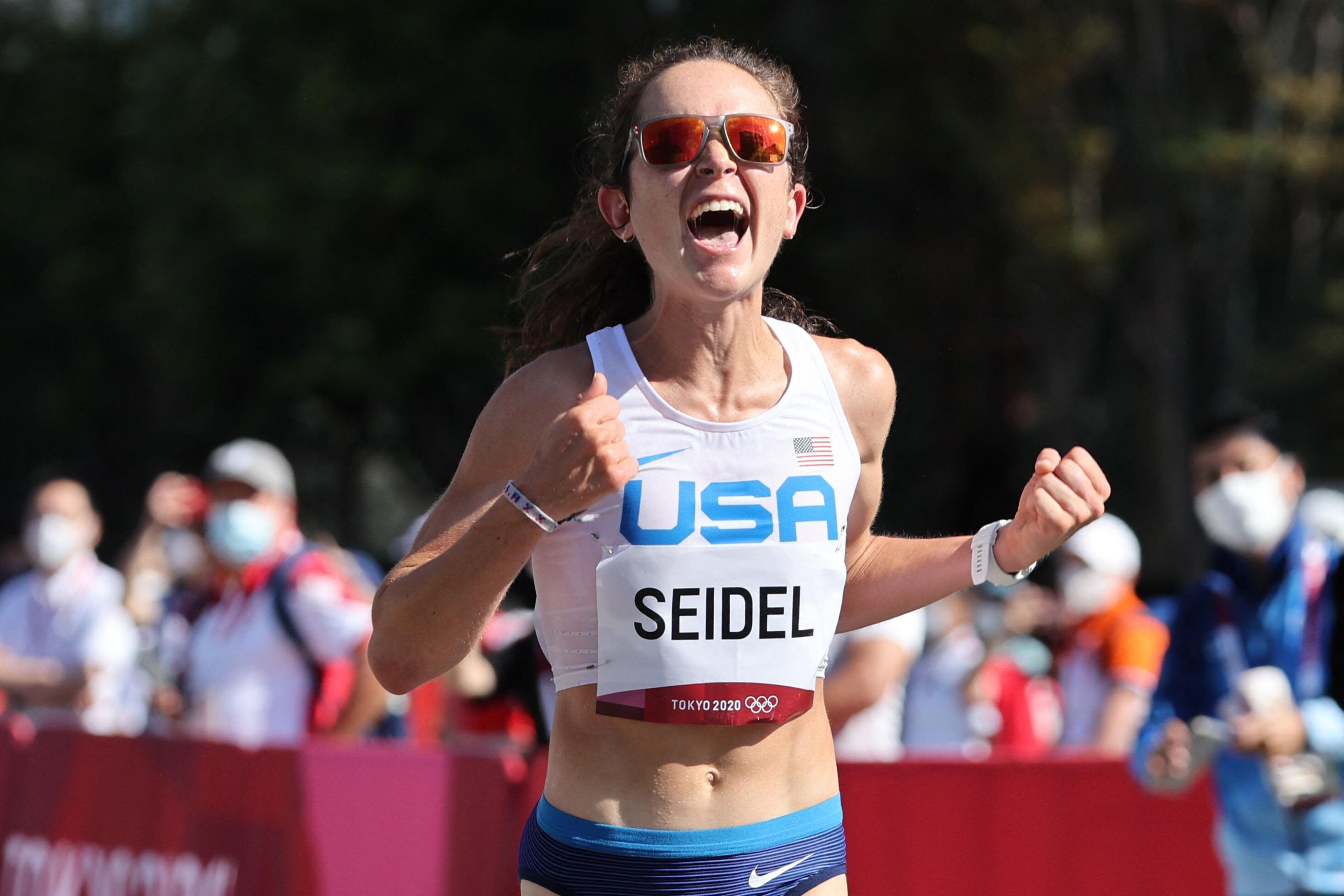
The trials are Saturday at 10 a.m. ET from Orlando, airing live on Peacock with coverage on NBC, NBCSports.com and the NBC Sports app at noon.
Four years ago, Seidel placed second in the trials in her marathon debut to make the three-woman Olympic team.
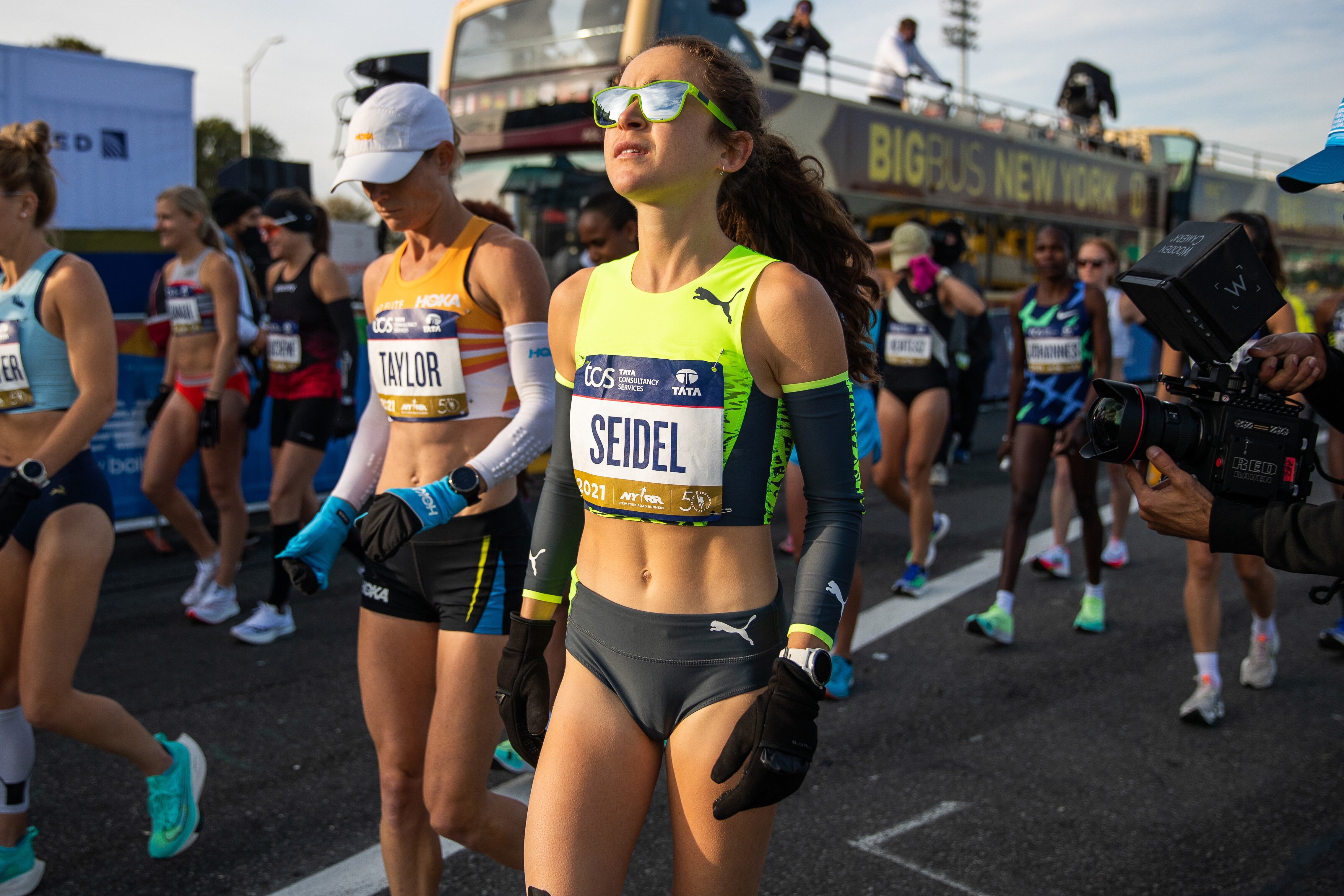
After the COVID-19 pandemic postponed the Tokyo Games by one year, Seidel finished third in the Olympic marathon held in Sapporo.
She became the third U.S. woman to win a marathon medal after Joan Benoit Samuelson, who won the first Olympic women’s marathon in 1984, and Deena Kastor, the 2004 bronze medalist.
After Tokyo, Seidel dealt with a hip injury and anemia, plus took time to focus on mental health after an eating disorder relapse.
Then last Oct. 8, Seidel finished a 26.2-mile race for the first time in two years. She was the second-fastest American woman at the Chicago Marathon, running a personal best and re-establishing herself as a prime candidate to make the Paris team of three at trials.
Seidel is the second contender to withdraw in the lead-up to trials.
Emma Bates, the third-fastest U.S. female marathoner of 2023, bowed out Jan. 7, saying then, “There’s just not enough time to be where I need to be.”
The field still includes three of the four fastest American women in history — American record holder Emily Sisson, former American record holder Keira D’Amato and Sara Hall, No. 4 on the all-time list.
Plus, former Iowa State teammates Betsy Saina (the fastest American in 2023) and Aliphine Tuliamuk (Tokyo Olympic Trials winner).
(02/01/2024) ⚡AMPby Olympic Talk
2024 US Olympic Trials Marathon
Most countries around the world use a selection committee to choose their Olympic Team Members, but not the USA. Prior to 1968, a series of races were used to select the USA Olympic Marathon team, but beginning in 1968 the format was changed to a single race on a single day with the top three finishers selected to be part...
more...Four runners share their mental health stories
Many runners find their sport is not only a way to gain physical resilience, but also a powerful ally in the path toward mental well-being. The road to mental health isn’t solitary, and witnessing others share their challenges and successes can be uplifting and inspiring.
From pros to amateurs, athletes are speaking out about their struggles and triumphs with mental health. Here are four runners to follow who are also mental health advocates.
1.- Alexi Pappas
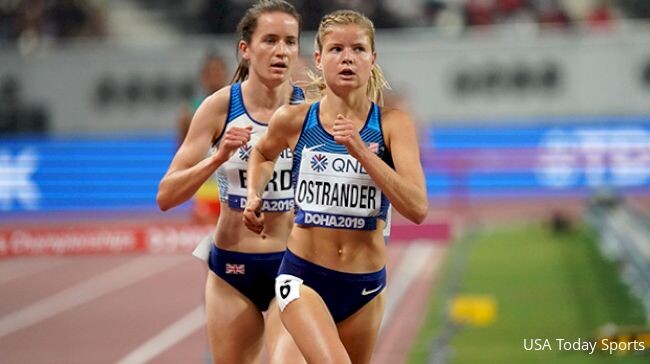
Pappas is known for being a remarkable athlete (she ran the 10,000m for Greece at the 2016 Olympics in Rio de Janeiro), but she also boasts credentials as a renowned author, filmmaker, and mental health advocate. Pappas opened up about mental health in 2020: after working toward and achieving her Olympic dreams, her mental health spiralled, and she was eventually diagnosed with severe clinical depression, which was compounded by injuries, a lack of sleep and her own reluctance to take a break from training.
Pappas authored her first book in 2021: Bravey: Chasing Dreams, Befriending Pain, and Other Big Ideas, highlighting her triumphs and challenges in sports and life, and encouraging readers to be “braveys” in pursuing their passions. She continues to advocate and be a source of hope to others on social media.”What if we athletes approached our mental health the same way we approach our physical health?” Pappas asks.
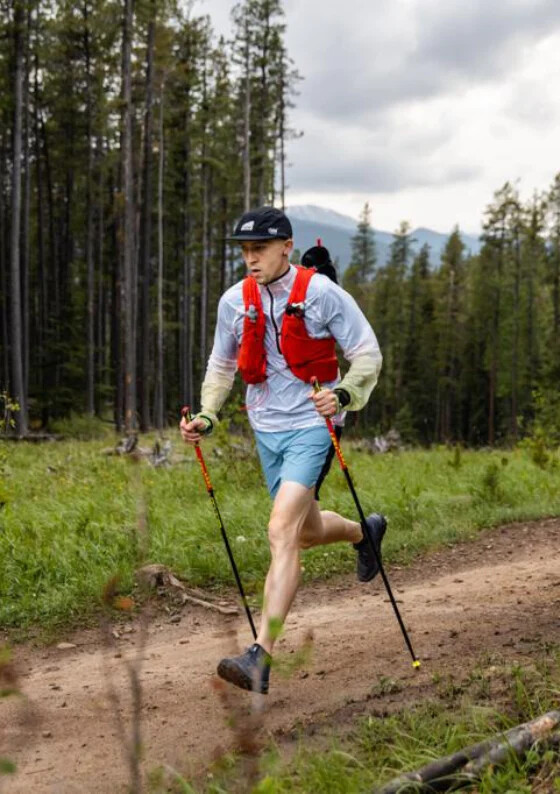
Former American steeplechaser turned elite trail runner, Ostrander uses her Instagram platform to share mental health and eating disorder awareness and advocacy.
In 2021, Ostrander returned to professional competition after being sidelined with multiple injuries for the previous 18 months. During this time, she was hospitalized for treatment of an eating disorder. Ostrander qualified for the U.S. Olympic Trials, where she ran a personal best of 9:26.96 in the 3,000m steeplechase, before deciding to take a year-long break from professional running to prioritize her own mental health.
Ostrander returned to racing in 2023, and made a shift to the trails, running to ninth place at the Mammoth 26K in California in September.
3.- Evan Birch
Canadian ultrarunner and mental health advocate Evan Birch shares an unflinching look at his mental health journey on social media as he works to destigmatize the conversation around mental wellness. Birch is a former 911 dispatcher from Calgary who has been running on trails for more than a decade, and who most recently conquered Western Canada’s first 200-mile race, The Divide 200, in September 2023.
A busy father to young children, Birch recently collaborated with filmmaker Dylan Leeder to create Running Forward, a documentary illuminating the intersection between running and mental health.”It is more important to me now that I meet the truth within me, than it is to make other people comfortable with how I am,” Birch says on social media. “The gifts I have received from allowing myself to be sad are so plentiful.”
4.- Denoja Uthayakumar
From Scarborough, Ont., Uthayakumar is no stranger to hardship, but she has taken her experiences and built a social platform where she can advocate for individuals from similar backgrounds. Uthayakmar is a cancer survivor, body positivity and mental health advocate and was Canadian Running’s pick for our 2023 Community Builder of the Year award.
Uthayakumar was born into a Tamil family, and was diagnosed with thyroid cancer at age five; she shares her physical and mental health challenges alongside the joy that running and the community around it bring to her. “This year pushed me. It broke me down. It challenged me to no end,” Uthayakumar says on Instagram. “It was hard, but I rose higher with my running journey, and was able to share more of my story during my healing while being a survivor.”
(01/31/2024) ⚡AMPby Keeley Milne
This ultrarunning champ’s 5K workout will make you faster
No matter what distance you're training for, you'll boost speed and running economy with this fun, fast session.
Whether you are training for a 10K PB this season or hoping to run your first ultra, you’ll benefit from adding a speedwork session (like this one) to your training toolbox. Utah-based running coach, personal trainer and ultrarunning champ Rhandi Orme has a workout that she likes to prescribe to her athletes, as well as using herself (and she suggests modifications for all levels of runners).
“This is a workout that long-distance athletes can benefit from,” she told Canadian Running. “Having top-end speed on the shorter distances improves runners’ VO2 max and running economy, which helps us run faster and stronger at longer distances, too.
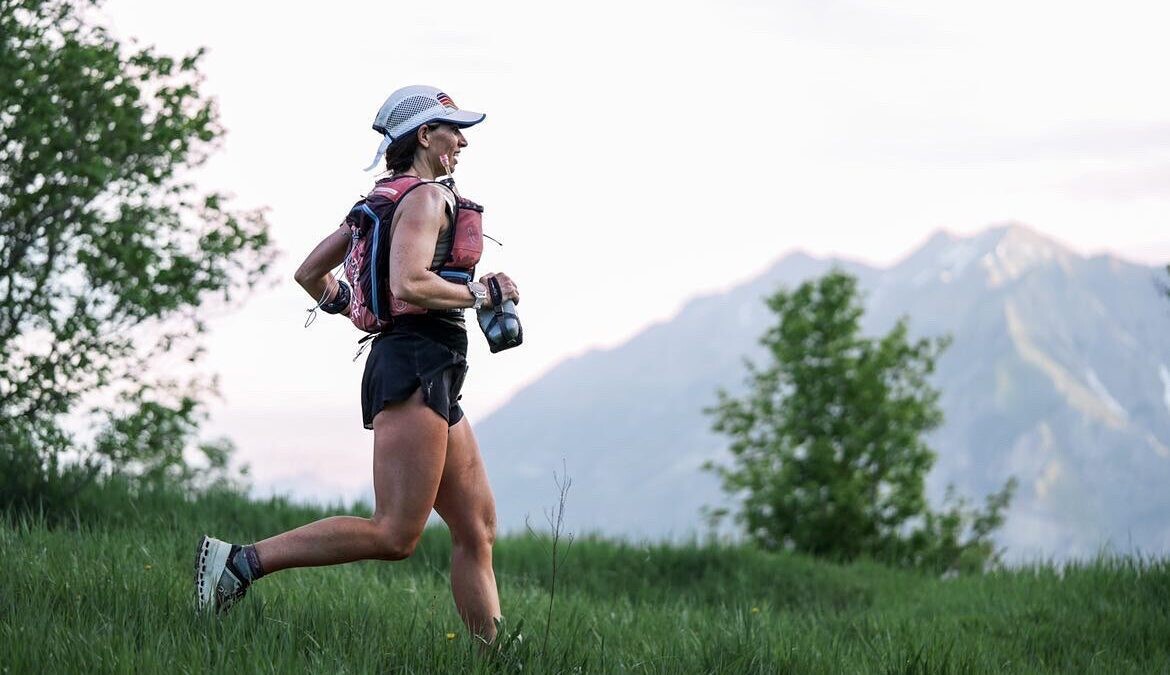
The workout
Warm up with 15-20 minutes of easy running, followed by dynamic drills or stretches.
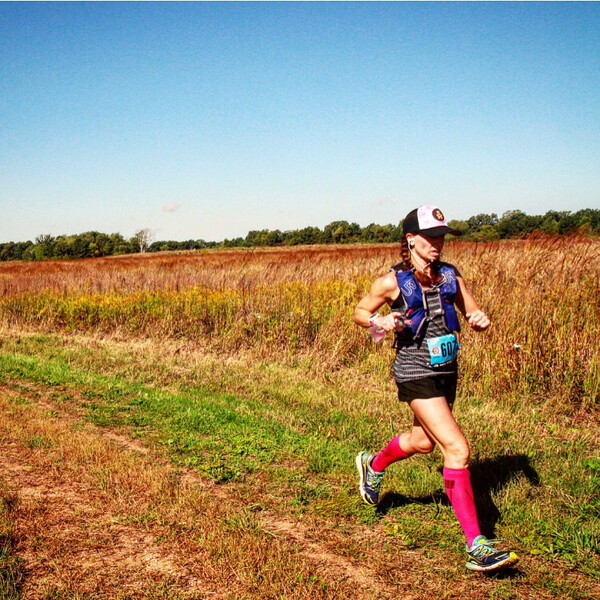
Run 5 x 2 minutes at 5K goal pace, with two minutes of recovery jogging between intervals.
Run 4 x 2 minutes at 5K goal pace with a minute’s recovery jog between intervals.
Finish your speedwork with a fast mile, to see what you can do on tired legs (all effort-based for this final interval). “Don’t look at your watch. Pretend you are running the last mile of your next 5K race,” says Orme.
Cool down with 10-20 minutes of easy running.
*Bonus: any time after this hard effort (but on the same day) is ideal for your leg-strength training session.
Modifications
Shorten or extend intervals based on your current level of fitness. Orme suggests that beginners start with 4 x 30 seconds (at goal pace) and then 2 x 60 seconds. “You can also increase the recovery time between intervals,” says Orme. For newer runners, reducing the “fast-finish” mile to a “fast-finish” half-mile is a great option, and Orme suggests playing with the recovery time and the number of intervals based on your current fitness.
“Once the workout begins to get more comfortable, you can increase the intervals and reduce the recovery, working your way up to the full workout,” says Orme. “I would recommend doing this workout every other week, until you see a noticeable improvement.” For experienced runners hoping to add more volume, she suggests extending the warmup and cooldown.
Remember to follow a harder training day like this one with a rest day or easy-run day.
(01/31/2024) ⚡AMPby Keeley Milne
Jakob Ingebrigtsen hopes to open his season at Pre Classic
After a record-setting 2023 season, it has been a quiet year (so far) for Norwegian distance star Jakob Ingebrigtsen. The 24-year-old has been sidelined with an Achilles injury, which will keep him out of next month’s World Indoor Championships in Scotland and World XC in Serbia.
In an exclusive interview with Norwegian broadcaster NRK, Ingebrigtsen remained confident that he would be good to go for the summer track season. “Plan A is to start the season in Eugene [Diamond League, on May 25], run Bislett Games [Oslo Diamond League] on May 30, and the European Championships in Rome after that [June 7],” said Ingebrigtsen. “I think that will work well this year. And then full focus on the Olympics after that, so most likely a good season in the late summer.”
Last year was one of the most dominant seasons of Ingebrigtsen’s young career; he set world bests over two miles and 2,000m and clocked the second-fastest mile time in history (3:43.73) at the 2023 Diamond League Final in Eugene. He also went through a lot off the track, marrying his longtime partner Elisabeth Asserson and having a public falling out with his former coach and estranged father, Gjert Ingebrigtsen.
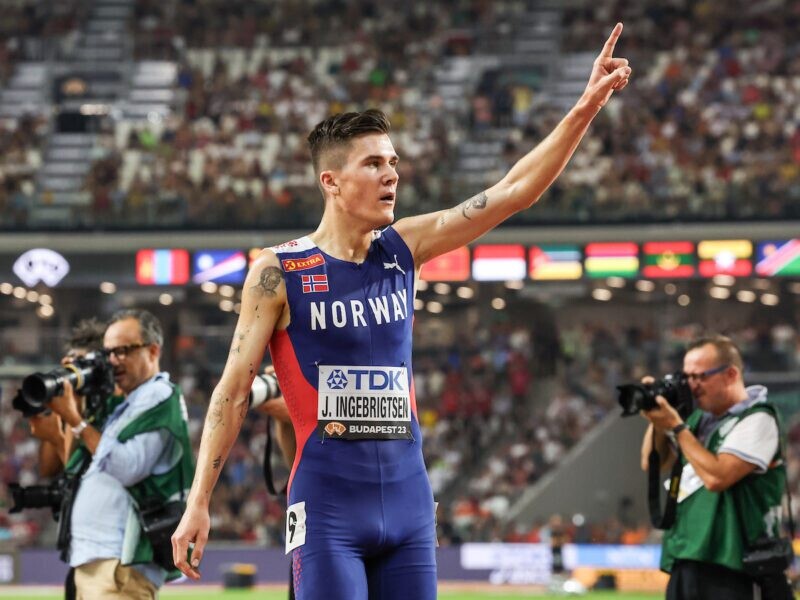
Ingebrigtsen told NRK that he took some time off from running during his wedding and honeymoon in the Maldives, and when he tried to start training again, the challenges began. “I got sick during the break,” said Ingebrigtsen. “When I started training again, it hurt like hell, then the Achilles tendon snapped.” He believes the problem occurred from inflammation around the Achilles tendon on his right foot.
He also admitted in the interview that he was struggling with pelvic pain before the 2023 World Athletics Championships in Budapest, where he defended his world title in the 5,000m and took silver to Great Britain’s Josh Kerr in the men’s 1,500m, losing to a British middle-distance runner for the second year in a row (Jake Wightman, 2022 worlds).
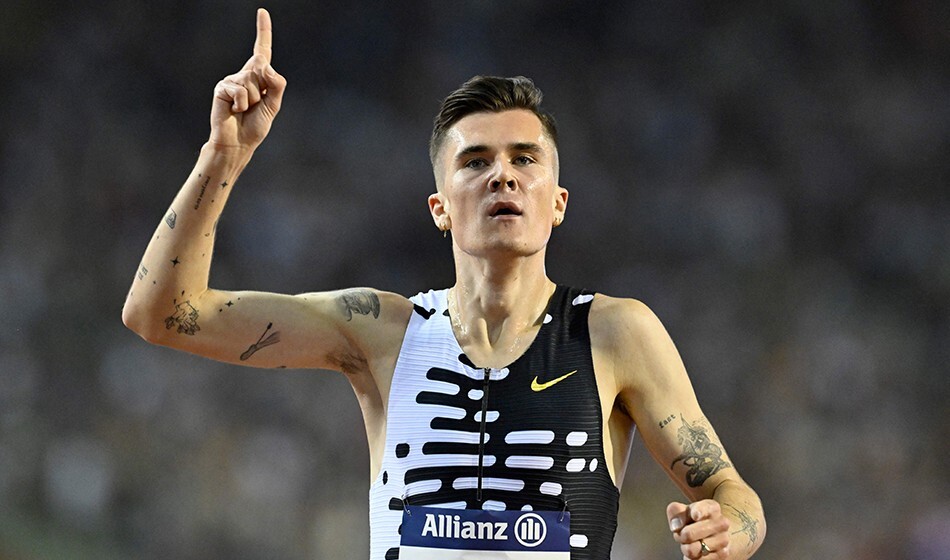
Ingebrigtsen said he is still motivated by his loss to Kerr and is trying to use it as a lesson: “It is again very important to try to analyze what you have done, or what you have been through, to see that it is not necessarily to blame, but what you can perhaps do differently. And I’m a big fan of that.”
Kerr and Ingebrigtsen have been public about their dislike of one another. After Kerr won the world title in Budapest, Ingebrigtsen called the Scottish runner “just the next guy.” In a podcast, Kerr responded by saying that Jakob has “major weaknesses” and “surrounds himself with yes men.” On the prospect of another duel in Paris, Kerr said: “I just hope he’s ready to go. I hope that when we cross that finish line in Paris, everyone can shake each other’s hand and be like, “Whoever wins is good, they’re the best.”
With Ingebrigtsen currently training on the elliptical and water running, fans will be denied a potential early clash between the world and Olympic 1,500m champion at the World Indoor Championships in Glasgow in March. Kerr hopes for glory on home soil, competing in a major championship in his home country for the first time.
(01/31/2024) ⚡AMP
by Marley Dickinson
Vincent Kipkemboi returns to torment Eliud Kipchoge at Tokyo Marathon
Vincent Kipkemboi, the man who gave Eliud Kipchoge a run for his money at the 2023 Berlin Marathon will be out to torment him once more at the Tokyo Marathon.
The Tokyo Marathon race organizers have announced the full elite fields and former world marathon record holder Eliud Kipchoge will surely not have a smooth sailing at the event.
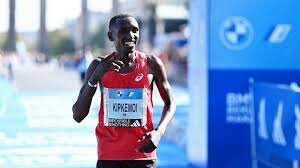
Kipchoge’s closest challenger Vincent Kipkemboi, has been invited to compete at the event and he will surely be out to torment Kipchoge.
At the 2023 Berlin marathon, the four-time London Marathon was spotted looking back during the race and the commentators noted that it was the first time in a long time that Kipchoge was spotted looking worried.
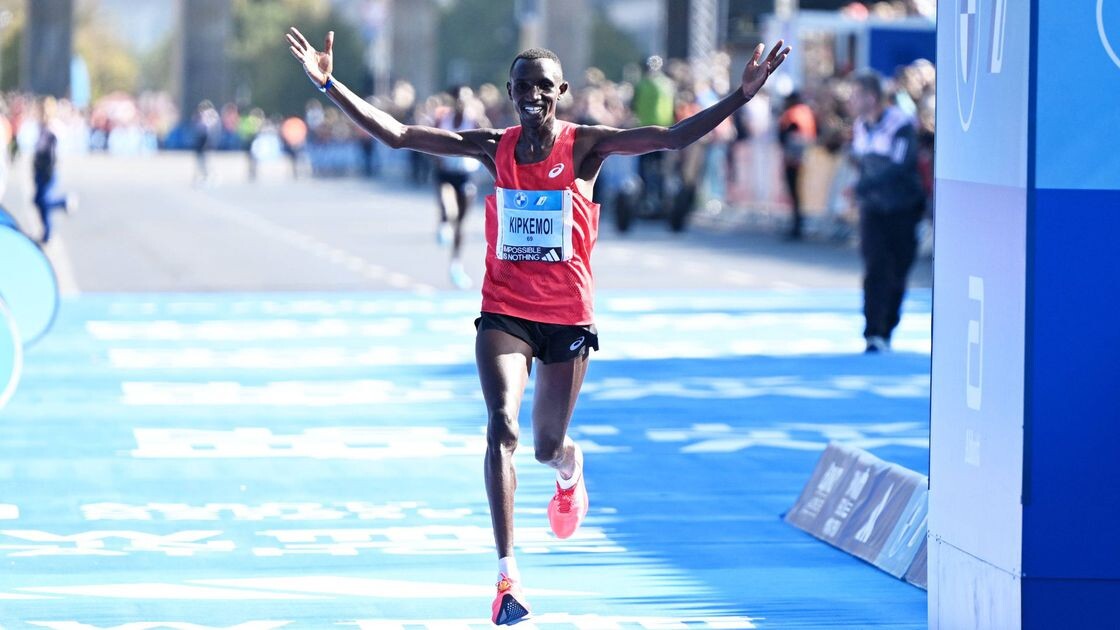
Kipkemboi was just making his debut and with the type of race he executed for a second-place finish, he will surely be out to give Kipchoge a nightmare.
Another athlete to watch will be Timothy Kiplagat, an able marathoner who has cemented his place in the world of road running.
The 2022 Chicago Marathon champion, Benson Kipruto, will also be out to challenge Kipchoge’s charges after proving his prowess at last year’s Boston Marathon where he finished third. In that race, Kipchoge finished sixth and noted that he had a problem with his left leg.
The international challenge will come from Uganda’s Victor Kiplagat who will be keen to make a name for himself at the event. Ethiopia’s Tsehay Getachew will also be in the mix, looking to challenge Kipchoge and the Kenyan charge.
Hailemaryam Kiros has also confirmed participation in the event and he will also be looking to fly the Ethiopian flag high.
Meanwhile, Kipchoge will be building up for the Paris Olympic Games in Paris, France where he intends to be the first man to win the marathon title three times in a row.
(01/31/2024) ⚡AMPby Abigael Wuafula
Tokyo Marathon
The Tokyo Marathon is an annual marathon sporting event in Tokyo, the capital of Japan. It is an IAAF Gold Label marathon and one of the six World Marathon Majors. Sponsored by Tokyo Metro, the Tokyo Marathon is an annual event in Tokyo, the capital of Japan. It is an IAAF Gold Label marathon and one of the six World...
more...U.S. Olympic Marathon Trials unveil huge prize pool
We are less than a week away from one of the most exciting pre-Olympic qualification events: the 2024 U.S. Olympic Marathon Trials (on Feb. 3). Not only will the top three men and women have the opportunity to represent Team USA in the marathon at the 2024 Paris Olympics, they will also share a large portion of the USD $600,000 prize pool.
The winners of the men’s and women’s races will each take home $80,000, while the second and third-place finishers will receive prizes of $65,000 and $55,000, respectively. The total prize purse for Orlando 2024 has increased by $120,000 from the $480,000 that was at stake in the 2020 U.S. Olympic Marathon Trials in Atlanta four years ago.
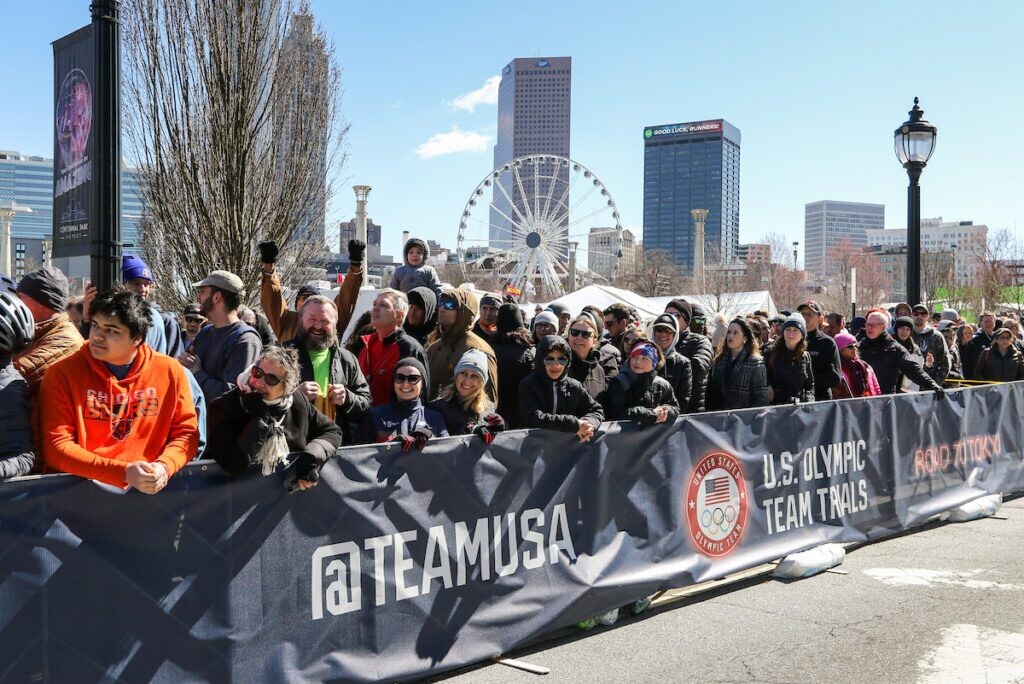
Beyond the top three, the prize money is distributed as follows: $25,000, $20,000, $15,000, $13,000, $11,000, and $9,000 for the fourth through ninth positions. The 10th-place finisher will receive $7,000. The 2024 U.S. Olympic Marathon Trials will be broadcast live on Saturday, Feb. 3, at 10 a.m. ET on Peacock, with additional coverage on NBC at noon from Orlando. The NBC broadcast will also stream on NBCSports.com and the NBC Sports app (subscription required).
Last year, USATF and the City of Orlando organizing committee faced some criticism when they initially announced the race would start at noon. Eventually, after pressure from athletes and coaches who were concerned about the heat, the start time was adjusted to 10:10 a.m. ET for the men and 10:20 a.m. for the women. There was also some scrutiny for not announcing prize money earlier. In previous editions, the prize purse was released at least a year before the event.
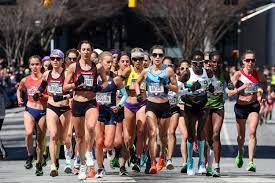
According to a Runners World article, agents and coaches had feared that the lack of news about the prize purse indicated a potential reduction in payouts for top finishers compared to previous years, but that proved not to be the case.
More than 225 men and 173 women qualified for the 2024 U.S. Olympic Marathon Trials. However, the total number of participants will be lower, since only 380 have registered. Since the registration deadline, several qualified athletes have withdrawn due to injury or for other reasons.
(01/30/2024) ⚡AMPby Marley Dickinson
2024 US Olympic Trials Marathon
Most countries around the world use a selection committee to choose their Olympic Team Members, but not the USA. Prior to 1968, a series of races were used to select the USA Olympic Marathon team, but beginning in 1968 the format was changed to a single race on a single day with the top three finishers selected to be part...
more...Veteran racewalker Samuel Gathimba eyes the Olympic Games
Veteran racewalker Samuel Gathimba will be out to fly the Kenyan flag high as he eyes the Olympic Games and All Africa Games.
Three-time African race walk champion Samuel Gathimba is working round the clock to ensure he represents Team Kenya well.
Gathimba will be returning to the All Africa Games in Accra, Ghana where he will seek to bag another gold medal for Kenya.
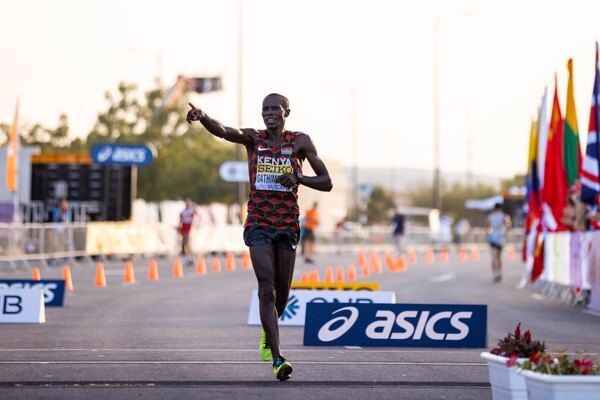
He has won the All Africa Games title once, during the 2019 edition held in Morocco, Rabat, and settled for silver in the 2015 edition of the event that was held in Brazzaville, Congo. The multiple national champion has already exuded confidence about winning another gold medal.
“I will automatically be going for another title…my hope is to go and represent my country well and win a gold medal,” Gathimba said.
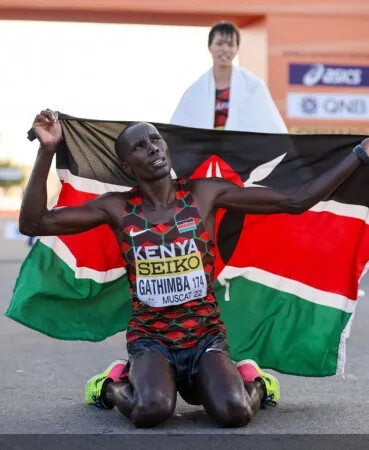
The veteran race walker hit the qualifying time for the Olympic Games last year during the World Championships in Budapest, Hungary.
He posted a personal best time of 1:18:34 to finish among the top 10 and reveled at the remarkable achievement which leaves him longing to fly the Kenyan flag high in Paris.
He was in action at the third Athletics Kenya weekend meet held at the Nyayo National Stadium where he beat a strong field of young and talented walkers to claim top honors.
“Without a doubt, I already qualified and this is just training towards the global showpiece. My coach and I have been working together and I can confidently say that my body is responding well,” Gathimba said.
(01/30/2024) ⚡AMPby Abigael Wuafula
Paris 2024 Olympic Games
For this historic event, the City of Light is thinking big! Visitors will be able to watch events at top sporting venues in Paris and the Paris region, as well as at emblematic monuments in the capital visited by several millions of tourists each year. The promise of exceptional moments to experience in an exceptional setting! A great way to...
more...Conner Mantz And Clayton Young Lead Charge At U.S. Olympic Marathon Trials
The months leading up to the U.S. Olympic Marathon Trials have been anxiety-inducing, but race day is nearly upon us.
From the intense back-and-forth exchanges between the Athlete Advisory Board and the Greater Orlando Sports Commission, to the uncertainty on exactly how many American men will be toeing the line this summer in Paris, the build-up to the trials has been nothing short of newsworthy.
That being said, we are just a few days out of the Trials, and there are certainly a few storylines at play.
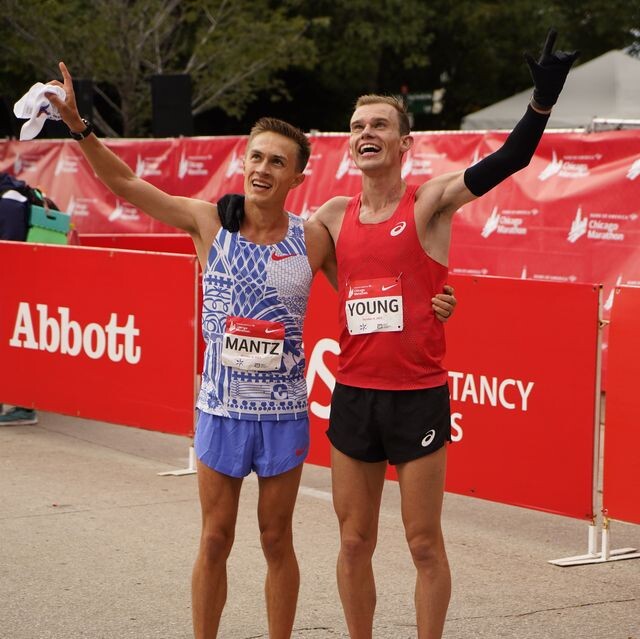
The Young Guns
Conner Mantz, 27, and Clayton Young, 30, will step to the line on Saturday as the two fastest men in the field during the qualifying window. Mantz, a two-time national champion while at Brigham Young University, finished sixth at the Bank of America Chicago Marathon back in October. He was the top American and crossed in 2:07:47, which is tied for fourth on the all-time U.S. list.
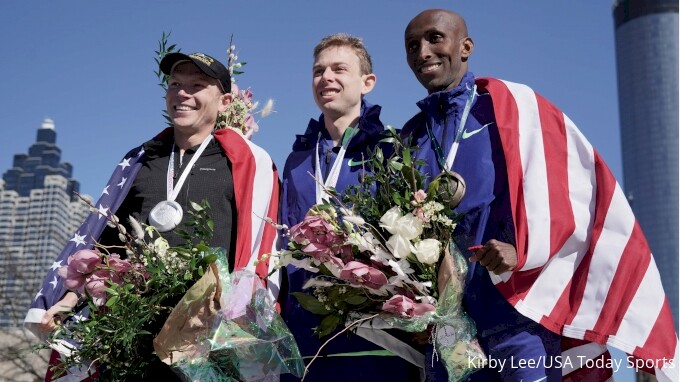
Young, an NCAA champion himself while also attending BYU, was just a few spots behind his former college teammate and training partner, finishing seventh in 2:08:00, which was good enough for a U.S. No. 7 standing all-time among American men.
Both of Ed Eyestone's former studs left the 'Windy City' with lifetime bests, and most importantly, unlocked two American spots for Paris 2024.
Following superb performances in Chicago just months ago, the Provo-based training partners would love nothing more than to claim the spots they earned on Saturday and officially punch their ticket to the Olympics.
However, they are both well-aware that nothing is earned in the sport, especially when the marathon is the distance of choice. Both are looking more than prepared, just check out the workout video:
The Veterans
While some of the field is preparing for their first-ever U.S. Olympic Trials, there are more than a few experienced marathoners that have been here before and are accustomed to the pressure.
One of those men is none-other than Galen Rupp, the two-time Olympic medalist and current/former American record holder.
Rupp has run his fair share of marathons, with the 2024 Trials marking his 15th attempt on the brutal race.
Not only is he a veteran at the distance, but he's also qualified for two Olympic marathons -- Rio 2016 and Tokyo 2020 -- and competed at the 2022 World Athletics Championship.
After battling a nagging back injury, Rupp returned to the marathon in October, was one of four Americans under 2:09 and ran 2:08:48 in his return.
Rupp will see some familiar faces in Orlando, as fellow marathon veterans Sam Chelanga, Scott Fauble and CJ Albertson are all jockeying for a spot as well.
The 38-year-old Chelanga is coming off a 2:08:50 from the 2023 Chicago Marathon, which shaved over six minutes off of his previous best along the way.
Fauble's most recent marathon unfortunately ended with a 'DNF', but a seventh-place finish at Boston last year paired with a 2:08:52 personal best from 2020 says he's in the mix as well.
For Albertson, this will be his fourth marathon since April. After finishing 12th in Boston, he ran and won both the California International Marathon (CIM) and the Baja California California on back-to-back weekends in December, running 2:11:09 and 2:11:08, respectively.
Any of these four men could see themselves in the final three come Saturday, but despite none of them having the Olympic Standard, they could still snag one of two guaranteed spots thanks to their sub-2:11:30 performances during the qualifying window. And a third auto-spot could get unlocked if an athlete runs 2:08.10 or faster on the day.
A few of the many notable names to keep an eye out include Elkanah Kibet, Zach Panning, Leonard Korir, and Futsum Zienasellassie.
The gun goes off for the men at 10:10 a.m. EST on Saturday, with the women following close behind at 10:20 a.m. EST.
You can tune in live on Peacock, with coverage starting at 10:00 a.m. EST, and NBC will begin broadcasting at noon.
(01/30/2024) ⚡AMPby Maxx Bradley
2024 US Olympic Trials Marathon
Most countries around the world use a selection committee to choose their Olympic Team Members, but not the USA. Prior to 1968, a series of races were used to select the USA Olympic Marathon team, but beginning in 1968 the format was changed to a single race on a single day with the top three finishers selected to be part...
more...Defending champion Rosemary Wanjiru pitted against Sifan Hassan at Tokyo Marathon
Rosemary Wanjiru will return to the Tokyo Marathon to defend her title and she will have her work cut out since in-form Sifan Hassan has also been confirmed.
Defending champion Rosemary Wanjiru will be up against the 2023 Chicago and London Marathon champion Sifan Hassan at the Tokyo Marathon scheduled for Sunday, March 3.
During last year’s edition of the race, Wanjiru destroyed a strong field to claim the top prize, cutting the tape in 2:16:28. She enjoyed her 2023 season and will be looking to continue the hot streak to 2024.
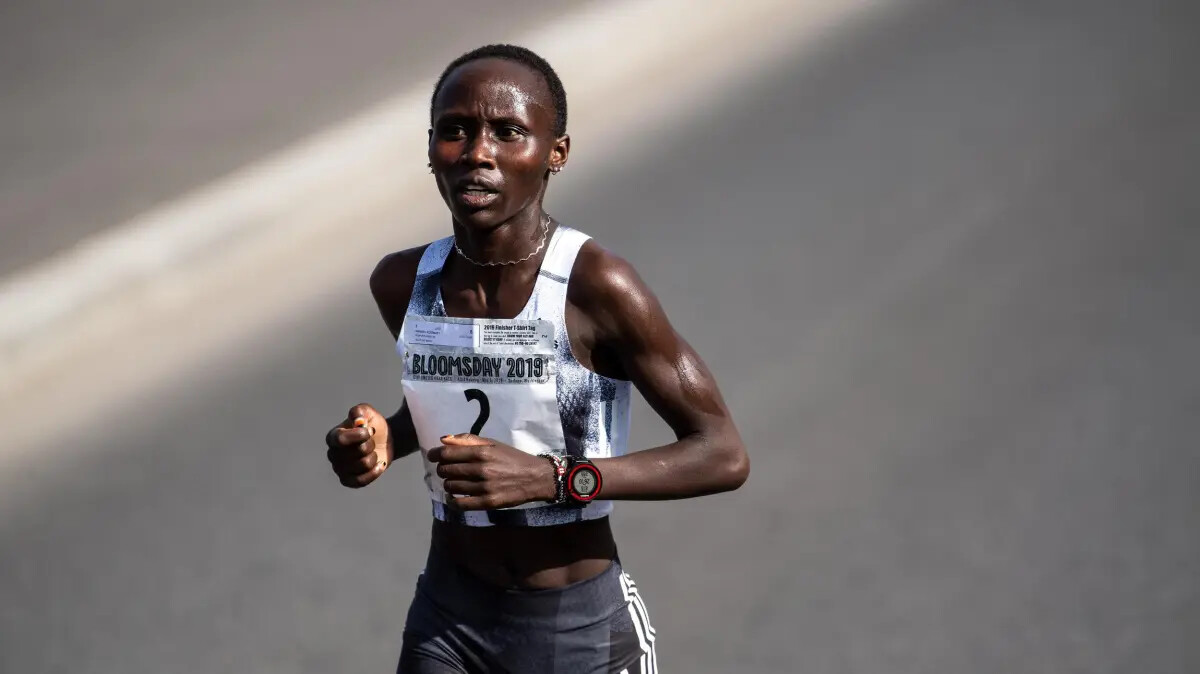
Wanjiru also represented Kenya at the World Championships in Budapest, Hungary where she finished sixth in the marathon.
Dutch woman Hassan is, however, not to be downplayed since she has proven what she can do both on the track and the full marathon.
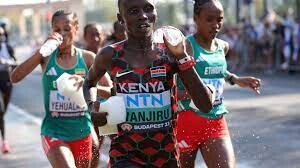
Hassan made her full marathon debut at the London Marathon and won in the most dramatic way. She clocked 2:18:33 to beat marathon experts including Peres Jepchirchir, the reigning Olympic marathon champion.
She extended her winning streak to the Chicago Marathon where she stunned defending champion Ruth Chepng’etich to second place.
Hassan will be eyeing the Olympic Games and the Toyo Marathon is a better place for her to build up for the event.
Kenyan-born Israeli Lonah Salpeter has also been invited and she will be out to challenge the double Olympic champion and Wanjiru for the top prize.
Salpeter has also been making headlines recently and she finished third at the World Championships last year.
The Ethiopians will be led by Sutume Kebede and Tigist Abayechew who will be out to reclaim the title they lost to Kenya last year.
Magdalena Shauri of Tanzania will also be hoping to continue soaring high after her dominant exploits in Berlin last year where she finished third.
(01/30/2024) ⚡AMPby Abigael Wuafula
Tokyo Marathon
The Tokyo Marathon is an annual marathon sporting event in Tokyo, the capital of Japan. It is an IAAF Gold Label marathon and one of the six World Marathon Majors. Sponsored by Tokyo Metro, the Tokyo Marathon is an annual event in Tokyo, the capital of Japan. It is an IAAF Gold Label marathon and one of the six World...
more...World and Olympic champions to compete at Ras Al Khaimah Half Marathon
The powerful list of elites confirmed for the 2024 Ras Al Khaimah Half Marathon continues to grow with former world marathon champion Tamirat Tola, Chicago Marathon winner Seifu Tura and former half marathon world record holder Ababel Yeshaneh joining the starting line-up.
The 17th edition of the event on February 24 will read like a Who’s Who of international distance running as a wealth of elites take advantage of the beautiful weather conditions in the countdown to both the London Marathon and the Paris Olympics.
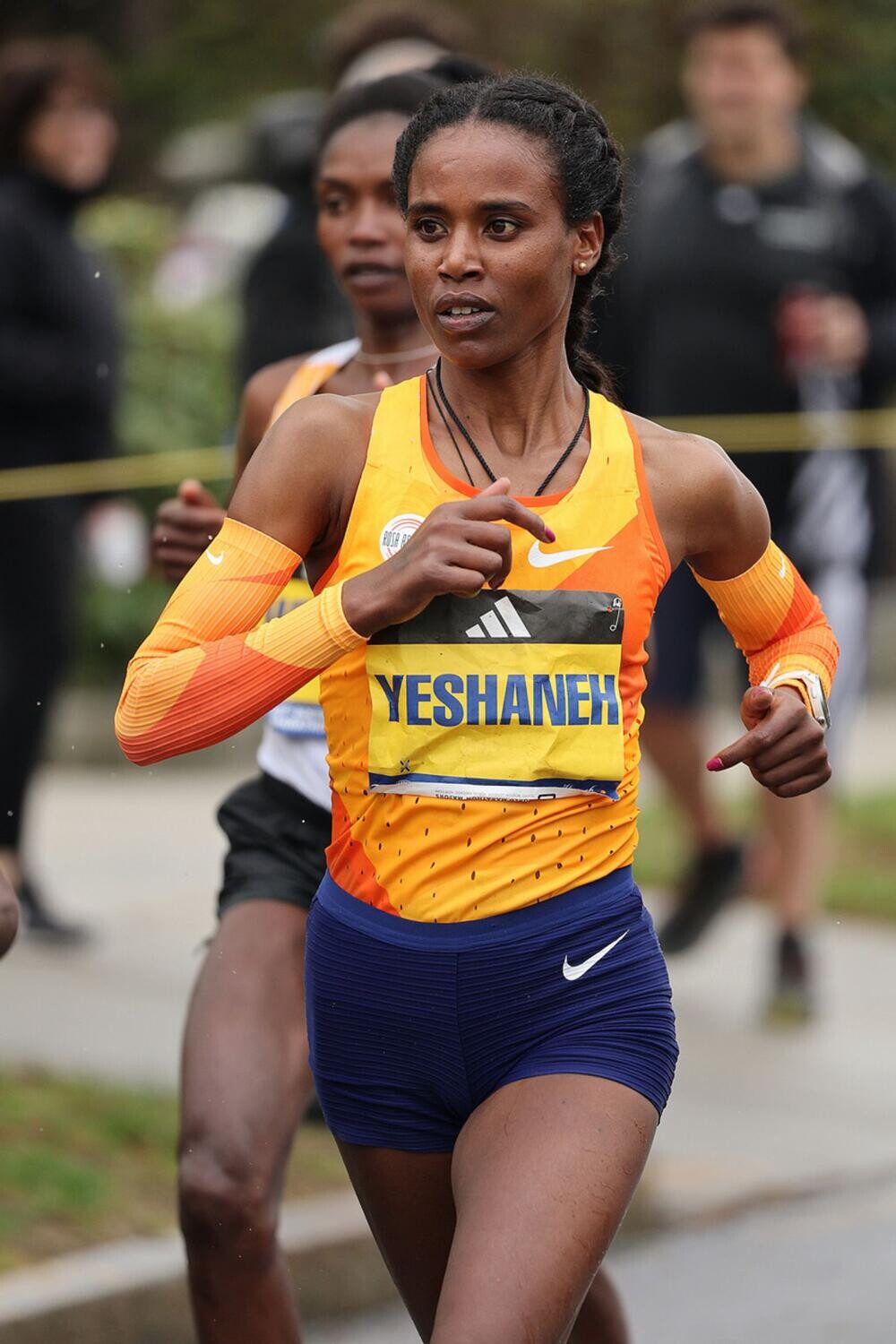
Hosted by the Ras Al Khaimah Tourism Development Authority (RAKTDA), the Ras Al Khaimah Half Marathon will see Tola make his debut in the emirate just three months after winning the 2023 New York Marathon.
The Ethiopian has a personal best of 59:13 and is no stranger to the flat, fast roads of the Middle East having won the Dubai Marathon in 2017.
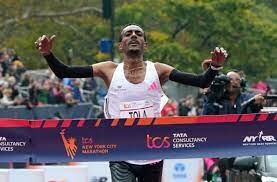
Fellow Ethiopian Seifu Tura returns to the race route on the iconic Al Marjan Island with a half marathon personal best of 58:36, which he set when finishing fourth at the Ras Al Khaimah Half Marathon two years ago.
Now 26, Tura is an established distance runner with a number of impressive results on his CV most notably a superb victory in the 2021 Chicago Marathon.
He also has four other top six finishes in Major marathons including a runners-up spot in Chicago in 2022 and two fifth place finishes in London and Chicago last year.
On the women’s side, Ababel Yeshaneh will return to the scene of one of her greatest victories next month. The 32-year-old Ethiopian will kick off her 2024 season in Ras Al Khaimah and has fond memories of Al Marjan Island having set the then Half Marathon World Record of 64:31 when she claimed the women’s title there in 2020.
That time remains her personal best at the distance, although in the full marathon she also has two runner-up finishes to her name in Chicago (2019) and Boston (2022) as well as a third place finish at the New York Marathon in 2021.
The three Ethiopians will join elite fields that already include men’s defending champion Benard Kibet Koech (PB 58:45) and 2017 Ras Al Khaimah winner, reigning Olympic marathon champion and three-time World Half Marathon champion Peres Jepchirchir (PB 65:06).
As well as a wealth of elite distance runners, the Ras Al Khaimah Half Marathon will also offer races at 10km, 5km and 2km runs for athletes of all ages and abilities. Registration is open at rakhalfmarathon.com.
(01/29/2024) ⚡AMPby khaleej Times
Rak Half Marathon
The Ras Al Khaimah Half Marathon is the 'world's fastest half marathon' because if you take the top 10 fastest times recorded in RAK for men (and the same for women) and find the average (for each) and then do the same with the top ten fastest recorded times across all races (you can reference the IAAF for this), the...
more...Five exercises to amplify ankle strength and stability
Adding a few ankle exercises into your routine can help you stay strong and steady during the final tough miles of any long training run or race, whether you’re tackling roads or trails. You’ll also avoid getting sidelined by a strained ankle or repetitive stress injury.
A runner’s feet endure a continuous impact that, over time, can take a toll on the network of tendons and ligaments in the ankles. Toward the end of a long run or hard training session, fatigue and low glycogen levels cause your feet’s responsiveness of to changes in terrain to diminish, affecting the swift micro-movements crucial for maintaining balance. This decline in agility places an increasing burden on your ankles, subjecting them to prolonged stretching and strain.

The result is not only discomfort, but disarray in your proprioceptive system—the internal compass that guides your body’s position and movement—causing soreness, slips and ankle rolls. These exercises not only fortify your ankles but also act as a safeguard against the pitfalls of a fatigued and under-prepared lower extremity.
1.- Hop and hold
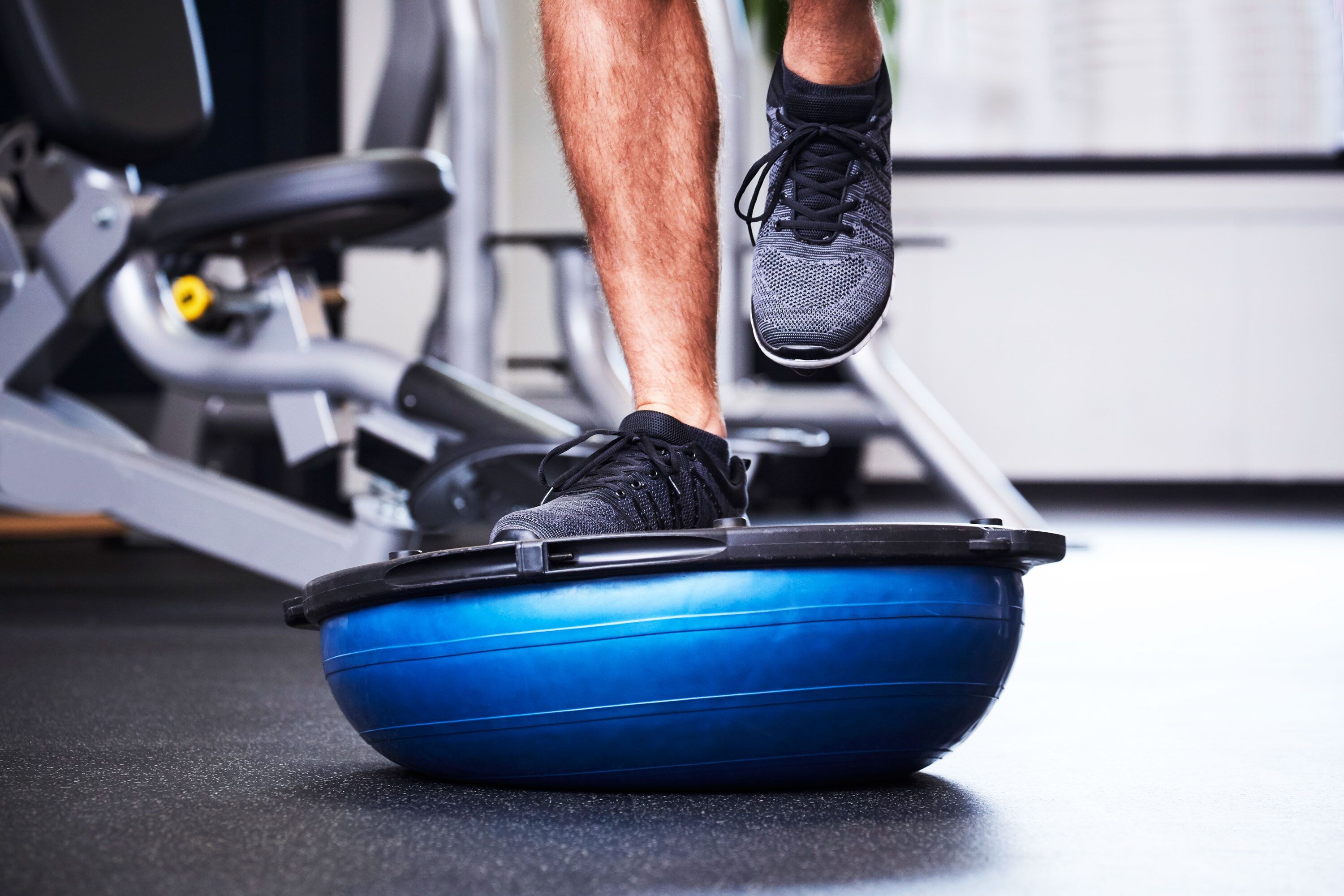
Stand with your feet hip-width apart, maintaining a straight and upright posture. Engage your core to ensure stability throughout the exercise.
Lift one foot slightly off the ground, balancing on the other.
With the grounded foot, perform a small, controlled hop. Focus on using the muscles around the ankle to control the movement. Upon landing, immediately shift your focus to holding the position. Balance on the foot that landed, ensuring that your ankle remains stable. Imagine rooting your foot into the ground.
Try to hold the position for 10-15 seconds, before switching to the other leg. Perform two to three sets of 10-15 reps on each foot, gradually increasing the duration of the hold as your ankle strength improves.
Modify this one if you find it challenging at first: you can hold onto a stable surface (like a chair or railing) for support until you build confidence and strength.
2.- Lateral shuffle
This exercise enhances ankle stability by engaging lateral movement and weight transfer.
Stand with feet hip-width apart, maintaining a slight bend in the knees.
Take a lateral step to one side, followed by the other foot. Move with controlled and deliberate steps.
Keep a low and athletic stance throughout the shuffle with your core engaged.
Try four x 10 steps to the left, then to the right.
3.- One-legged medicine ball toss
This exercise enhances ankle strength, stability and proprioception.
Stand on one leg with a slight bend in the knee for stability.
Hold a medicine ball with both hands, positioned in front of your chest.
While balancing on one leg, toss the medicine ball in the air and catch it. Focus on stability during the tossing and catching phases.
After completing a set, switch to the other leg. Try three sets of 10 tosses to start.
This exercise can be done with a cement wall, bouncing the ball gently off the wall with each toss and from both forward and sideways directions—it’s also a fun exercise to do with a partner.
4.- Eccentric calf raises
Try doing these on a step, lowering let your heels a few centimetres below the step with each one, to get a slightly deeper stretch.
Stand with feet hip-width apart and rise onto your tiptoes. Lower heels to a slow count to five.
Let your heels touch the ground, then immediately rise onto your toes again.
The key phase in this exercise is the eccentric one (the lowering part) when the tendon and muscles lengthen to control the downward path of your body.
5.- Single-leg Romanian deadlift
The single-leg Romanian deadlift targets multiple areas for runners—it not only strengthens the hamstrings and glutes but also enhances balance and stability, crucial for maintaining that strong foundation during tired miles.
Begin standing on one leg, with a slight bend in the knee. Hinge at your hips, pushing them backward while simultaneously lowering your upper body towards the ground. Keep your back straight and your chest lifted.
As you hinge forward, extend your non-standing leg straight behind you. Work to keep your extended leg, hip, and torso in a straight line, forming a “T” shape with your body.
Reach your hands towards the ground, going as low as your flexibility allows. Engage your hamstrings and glutes to return to the upright position, bring your extended leg back to the starting position, and repeat.
Aim for three sets of 10-12 repetitions on each leg.
These exercises collectively target ankle strength, stability and mobility, providing a comprehensive approach to help you maintain an unshakeable foundation. As with any exercise, start with a light load, or use your body weight and gradually increase as your strength and technique improve.
(01/29/2024) ⚡AMPby Keeley Milne
Canadian road and trail champ Anne-Marie Madden shares her wisdom
Canadian distance runner Anne-Marie Madden has been shining on both road and trails for years, most recently winning the masters division at the 2023 California International Marathon (CIM). Madden was third at Arizona’s Black Canyon 100K in 2022, earning her entry into the 2022 edition of the legendary Western States 100, where she took 11th place.
Madden, who works as a doctor in Vancouver, shared the secrets to her success in seamlessly transitioning between road and trail running with Canadian Running.
Early morning trail training

Balancing a thriving medical career with elite training demands a strategic training schedule. Madden’s weekdays are often dictated by long work hours, so she utilizes non-technical trails for pre-dawn runs with her dog, Tucker. Her days off become an opportunity for long, trail-focused runs.
“During this most recent marathon build, I made a concerted effort to do some long runs on the road,” says Madden. “My coach gave me a few workouts within a long run. This was useful on weeks when I had limited time off to do other workouts and it also built up my confidence running faster road paces again.”
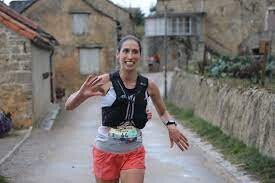
Fuelling for both styles
Madden’s fuelling strategy adapts to the demands of each terrain. For shorter, more intense road workouts, she opts for liquid nutrition and gels, finding bars challenging to consume when running at a higher intensity. She uses different methods of staying hydrated during training: on trails, she uses a filter flask to refill water from natural sources, contrasting the convenience of refilling at water fountains on urban road runs.
Tips for runners hoping to shift between terrain
“One of the biggest mental shifts for road runners moving into the trail space is to let go of pace goals,” says Madden. “The terrain often dictates the pace. Running on trails is a great opportunity to hone in on perceived effort and to tune into our body’s cues.” Madden says this skill carries over to road racing.
“For readers with a road running background looking to do more trail racing, I recommend they introduce trail runs into their program on their easy days or for a portion of their long run,” says Madden. “They can eventually work in trail workouts such as hill repeats or speed work on gravel paths.”
Vert and alpine views
Madden’s social media posts highlight the beautiful B.C. trails where she runs with her exuberant dog. “The alpine views here are spectacular and the high numbers of park visitors means the trails are well maintained and great for running,” she says. She does the bulk of her long runs on the mountain bike trails in Pemberton and Squamish.
Madden says that while there are lots of great runs in B.C. with tons of vert., the snow pack can make it hard to find long sustained climbs to train on can be challenging in early spring: “something to keep in mind if you’re signing up for a big race with lots of vertical early in the race season.”
With that in mind, Madden will next be lining up at Black Canyon 100K on Feb. 10th, “a relatively low vert trail race which is easier to train for during the Canadian winter when a lot of the higher elevation trails are snow covered,” she says.
(01/29/2024) ⚡AMPby Keeley Milne
Black Canyon Ultras
The Black Canyon 100K trail race takes place on the world class Black Canyon Trail near Phoenix, Arizona. This 80 mile long trail features incredible single track trails on an old stagecoach route, this course traverses across high desert grasslands and crosses through several arroyos and deep canyons on a classic journey in the desert Southwest. This historic trail is...
more...Kenyan Sammy Kitwara wins Marrakech Marathon
The 2010 World Half Marathon bronze medallist, Sammy Kitwara ran away with the men’s marathon title at the 34th edition of the Marrakesh International Marathon held on Sunday (28) at the High Patronage of His Majesty King Mohammed VI, stadium in Marrakech, Morocco.
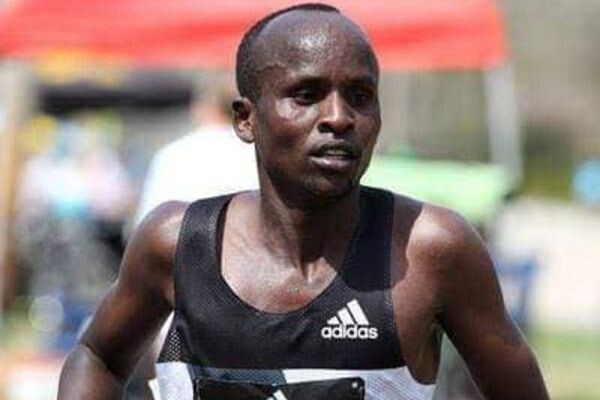
The 37 year-old who is also the 2015 Valencia Marathon champion, took the honors in a time of 2:07.55 and was followed by Morocco’s Omar Ait Chitachen in second place in a time of 2:08.45 with Mustapha Houdadi completing the podium in 2:09.38.
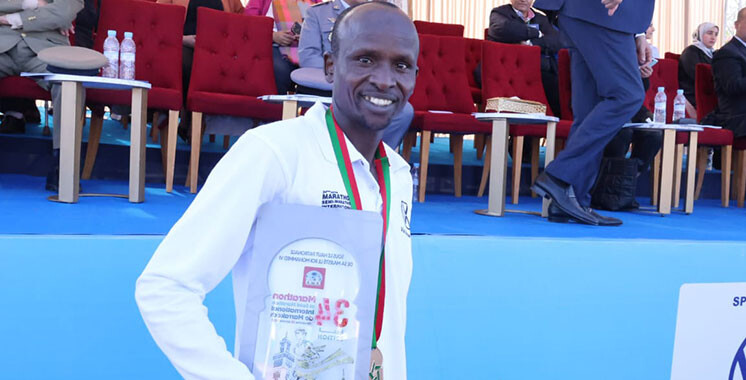
LEADING RESULTS
42KM MEN
Sammy Kitwara (KEN) 2:07.55
Omar Ait Chitachen (MOR) 2:08.45
Mustapha Houdadi (MOR) 2:09.38
(01/29/2024) ⚡AMPby James Koech
Marrakech Marathon
The magical town of Marrakesh offers an exceptional setting, a very mild climate in January and a beautiful circuit considered as one of the fastest in the world. It goes along the alleys of palm trees, orange, and olive trees, but also the ramparts of the city. The International Marathon of Marrakesh is not only expected to reconquer the prime...
more...7 Legit Benefits of Running At Night—And How To Do It Safely
It was around mile two of the Joshua Tree Half Marathon that I started to hear animals I couldn’t see. Was that a horse? I wondered (and hoped). The daylight was officially gone.
But I realized that as spooky as night running might be, it also creates an eerie kind of magic. Lights twinkled in the valley below the hilly path I was climbing, but all around me it was pitch black, aside from the few feet of sandy trail that each runner’s headlamp illuminated. With nothing else to see, all I had to focus on were my own footsteps and my breath—and how I could race through the desert as quickly as possible.
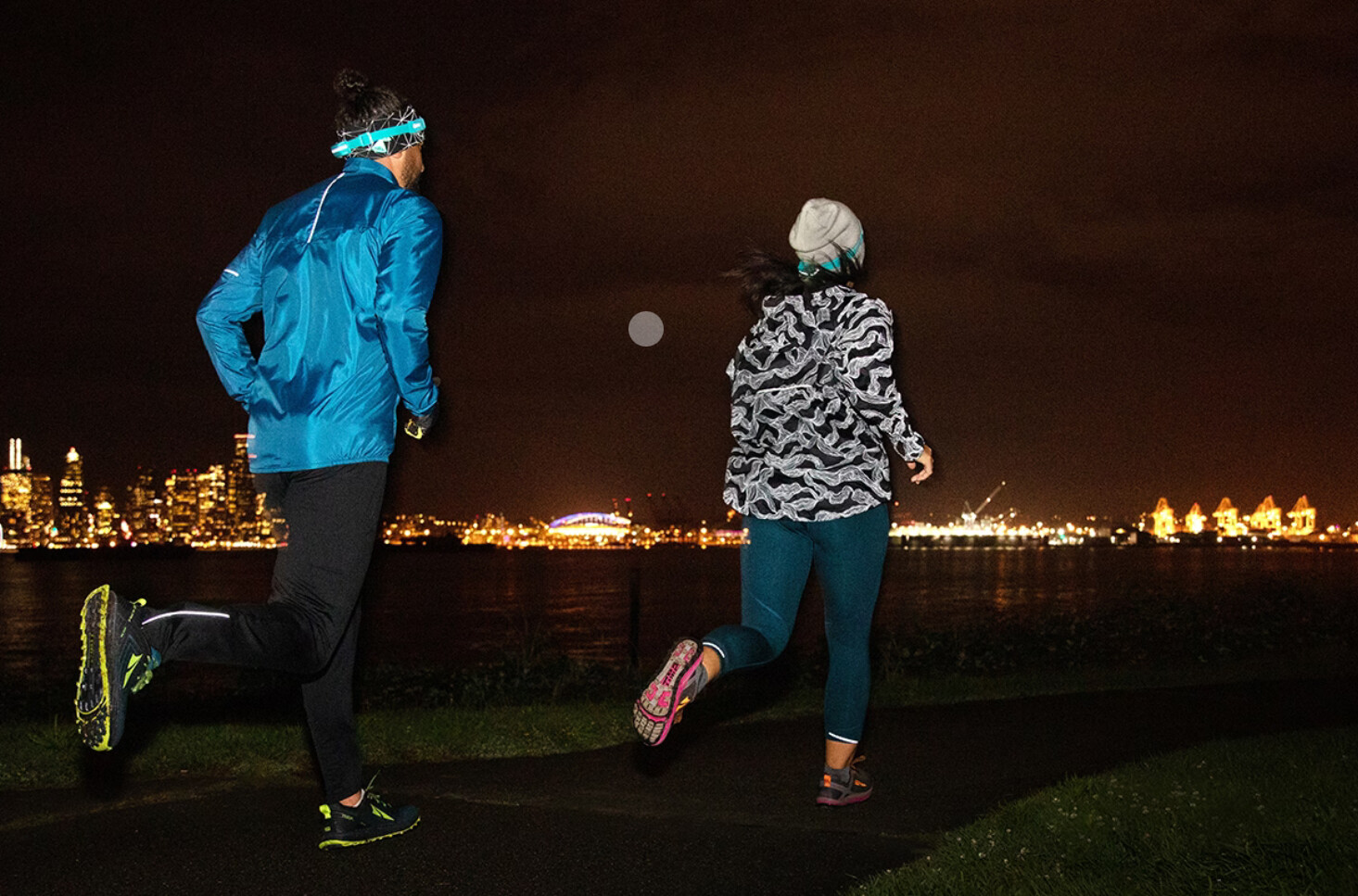
Amie Dworecki, B.S., M.A., MBA, Amie Dworecki, B.S., M.A., MBA, is a running coach and founder of Running With Life.
Brad Whitley, DPT, physical therapist at Bespoke Treatments in Seattle
Marnie Kunz, CPT2, USATF- and RRCA-certified running coach
Most long-distance races take place in the morning, but this half marathon starts right around sunset. Because the scenery of the course is a tad monotonous, the race organizers embrace the adrenaline rush you can get from running under the stars.
I joined as part of a press trip sponsored by Nathan Sports, Skechers, and Swiftwick. The experience reminded me that even when the days are short during the winter and pushing your pace after the sun goes down becomes the norm, night running can be its own unique adventure.
The more I looked into running at night, the more advantages I found—even if you need to take a few extra safety precautions when you’re lacing up.
The perks of running at night
What are the main benefits of night running? Here are a few of the top reasons to get in a nocturnal workout.
1. The temperature is cooler
Earlier in the day before the Joshua Tree race, I’d been cowering from the heat anytime the sun touched my skin. But once it was dark out, the desert air got so cool that my sweat-wicking T-shirt barely had any work to do.
As it turns out, temperatures around 40° Fahrenheit are ideal for long-distance running, largely because our hearts don’t have to work quite as hard to pump our blood to cool us down, according to a May 2012 study in PLOS One.
Even if the mercury doesn’t get quite that low after dark in a hot or humid climate, night running after sunset (or, alternatively, heading out before sunrise) is clearly the way to go to nab those cooler running temperatures.
2. Your body’s more ready to run
Running shortly after rolling out of bed can sometimes feel like wading through molasses. It’s no surprise why: You’ve just been lying stationary for hours, so your body temperature and mobility aren’t exactly ideal.
3. It might feel easier
The dark can be a secret weapon for runners. One August 2012 study in the Journal of Sport & Exercise Psychology on optic flow (our perception of our movement in relation to our surroundings) suggested that because we can’t see as far in the dark, we feel like we’re going faster because close objects seem to pass by more quickly than those in the distance.
Even though your watch might not record any speedier miles, running in the dark can be a helpful confidence boost when you get the sense that you’re zooming along.
4. Night running can help you sleep
How can running at night affect your sleep quality? Despite rumors to the contrary, there’s some evidence to suggest evening runs might actually help you get deeper zzzs.
An October 2018 meta-analysis in Sports Medicine found that as long as you finish running more than an hour before your bedtime, it most likely won’t mess with your sleep quality. Instead, it could actually help you spend slightly longer in those restorative deep sleep stages.
Anecdotally, some people say they also seem to fall asleep faster.
That’s something to experiment with, according to certified running coach Amie Dworecki, CPT. Everybody’s different, so you might need to find out what works best for your own circadian rhythm.
5. You’re likely better fueled
Eating can be tricky for morning runners—you’ll run better with some food in your stomach, but if you don’t give yourself enough time to digest, you might run into GI issues.
At night, though, you should be fairly well-fueled from noshing all day, Dworecki says. Just be sure to have a snack to top off your carbohydrate stores before heading out the door, says certified running coach Marnie Kunz, CPT.
6. It’s more peaceful
Depending on where you run, during the day you might feel like you’re playing Frogger with traffic and pedestrians, dogs, and baby strollers. At night, most of those hurdles typically fade away.
“It's really almost a meditative experience because of the quiet and solitude,” Dworecki says. “It can really add relaxation to your running.”
7. You have more options
Because you’re less likely to have a certain time you need to be back by at night than you would in the morning, it’s easier to choose your own adventure based on how you’re feeling. You can add a couple extra miles if you feel like it, or end early and walk home instead.
Running at night vs. morning: How to choose
Many runners swear by their morning miles. But obviously, the a.m. hours aren’t the only time to run. How do you know whether night or morning runs will serve you best?
For some people, it’s purely logistical: The best time to get in a run is whenever you can run. But if you have a choice, it might help to pay attention to the natural ups and downs in your energy levels.
“If you're a night person, you can actually feel better or more energetic if you're running in the evenings,” Dworecki says. Or, she adds, you might be able to use running to give yourself an energy boost at a time when it would typically dip.
If you’re someone who needs camaraderie to lace up, one of the benefits of night running is you’re more likely to find a group run to join after the work day, or convince a friend to join you for a few social miles.
Even if you’re alone, night running can also give you more of a thrill than the chore-like approach you might take to morning runs.
“It's kind of an adrenaline rush running at night sometimes,” Kunz says.
On the other hand, running in the morning can be safer because there’s typically more people on the street, and more daylight means you’re more visible to cars.
Running first thing in the morning can also make you more consistent—even if you get stuck working late hours or friends convince you to head out for a happy hour, your workout will already be done.
Safety precautions for night running
1. Make sure you have enough light
Unless you know you’ll be running in a well-lit area, you’ll need to bring or wear your own running lights, Dworeck says.
I ran the Joshua Tree Half Marathon with the lightweight Nathan Sports Neutron Fire RX 2.0 Runner’s Headlamp, which securely attached to my forehead, and gave me 250 lumens of light in any direction I turned. Although it took me a little while to find the right spot on my forehead so it didn’t slip or bounce, once I did, I forgot it was even there.
If the thought of wearing a light on your head doesn’t sound appealing, you can also opt for a chest lamp or carry your own small flashlight. There are even have lights you can put on your shoes or your gloves, Dworecki says.
2. Stay visible to cars
Before the race, I was sent Nathan’s Laser Light 3 Liter Hydration Pack, which has a genius double-duty design that gives you a place to stash water as well as lights on the back in case you’re running anywhere there might be cars.
If you don’t have actual lights on your body, at least be sure to wear bright reflective gear so drivers can easily see you. Light-up reflective vests aren’t your only option—these days, many pieces of running gear stylishly incorporate reflective details, and there are even several reflective running shoes.
3. Consider leaving your headphones at home
Night running probably isn’t the right time to zone out to a podcast. Because you won’t be able to see as well, it helps to keep your other senses sharp.
“Watch your use of headphones just to be aware of what's around you,” Dworecki says.
4. Let someone know where you are
Although running when the streets are quiet can feel less stressful than during busier, noisier parts of the day, empty roads or trails can also be dangerous.
“Let someone know where you're going or share your run so they can track you,” Kunz says.
Apps like Strava let you proactively send your location to select contacts in real time. Alternatively, you can choose to stick to sidewalks or a track where you know other people will be out and about.
How to motivate yourself to run at night
After a long day, forcing yourself to get off of your warm couch and out into the dark doesn’t always sound super appealing. Kunz suggests making a promise to yourself to simply run 10 minutes—it’s just a little exercise snack that doesn’t feel like too much pressure.
“You know you can turn back, but once you're out the door, usually you'll feel okay and just keep running,” she says.
Dworecki adds that for some people, it’s easier to run right from their workplace. When I was training for an ultramarathon, for instance, I used to run home four miles from my office every night so that I didn’t waste half an hour commuting on the subway—my commute was my run (and it only took slightly longer). Then, once I stepped in the door, I could just relax without having to convince myself to leave again.
It can also be helpful to make night running more social by joining a group run or turning it into a date with a friend to catch up after work.
“[It] makes your run more fun and it gives you some accountability,” Kunz says. Even running with a dog can help a night run feel less lonely.
FAQ
1. Do I need a light to run at night?
If you’re going on trails or areas without ample street lamps, you’ll want to bring your own light source with you to make sure you can see where you’re going and what you’re about to step on. The most popular option among runners is a headlamp.
2. Can running at night help in managing stress?
Running is always a good stress release—the extra blood flow to our brain triggers a release of dopamine and endorphins, sometimes leading to the famous “runner’s high.” These benefits might be especially welcome at night.
“It's a great way to kind of blow off steam at the end of the day, and help unwind and relax before going to sleep,” Kunz says.
3. Is it bad to run at 10 p.m.?
Sometimes the only chance you have to fit in a workout is after many people go to bed. Dworecki says that sometimes when she’s struggling with insomnia, she might head out for a run around 1 a.m.
Just know that working up a sweat with intense exercise, like running vs. walking, for instance, will raise your heart rate pretty high, so be sure to give yourself enough time (at least an hour) to wind down after you're finished so it doesn’t mess with your sleep.
No matter when you get back home, do a cooldown, take a hot shower, eat some food, and settle in for the night knowing you’ve gotten all those longevity benefits and health perks.
(01/28/2024) ⚡AMPHow to Use the Run/Walk Method for Faster Times and Longer Distances
Adding walk breaks to your training runs and races just might provide your ticket to faster finishes or longer distances.
Many runners have a few dirty little secrets, like not quite making it to the bathroom or chafing in unmentionable spots. But one thing many runners also won’t admit to... walking. That is, unless you embrace the run/walk method, which involves adding precisely planned walk intervals to your runs.
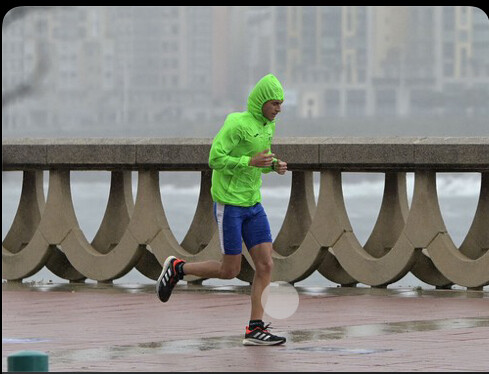
The run/walk method can offer runners many benefits, including helping to fight off fatigue. It can even help you clock faster finish times and maybe even win a race that you thought was out of reach. Just look to Marc Burget for evidence. A ultramarathon run/walker, Burget, 50, won the 2016 Daytona 100 (miles) in 14 hours and 14 minutes which, at the time, was a course record.
“The idea that you should move from walking to running is the wrong framework,” Burget, director of operations at Bailey’s Health and Fitness in Jacksonville, Florida tells Runner’s World. “Instead, putting walks in my race plans allows me to go the whole 100 miles without becoming tired.”
Research supports Burget’s experience. According to a 2016 study published in the Journal of Science and Medicine in Sports, of the 42 runners studied, those who used the run/walk method in a marathon reported less muscle pain and fatigue and finished with similar times, compared to those who only ran.
So, while it’s true that runners typically move faster than walkers, it’s also true that during long races or training runs, taking well-timed walk breaks can help you reach your goals. To understand the run/walk method, here are common myths and truths about the training and racing strategy, plus how to test out the system for yourself.
Myth: Only Slow Runners Use the Run/Walk Method
Truth: Slow Walks Support Faster Finishes
In recent years, more runners and experts have learned that zone 2 running (that is, lower effort runs), improves many elements of fitness and supports your ability to run both long- and short-distance races without fatiguing as quickly.
Whatever distance you race, it’s important to manage your energy levels from the start, so you can make it to the finish without bonking. While fuel plays a role in maintaining energy, how you pace a race is also crucial.
“There’s a myth that a lot of runners perpetuate about banking time,” Chris Twiggs, chief training officer at Galloway Training Programs tells Runner’s World. “The time bank doesn’t exist. The bank that does exist is the bank of energy. When you walk during your run, you are investing in the bank of energy.”
Burget agrees. The first time he ran 100 miles, he planned to run the whole way, but because of exhaustion, he ended up walking about 20 miles. Once he started to train with the run/walk method, he cut his walking down to 10 to 15 miles thanks to 30-second walk intervals. Now, with experience, most of his ultras include eight to 10 miles of walking and he either alternates three minutes of running and 30 seconds of walking, or 0.3 miles of running and 30 seconds of walking, depending on his race strategy and goals.
How to use the run/walk method to get faster:
If you have your mind on a PR, the run/walk method could help you get there. You just have to practice.
“Your walk should be brisk, but not work,” says Burget. “You want your heart rate to drop down.” You also want to give your muscles a break from the intense effort to allow for a midrun recovery.
Because you’re walking, you also need to make your run intervals faster than if you’re going for a steady-state run. For example, let’s say you want to average an 8-minute per mile pace for a marathon. Try running a 7:40 pace for nine-tenths of a mile, then walk for 30 seconds, so that you finish a mile in eight minutes. “You’re not losing 30 seconds,” Burget explains. “You’re moving forward, but part of your pace is a walk.” Likewise, if you want to maintain an 11-minute pace, you could do a 40-second walk every three minutes of running at around a 10:20 pace per mile.
If you have been running for a bit but you don’t know where to start with your interval ratios and paces, do a “magic mile” run, both experts say. This will help set your goal pace for a race. With that magic mile time in mind, set your interval ratios, keeping in mind that generally, the faster your average pace, the longer your run intervals. For example, if you’re aiming for an 8-minute mile average pace, you may run three minutes and walk 30 seconds. But if you’re aiming for a 10-minute mile average pace, you may run 90 seconds and walk 30 seconds.
If you’re a beginner, Twiggs suggests starting your workouts by running for 30 seconds and walking for 30 seconds. If that seems too easy or you can feel yourself wanting to run more keep the 30-second walk, but run slightly longer between walks, he says.
You can keep track of your ratio using time or distance. Twiggs uses time, while Burget often pays attention to the mile markers in his races, walking for the last tenth of each mile. Play around with what works best for you.
“It took me a few months to figure out the ratio that works for me,” says Burget, who has also run a 2:50 marathon by alternating six-minute runs and 15-second walks.
When you want to actually increase your average pace per mile, do another magic mile to see how much faster you can go, and then either increase the speed of your run intervals, add more time to the run intervals, or cut down on the time of your walk breaks.
Myth: Only Beginners Take Walk Breaks
Truth: The Run/Walk Method Can Work for Everyone
While there are no statistics on how many runners use walks in their training or in their races, how long they’ve been running, or how “tired” any runner is when they walk, we can confidently say that runners who strive to incorporate walks into their runs are all ages and all levels of fitness.
Both Burget and Twiggs run ultras, something less than 1 percent of Americans did in 2023, and ultrarunners typically aren’t new to the running game.
In fact, planning your run/walk strategy for races can take practice so many experienced runners and walkers may turn to it. For example, Burget has learned to time his walks to match the location of hydration stops and elevation gain in his ultras so he can maximize his running potential. But that came with lots of practice using the run/walk method.
How to use the run/walk method to advance your race results:
Always study the details of your upcoming race and consider creating a strategy to match walks with water stations and hills. “Looking at the landscape when planning your run/walk is important,” says Burget.
“Walking hills is smart because we want to do what we can to conserve our energy so that when we expend our energy we get the most bang for our buck,” says Twiggs.
Running up hills during training will help you build leg strength, but in a race it could decrease your pace (and finish time) because it takes so much effort, adds Twiggs. Without planning, you might find yourself running up a hill (wasted effort) and then walking a descent as you recover. Planning ahead can help you flip that to maximize your energy and increase your speed.
The point: Go into your race with a clear plan that has specifically planned walk breaks so you’re not just slowing it down when you feel like it, which could be a detriment to performance, Twiggs explains. Playing around with your run/walk ratios during training will also help you set this in stone come race day.
Myth: Being a Run/Walker Will Limit Your Race Opportunities
Truth: Walks Can Help You Participate in Longer, Harder Races
The reason running is defined as “high” intensity while walking is considered “low to moderate” intensity is because it takes more energy to run than to walk. Typically, your heart beats more frequently when you run than when you walk in order for your body to produce that extra effort.
Break up those runs with walks, though, and you are giving your heart, muscles, bones, and joints a break. It’s helps with the deposit into your energy bank, as Twiggs says. The benefit of those deposits? You may be able to add to your race schedule, say by running a half marathon instead of a 10K, if that has seemed out of reach. If you think you can’t run a marathon, could you run/walk one?
To prove the point that adding walks into long runs can cut down on fatigue and help you go longer (or even run more frequently), take another example from Burget: In 2023, he ran seven marathons in seven consecutive days, aiming for a sub-three-hour finish for each race. While he ran just over three hours in two of the races, his other times ranged from 2:52:15 to 2:58:57. “I used the same interval for each race,” Burget says, “a 20-second walk during each mile.”
How to use the run/walk method to run longer:
While you experiment with run/walk intervals, try to notice how you feel in comparison to runs that don’t include walks. Do you feel like you can increase your typical run distance or duration by a half-mile or 10 minutes?
To progress to longer distances, you have a variety of options: You can increase the pace of your runs or shorten the walk breaks you take, says Twiggs, while still running for the same overall amount of time. (This will increase your average pace.) Or you can maintain your pace and your ratio, but add more rounds of intervals, so you run for a longer duration and therefore, distance, which may come easier than only running because of the added recovery element. Do what feels best for you.
In addition to helping you conquer longer distances, the run/walk method might increase your race options by also allowing you to take part in multi-day events, such as runDisney weekends or Philadelphia’s Marathon Weekend, which includes an 8K, half, and marathon.
While some runners, of course, take part in these events without using the run/walk method, “we’ve seen anecdotally that for millions of runners, this allows them to run races they would not have otherwise considered,” says Twiggs, because it can allow for that quicker recovery.
(01/28/2024) ⚡AMPWhat Runners Should Know About Vitamin B12 Deficiency
Feeling extra fatigued lately? There are lots of reasons why you may not have the usual pep in your step—from overtraining to underfueling to poor sleep habits that are hampering your recovery. But one less obvious factor worth considering: vitamin B12 deficiency.
Most people are not at risk for B12 deficiency, Selvi Rajagopal, M.D., M.P.H., assistant professor of medicine at The Johns Hopkins University School of Medicine, tells Runner’s World. But it’s more common than you may think, especially among seniors. An estimated 20 percent of people over age 60, and about 6 percent of people younger than that are deficient, according to research.
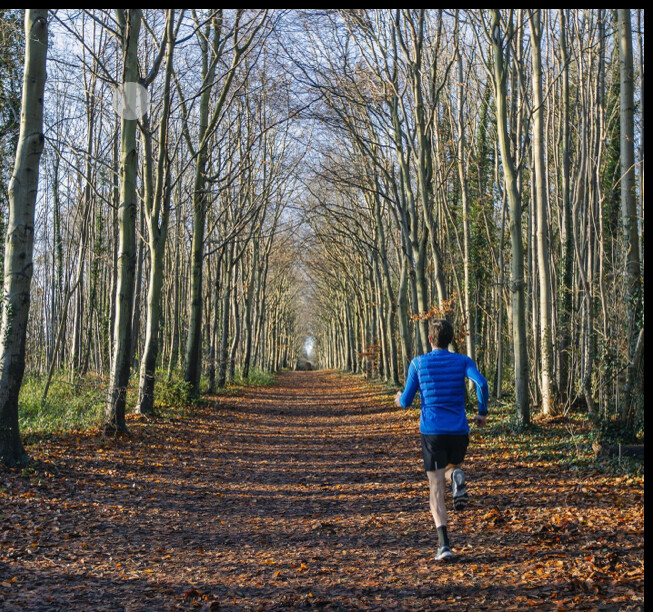
To make sure you’re filled up on the vitamin, here’s what to know about its benefits, where to find it, and signs of vitamin B12 deficiency to look for, so you know when to talk to your doctor.
What to Know About the Importance of Vitamin B12
Vitamin B12 plays an essential role in the growth and development of our nervous system tissues and blood cells, Mark Loafman, M.D., a Chicago-based family physician tells Runner’s World. It’s important for nerve signaling and brain functioning, adds Rajagopal. And it helps break down homocysteine, an amino acid that, if present in high enough amounts, can damage the heart and increase risk of dementia, heart disease, stroke, and osteoporosis, Jen Graham, M.S., R.D.N., a Tallahassee, Florida-based registered dietitian nutritionist with Top Nutrition Coaching, tells Runner’s World.
Our bodies don’t create B12 on their own, so we need to get it from our diet. It’s typically found in animal foods—like meat, eggs, liver, seafood, and dairy products—as well as fortified cereals.
Because animal products are a main source of this vitamin, folks who follow a strictly vegan or vegetarian diet and don’t take a B12 supplement are at “significant risk” of deficiency, Loafman says.
Other susceptible people include those who have conditions that interfere with their ability to absorb B12 from the GI tract, including those with celiac disease (and other GI conditions, like inflammatory bowel disease), pernicious anemia (an autoimmune condition), and people who have had bariatric gastric bypass surgery, Loafman explains.
Older adults, including those older than age 60, are also at risk of deficiency. That’s because the functioning of your gastric cells naturally declines as you age, decreasing absorption of the vitamin, Loafman adds.
Low levels of B12 are typically detected through a blood test, Rajagopal explains, which you can request from your doctor or may otherwise be included as a part of a routine physical exam. The recommended dietary allowance for B12 ranges from 0.4 to 2.8 mcg per day and varies based on age, sex, and whether you’re pregnant or breastfeeding, according to the National Institutes of Health.
Now that you know the importance of vitamin B12 and who is most affected by deficiency, let’s dig into the signs you’re not getting enough B12—plus how to remedy low levels.
Signs of Vitamin B12 Deficiency
Having too little vitamin B12 can cause a host of signs and symptoms. These are directly linked to your “body’s inability to keep up with the production of new blood cells and/or the maintenance and preservation of nervous tissues,” Loafman explains.
Here’s what to watch out for:
Fatigue, weakness, and lightheadedness. B12 deficiency can lead to megaloblastic anemia, a condition where you don’t have enough red blood cells to carry oxygen to your tissues, Rajagopal says. This, in turn, can cause you to feel tired and weak, she explains. It could also hamper your exercise performance, Loafman adds. In severe cases, the lack of red blood cells can be life threatening. The good news: This type of anemia usually occurs gradually and you’d likely notice signs of it with routine blood testing before developing significant symptoms, Loafman explains.
Numbness and tingling in your limbs. These sensations are often symmetric (meaning, they happen on both sides of the body) and typically involve the legs more than the arms, says Rajagopal. It can also crop up in the fingers and toes, she adds. Numbness and tingling happens because B12 deficiency decreases your ability to maintain nervous system tissue, Loafman explains. This effect on the nervous system can also alter your gait and cause difficulty walking.
Mood changes, trouble concentrating, insomnia, irritability, and possible memory loss. When your body isn’t able to maintain its nervous system tissue, it can cause a host of neuropsychiatric symptoms and cognitive dysfunctions, Loafman explains.
Oral irritation and recurrent ulcers. The mucous membranes in your mouth and throat require rapid new cell growth to keep up with the almost constant turnover of cells, so when these areas aren’t getting the new cells they need due to B12 deficiency, your mouth can bear the brunt of it. In addition to oral irritation and frequent ulcers, you may also notice changes to your tongue, including pain, swelling, tenderness, or pigmentation changes, Rajagopal explains.
Skin changes, like rashes and changes in pigmentation. Again, this is because B12 plays a vital role in cell production, Loafman explains, so when your levels are subpar, you may notice it influences your skin health.
GI symptoms, including nausea and diarrhea. Having low levels of B12 can cause fewer red blood cells to reach your digestive tract, which in turn can trigger symptoms like nausea and diarrhea, Graham explains. In turn, feeling nauseous can lower your appetite, she adds.
Irregular heart rate. With B12 deficiency, your heart may beat faster to make up for the reduced number of red blood cells in the body, Graham says. This is your body’s way of trying to ensure enough oxygen gets circulated to all your organs and bodily systems, she explains.
How to Know if You Need a Vitamin B12 Supplement
If you’re diagnosed with a vitamin B12 deficiency—which, as mentioned, can be determined from a blood test at your doctor’s office—then it’s wise to up your stores by taking a B12 supplement.
Additionally, anyone who follows a vegan diet should take a B12 supplement to prevent or correct mild deficiencies that may already be developing, Loafman says. He also recommends supplementation for people whose diets include meat or dairy, but focus more heavily on plant-based foods. Important caveat: There are a lot of health benefits associated with solely and largely plant-based diets, “so no one should feel compelled to consume animal products,” Loafman says. Instead, they should add a B12 supplement to their daily routine.
You may also benefit from a B12 supplement if you have an autoimmune disease that attacks the stomach lining or GI tract (like Crohn’s or celiac disease), have had weight-loss surgery, or are taking heartburn medications that suppress stomach acid, Graham says. Your stomach acid is what extracts B12 from the food you eat, so it’s harder for that to happen if you have less stomach acid, she explains. Older adults may also benefit from supplementation, as they are at greater risk of deficiency.
Just keep in mind: “There is no guideline or strong evidence base to support vitamin B12 supplementation without proven deficiency,” Rajagopal says. So you may want to first get your levels checked and/or ask your doctor if supplementation is recommended for you before taking a daily pill.
Loafman, for his part, says patients who are struggling with fatigue or other B12 deficiency symptoms often ask him to prescribe supplements or administer B12 injections, even though they don’t have any risk factors for deficiency and a blood test has confirmed their levels are in the normal range. “Often, they have been told or have heard a B12 shot will boost energy levels or help with weight loss,” Loafman explains. “I wish this were the case, but unfortunately there is no evidence of benefit or improved outcome by taking ‘extra’ B12.”
To that end, if you’re struggling with fatigue, poor performance and/or mood-slash-cognitive concerns, it’s wise to get evaluated by your doctor, Rajagopal advises. They can confirm whether you do have B12 or other micronutrient deficiencies and help you figure out next best steps.
How to Choose a Quality Vitamin B12 Supplement
If you’ve determined B12 supplementation is right for you, the next step is to get a high-quality product.
In the United States, vitamins and supplements are not formally regulated, so it’s best to buy supplements that have been tested by an independent third-party company for quality, safety and purity, Graham says.
Loafman recommends supplements certified by the United States Pharmacopeia (USP) or National Sanitation Foundation (NSF). “I would not purchase or consume an over-the-counter product that does not have this certification,” he says. You can also get a B12 prescription from your physician, which will assure you are getting a product regulated by the Food and Drug Administration, Rajagopal says.
Look for supplements containing the natural form of B12 (methylcobalamin) instead of the synthetic (cyanocobalamin) because the latter has the potential to impair kidney function in people with borderline kidney problems, Graham says.
In some cases, B12 injections are recommended over oral supplements. This might be at the beginning of deficiency treatment to obtain faster results, or because your body’s decreased absorption of B12 is so severe that your levels can’t be fixed with high doses of oral treatment, Loafman explains.
The dosage for your B12 supplement, and which form is right for you, will depend on factors including your specific level of deficiency. Again, this is why it’s worthwhile to first check in with your doctor.
(01/28/2024) ⚡AMPEdesa smashes Osaka course record, Maeda breaks Asian record
Workenesh Edesa took more than two minutes off the Osaka Women’s Marathon course record, winning the World Athletics Platinum Label road race in an equal PB of 2:18:51 on Sunday (28).
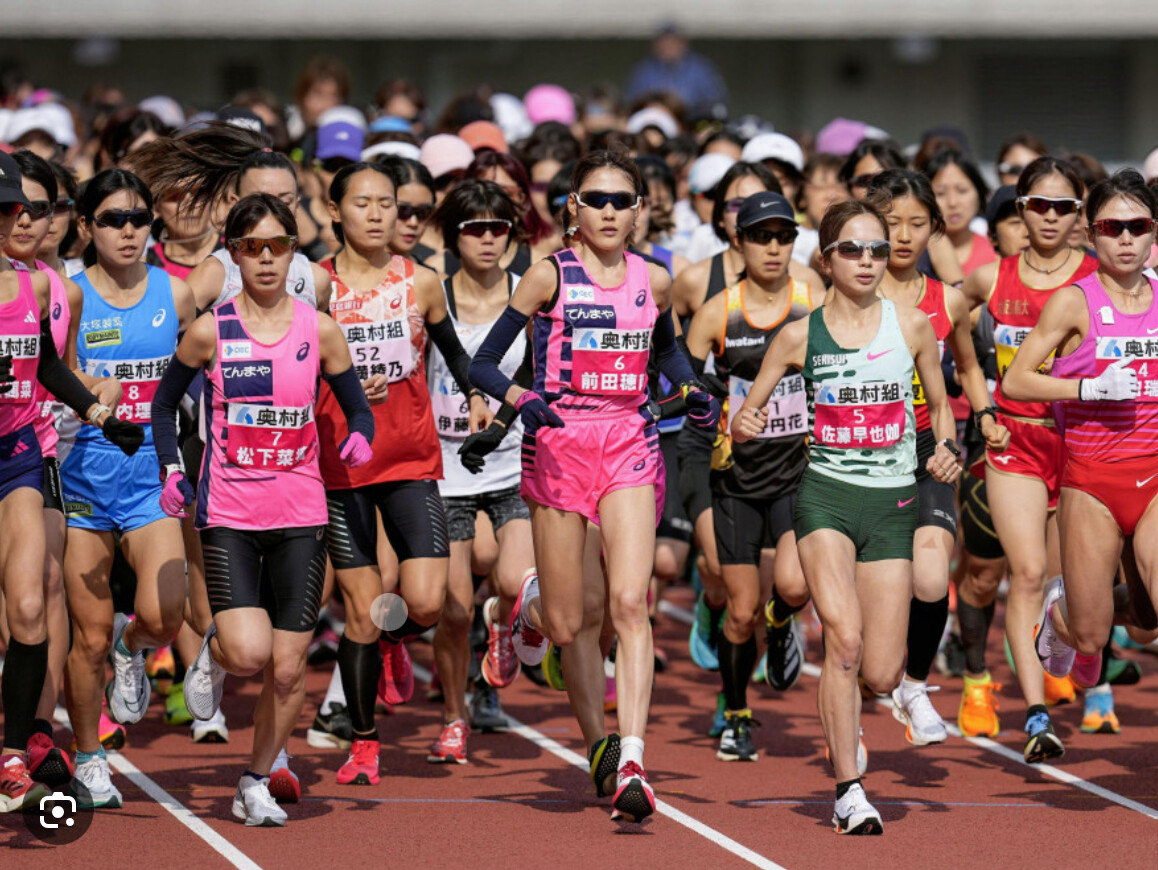
In a close race, the Ethiopian won by just eight seconds from long-time leader Honami Maeda of Japan, who clocked an Asian record of 2:18:59. Her time also puts her in a strong position to claim a spot on Japan’s team for the Paris Olympics later this year.
Five women – Edesa, Maeda, three-time winner Mizuki Matsuda, Ugandan record-holder Stella Chesang and Sayaka Sato – ran together for the first half, passing through 5km in 16:32 and 10km in 32:59. By the time they reached half way in 1:09:46 – comfortably on schedule to break Matsuda’s course record of 2:20:52 – they had a lead of more than two minutes on the chase pack.
Maeda tried to push on in the second half and the lead pack soon became strung out, Matsuda being one of the first to fall behind. Maeda built up a five-second lead over Edesa at 30km, passing through that checkpoint in 1:38:36, while Chesang was further back in third, a few seconds ahead of Sato.
But after another kilometre, Edesa caught up with Maeda and the Ethiopian gradually built up an 11-second lead by 35km (1:54:46). Maeda refused to let Edesa get out of her sights, though. Chesang appeared to have a comfortable 24-second lead over Sato at this point, while Matsuda was a distant fifth, two minutes behind the leader.
Edesa held on to her lead through to the finish with Maeda chasing hard behind. Edesa crossed the line in 2:18:51, with Maeda taking second in 2:18:59, taking 13 seconds off the Japanese and Asian record set in 2005 by 2004 Olympic champion Mizuki Noguchi. But the real drama was unfolding behind as Matsuda passed Sato and then Chesang to make her way into third spot, crossing the line in 2:23:07. Chesang took fourth (2:23:36), more than a minute ahead of Sato. Germany’s Katharina Steinruck – daughter of three-time Osaka winner Katrin Dorre-Heinig – was sixth in a PB of 2:24:56.
“My goal was to break the course record,” said Edesa, who now shifts her attention to success at the Boston Marathon in a few months’ time.
Maeda, whose previous PB was 2:22:32, also admitted she had records on her mind leading up to today’s race. “In the later part of the race, I wasn’t sure if I could accomplish my goal because the wind and rain hit me in the final stages.”
(01/28/2024) ⚡AMP
AIU ban James Karanja for four years
James Karanja, the athlete who competed and won a race during his provisional suspension, has been banned for four years by the AIU.
Kenyan long-distance runner James Karanja has been slapped with a four-year ban by the Athletics Integrity Unit for violating an anti-doping rule.
Karanja tested positive for the use of 9-norandrosterone, 19-noretiocholanolone, Nandrolone, and his results from September 10, 2023, have been disqualified.
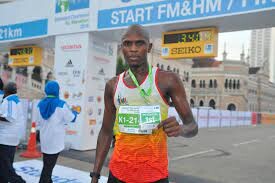
19-norandrosterone and 19-noretiocholanolone are Metabolites of 19-nortestosterone (Nandrolone) (and 19-norandrostenedione) which are Prohibited Substance under the WADA 2023 Prohibited List under the category S1.1 Anabolic Androgenic Steroids (AAS). They are non-specified substances prohibited at all times.
The AIU explained that the athlete failed to respond to any of their messages and therefore he will be banned for four years unless he reaches out and proves that the Anti-Doping Rule Violations were not intentional.
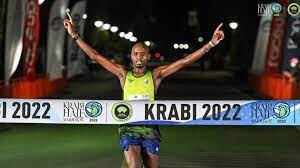
“The Athlete has not demonstrated that the Anti-Doping Rule Violations were not intentional. Therefore, the mandatory period of Ineligibility is a period of Ineligibility of four (4) years,” the AIU further noted.
Meanwhile, after being provisionally suspended last year, Karanja breached the AIU rules and went ahead to compete and win the Tropical Rainforest Run, a trail half-marathon in Tawau Hills, Malaysia.
The AIU makes it clear that during a provisional suspension, an athlete is not supposed to compete as they conduct their investigations.
According to the AIU, Karanja tested positive for the prohibited substance Norandrosterone during an in-competition test at the 2023 Kuching Marathon, where he finished fourth and was eligible for prize money.
(01/27/2024) ⚡AMPby Abigael Wuafula
Paul Chelimo is set to make marathon debut at Olympic Trials
Paul Chelimo, an Olympic 5000m silver and bronze medalist, will make his marathon debut at the U.S. Olympic Trials on Feb. 3 in Orlando.
“Ever since I was a kid, I dreamed of running a marathon… The day has come- this is it!” was posted on his social media Friday.
Chelimo, 33, qualified for the marathon trials by running a 1:02:22 half marathon last April 2, safely quicker than the 1:03:00 minimum to get into the field.
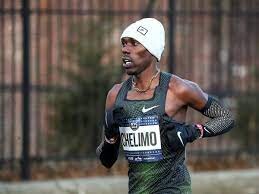
He didn’t publicly commit to racing the marathon trials until now. He could still contest the track trials in June.
“Let’s start by Orlando... then we will see!” Chelimo’s agent wrote in an email when asked about track trials.
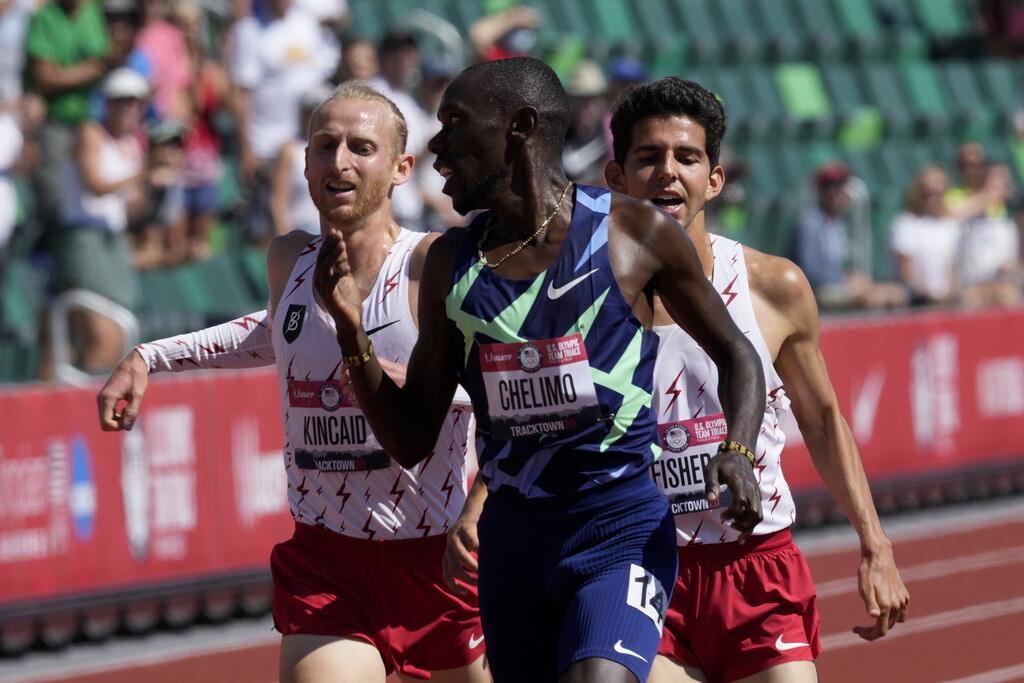
At marathon trials, the top three finishers on Feb. 3 are likely to make up the team for Paris. Since Chelimo has never raced a marathon, he also must run 2:11:30 or faster to hit a minimum qualifying time for Olympic eligibility.
Chelimo made five of the last six Olympic or world outdoor championships teams on the track in the 5000m. He won Olympic silver in 2016 and bronze in 2021, the latter being the lone U.S. men’s distance medal at the Tokyo Games.
Now, he joins a recent list of American global track medalists to move up to the marathon after Kara Goucher (2007 World 10,000m silver), Shalane Flanagan (2008 Olympic 10,000m silver), Galen Rupp (2012 Olympic 10,000m silver) and Bernard Lagat (world 5000m medals in 2007, 2009 and 2011).
Jenny Simpson, a world champion and Olympic bronze medalist at 1500m, also plans to make her marathon debut at the Feb. 3 trials.
Rupp made the 2016 Olympic marathon team in his debut at the distance at those trials. Molly Seidel did the same for the Tokyo Games. Each won a bronze medal in their first Olympic marathon.
Rupp, eyeing a fifth Olympics, headlines the men’s trials field along with Conner Mantz, the fastest American marathoner in 2022 and 2023 going for his first Games.
(01/27/2024) ⚡AMPby Olympic Talk
2024 US Olympic Trials Marathon
Most countries around the world use a selection committee to choose their Olympic Team Members, but not the USA. Prior to 1968, a series of races were used to select the USA Olympic Marathon team, but beginning in 1968 the format was changed to a single race on a single day with the top three finishers selected to be part...
more...Japan´s Mizuki Matsuda is aiming to become the first four-time winner at the Osaka Women’s Marathon
Course record-holder Mizuki Matsuda is aiming to become the first four-time winner at the Osaka Women’s Marathon, but the Japanese runner will face stiff opposition at the World Athletics Platinum Label road race on Sunday (28).
Matsuda is one of three women to have won in Osaka three times, her latest victory coming just two years ago in a PB and course record of 2:20:52. Her last race was five months ago at the World Championships in Budapest, where she finished 13th.
She didn’t compete at the Marathon Grand Championships in October, Japan’s main selection race for the Olympic Games. But the top-placed Japanese runner in Osaka could potentially bump off the provisional third team member, Ai Hosoda, if they run faster than 2:21:42 – Hosoda’s best clocking within the qualifying window. The Nagoya Marathon in March will be the final opportunity for Japanese runners to claim an Olympic berth.

Matsuda’s motivation will be high, but she’ll face three formidable opponents from overseas.
Workenesh Edesa is the fastest in the field, boasting a PB of 2:18:51 from the 2022 Berlin Marathon. She has finished on the podium in 10 of her 15 career marathons, and she has bettered 2:21 in her past four races over the classic distance. Last year she won in Prague, then went on to clock 2:19:40 in Berlin.

Uganda’s Stella Chesang could be something of an underdog. The 2018 Commonwealth 10,000m champion has only contested one marathon to date, but she clocked a national record of 2:20:23 to finish third in Hamburg.
Edesa’s fellow Ethiopian Meseret Gola will also be highly motivated on Sunday, having finished second last year. In fact, she has finished runner-up in six of her 10 most recent marathons – including at the 2022 Seville Marathon, where she set her PB of 2:20:50 – so will be keen to claim the top spot of the podium.
Matsuda won’t be the only Japanese runner vying for a last-minute call-up to the Olympic team. Sayaka Sato represented Japan at last year’s World Championships in Budapest, following a 2:22:13 PB run in Berlin in 2022. Honami Maeda won the Marathon Grand Championships ahead of the Tokyo Olympics but finished seventh at the latest edition in October. Natsumi Matsushita, meanwhile, finished fifth in that race and will be hopeful of showing improved form on Sunday.
Leading elite entries
Workenesh Edesa (ETH) 2:18:51
Stella Chesang (UGA) 2:20:23
Sisay Meseret Gola (ETH) 2:20:50
Mizuki Matsuda (JPN) 2:20:52
Sayaka Sato (JPN) 2:22:13
Honami Maeda (JPN) 2:22:32
Natsumi Matsushita (JPN) 2:23:05
Rie Kawauchi (JPN) 2:25:35
Ayano Ikemitsu (JPN) 2:26:07
Yuna Daito (JPN) 2:26:09
Daeun Jeong (KOR) 2:28:32
Kaena Takeyama (JPN) 2:29:20
Militsa Mircheva (BUL) 2:29:23
(01/27/2024) ⚡AMPby World Athletics
Osaka International Womens Marathon
The Osaka International Ladies Marathon is an annual marathon road race for women over the classic distance of 42.195 kilometres which is held on the 4th or 5th Sunday of January in the city of Osaka, Japan, and hosted by Japan Association of Athletics Federations, Kansai Telecasting Corporation, the Sankei Shimbun, Sankei Sports, Radio Osaka and Osaka City. The first...
more...Could Sound Therapy Improve Your Athletic Performance?
You might listen to pump-up music while running to help you churn out the miles. But tuning into another form of sound could offer the opposite effect. Sound therapy—also known as sound baths or sound healing sessions—work to bring you into a state of calm and relieve stress. Sound baths aren’t just for savasana in yoga class, either, as the acoustic notes can offer benefits for athletes.
Here’s everything you need to know about sound therapy and how it can help your mindset and your recovery

What is sound therapy?
While sound therapy in Western medicine is a newer practice, it’s grounded in a very long tradition. “Sound therapy is the practice of not only auditory, but also vibratory inputs to influence physiology,” says Nathan R. Handley, M.D. medical oncology and integrative medicine doctor at Jefferson Health in Philadelphia. Think of sounds like crystal bowls, chimes, light drumming, or gongs, all emitting different frequencies and working to create a relaxed mind and body experience.
Some Eastern philosophies hold that the universe arose from sound—like the “om” chanting sound. “One of the principles with Eastern medicine is that when someone is sick they can be nourished by the correct sound,” Handley says, because the specific vibrations help to bring the body back into a healthy state. Eastern medicine traditions have a deep appreciation of the mind-body connection, and an awareness that sound can quiet the mind and reduce stress, Handley explains.
Handley uses vibro acoustic therapy in his medical practice, which is the combination of audible sound and vibration to decrease stress and promote relaxation. Transducers—which emit vibrations—can also be embedded in soft furniture so that the healing is felt as well as heard, Handley adds. “Sound therapy is really interesting because in one form or another, it has really been part of traditional healing culture for thousands of years,” he says.
The premise of sound therapy is simple: Certain sounds are naturally meant to bring you into a state of calm, relaxation, and healing. “Sound is energy. Specific vibrations carry different energy. In Eastern medicine, different parts of the body are associated with specific energies, frequencies, and vibrations. Sound, then, is a vibrational force that can influence (and ideally harmonize) these energies,” Handley says.
What are the benefits of sound therapy?
1. Stress Relief and Improved Mood
Listening to relaxing, repetitive sounds can help your body calm down, relax, and relieve tension, and can help you focus on the present moment, says Michelle DiBlasi, D.O., chief of inpatient psychiatry at Tufts Medical Center in Boston.
In fact, research published in the Journal of Evidence-Based and Complementary Alternative Medicine in 2017 backs up the benefits of sound therapy for mood and stress. The study, which involved 62 men and women with an average age of about 50, found that following a Tibetan singing bowl meditation, participants reported reduced feelings of tension, anger, fatigue, and depressed mood.
DiBlasi explains that sound therapy may work to reduce stress and boost mood potentially by stimulating the vagal nerve. The vagal nerve carries signals between the brain, heart, and digestive system, and is responsible for triggering a parasympathetic response, or our “rest and digest” state. When we’re in a parasympathetic state, we experience a lower heart rate and relaxed breathing, which in turn, helps the mind relax, Diblasi explains.
2. Better Sleep Quality
You’re probably aware that a restful night’s sleep is important to feeling your best, and helping you perform better as a runner. It’s easy to fall into patterns that disrupt sleep quality, like scrolling on phones or watching TV before bed. But there’s promising research that sound therapy can help with sleep.
This is especially true for a particular kind of sound therapy known as binaural beats. The Sleep Foundation defines binaural beats as an auditory phenomenon that occurs when listening to two different frequencies at once. “The strategy with binaural beats is to create the perception of a specific frequency by presenting two slightly different frequencies to each ear,” Handley says.
These frequencies then influence your brain waves frequencies, which can lead to different effects, Handley explains. For example, “delta waves are associated with deep sleep; theta waves are associated with light sleep or deep relaxation; alpha waves are associated with a relaxed state, when the brain isn’t focused on anything in particular; beta waves occur during periods of alertness and engagement; and gamma waves are associated with learning, problem solving, and high-level cognition,” he says. Binaural beats tap into the frequencies of these brain waves (often delta waves) to help you find calm and sleep better.
A pilot study published in Digital Health in 2022, examining the sleep of 20 healthy participants, found that the practice of listening to 90 minutes of delta binaural beats had a positive effect on sleep quality, as shown by markers like the number of awakenings and sleep duration. Participants also reported increased sleep satisfaction after one week of listening to the binaural beats, as well as reduced anxiety and anger.
While there are a host of remedies on the market advertised to help you sleep, a good alternative to pill therapy might just be sound therapy. “I think anything like this where you’re doing something that’s relaxing your mind and body certainly gets you ready for sleep,” Diblasi says. “It’s a great exercise to do before bed.”
3. Pain Management and Recovery
“Sound baths and sound therapy are helpful for athletes because they can lead to the relaxation response which can be helpful for not only recovery, but also performance enhancement,” Handley adds.
Sound meditation can also have a positive impact on perceived levels of pain. According to research published in Journal of Evidence-Based and Complementary Alternative Medicine, participants who listened to singing bowls experienced a reduction in pain and tension after the therapy.
While the exact mechanism for this is unclear, researchers found that for many participants, mood improved while listening to the sound therapy, which could account for physiological changes in the body. In other words, when your mind relaxes, your body might follow suit.
4. Increased Heart Rate Variability
“There is increasing evidence that sound therapy can enhance heart rate variability (HRV),” Handley says. HRV is the variation in the intervals between heart beats and can signal your adaptability. A higher HRV can indicate better cardiovascular health, stress resilience, and enhanced athletic performance, he explains.
“Because HRV indicates increased parasympathetic activation, it is indicative of better recovery and preparedness for intense training sessions,” Handley adds.
A study published in Cureus in 2023, which involved 23 participants, found that the practice of humming—considered a form of sound therapy—increased heart rate variability. The study indicates that humming can create a unique pattern of the heart’s signal, which can potentially lower sympathetic activation (our stressful state) and increase the parasympathetic tone (our relaxed state).
What’s more, the study found that after taking part in the humming exercise, the practice increased breathing quality and consistency through increased HRV and lung function. Researchers found that the effects of humming continued to help even when the individual was not consciously doing the activity.
How to Get Started With Sound Therapy
In order to experience the benefits of sound therapy, DiBlasi recommends listening for 30 to 90 minutes, but if you have less time, it’s still worth a listen. “If you only have 10 minutes before you go to work, or before bedtime, that could still be helpful,” she says.
To get started with sound therapy, these five apps provide a relaxing experience. All you need to do is find a quiet, comfortable place to tune in and chill out.
1. Apple Fitness+ ($10/month or $79/year)
Beginning in 2024, Apple Fitness+ introduced a new meditation theme called Sound. While a trainer will start off the meditations, the five-, 10-, and 20-minute sessions allow you to focus in on calming tones and rhythms, with the help of gongs and singing bowls.
2. Binaural Beats App ($3/month)
This app is exclusively designed to offer binaural beats, which you should listen to with headphones to experience the different frequencies in each ear. The app allows you to select your focus, like sleep or stress relief.
3. Calm App (Sound Baths) ($14/month)
Users can select their focus from within the sound bath categories, including sleep, meditation, work, wisdom, and even sounds baths meant for children.
4. The Sound Bath App ($10/month)
Choose from various sound baths based on your mood and your needs. The app includes a library of more 100 options, plus eight-hour evening baths to last you through a good night’s sleep. Plus, you can tune into twice-weekly live-stream sessions, which also feature live chats with facilitators.
5. Third Ear (free for limited use or up to $10/month)
You can choose to listen to different sounds like gongs, bowls, chimes, mantras, or binaural beats. Free sound baths range from three to five minutes, while full use of the app offers 30- to 50-minute sessions.
(01/27/2024) ⚡AMPWhat Blood Testing Data Reveals About Runners' Health
I used to think running was a panacea. "If the furnace is hot enough, anything will burn, even Big Macs," as the fictional miler Quenton Cassidy once said. Then, about a decade ago, there was a big surge of doubt about the health effects of running. Most prominent was the suggestion that even modest amounts of running might damage your heart-"One Running Shoe in the Grave," as the Wall Street Journal put it-but running was also accused of broader sins like promoting inflammation, causing muscle loss, and wreaking havoc on blood sugar levels.
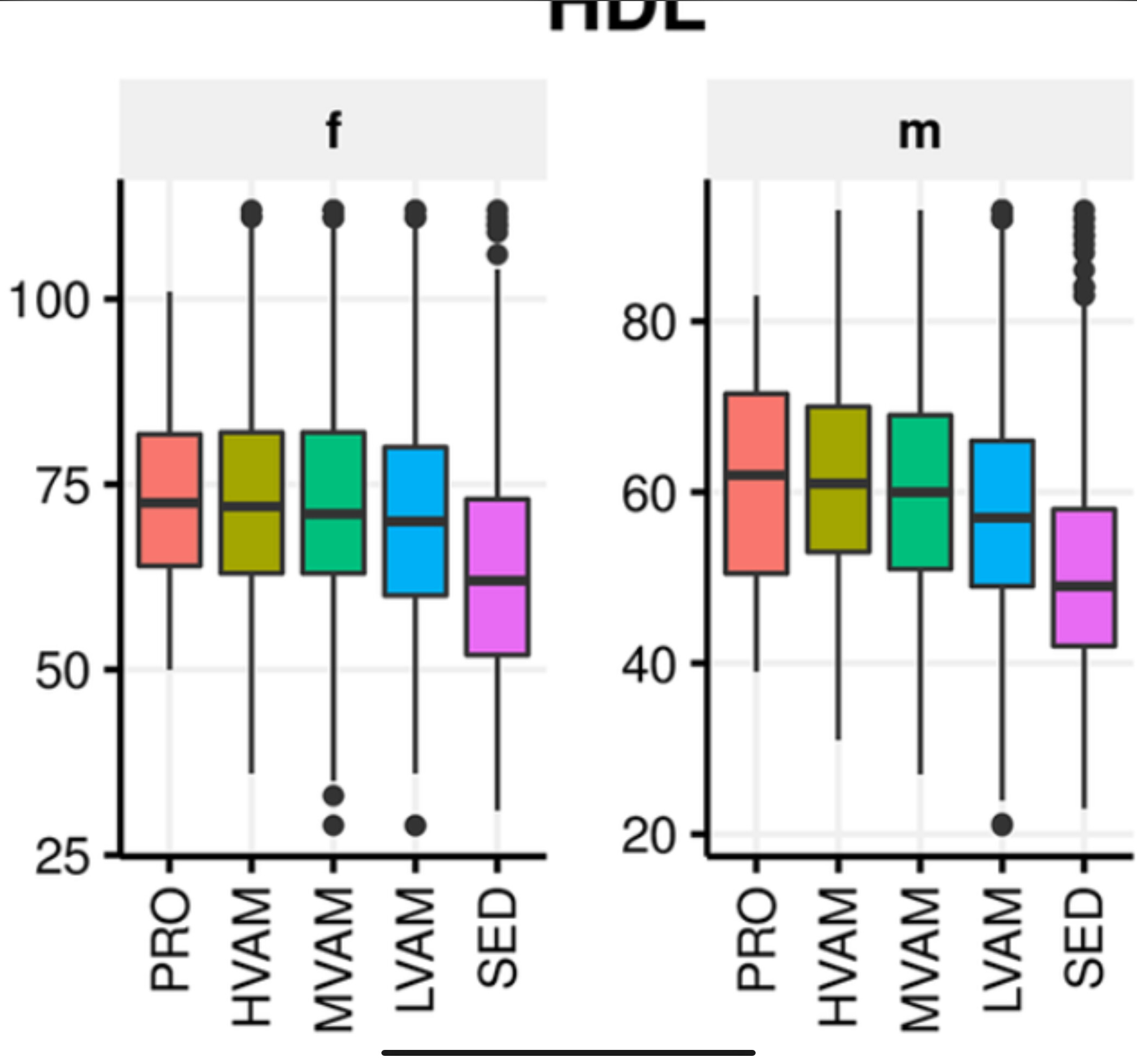
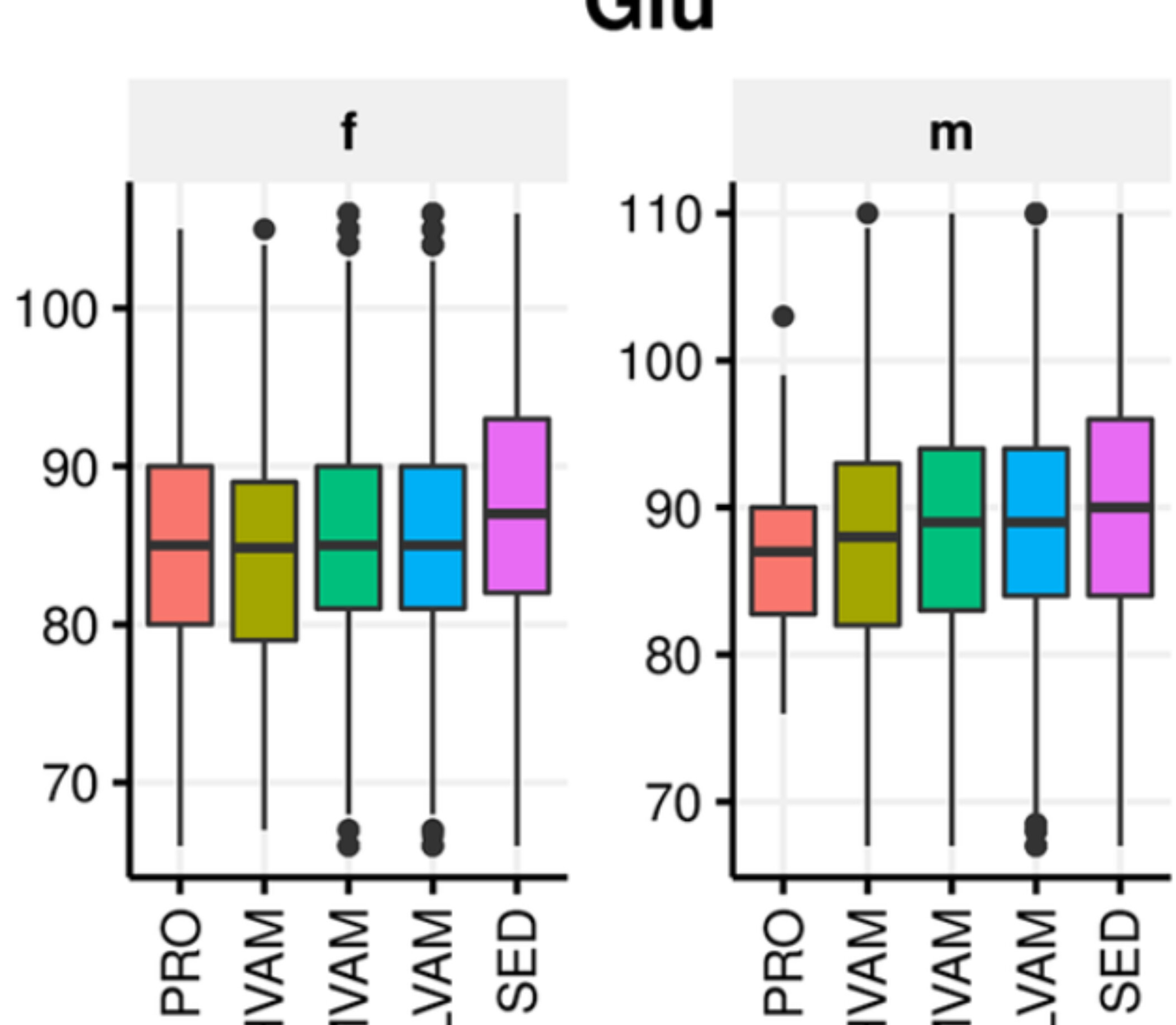
As a runner and a journalist, I spent a lot of time trying to understand these claims, and reevaluating my own understanding of running's health effects-a process that continues to this day. Part of that process involved going back to the original research that led us to believe that running is healthy. And to be honest, the evidence wasn't as clear as I'd assumed. Does running (or aerobic exercise more generally) really improve health markers, or is it just that healthy people are more likely to choose to run? Do the benefits max out after a few minutes per day, or do they keep growing? Can you outrun a bad diet?
I have opinions about all these questions, but I no longer assume that the answers are obvious. So I'm always interested in new data, like a recent study in PLoS ONE from the science team at InsideTracker, a company that sells personalized blood testing to track various health biomarkers. The paper offers a peek at the aggregated results of more than 23,000 customers who report various levels of running, divided into three groups: low volume (less than three hours of running per week), medium volume (three to ten hours per week), and high volume (more than ten hours per week). For comparison, they also include results from 4,400 sedentary non-runners, and at the opposite end of the spectrum, 82 professional distance runners.
There are two important caveats to point out before diving into the data. First, this is observational data, not a randomized trial. That makes it hard to determine whether running causes any of the patterns in the data (though, as we'll see below, there are some ways to test our assumptions about causation). Second, this is a self-selected cohort. Even the sedentary group is made up of people who are interested enough in their health that they've decided to spring for a service that starts at $699 for a single battery of blood tests. Since this control group is already fairly healthy, detecting any improvements will be more challenging.
The Raw Data
The journal article (which is free to read online) presents data on 27 different biomarkers that were significantly different between runners and non-runners. I'm just going to pick out a few categories that are particularly interesting.
First, here's HDL (i.e. "good") cholesterol levels, for females (f) and males (m) in each of the five groups: pro runners, high-, medium-, and low-volume amateurs (HVAM, MVAM, and LVAM, respectively), and sedentary people.
The biggest difference is between runners and non-runners: runners have clearly higher levels, which is good. And among the runners, the trend is that more running is associated with higher levels. Similar patterns are seen for LDL ("bad") cholesterol and triglycerides: running is good, and more running is better.
Here are the fasting glucose (i.e. blood sugar) levels:
The pattern here is much less pronounced. There's still a significant difference between runners and non-runners, but the dose-response effect of more mileage is smaller in men and non-existent for women. The same is true when looking at HgbA1c levels, which offer an estimate of long-term average blood sugar levels rather than a single snapshot. In that case, there's a more pronounced difference between runners and non-runners, but no dose-response response effect. For blood sugar, then, running is good but more running isn't necessarily better.
One key point: the sedentary control group has remarkably good blood sugar levels, with an average below the prediabetes cutoff. Given that 98 million Americans have prediabetes, this confirms that the control group is already pretty healthy. If you were to compare runners to the average population, you'd probably see a bigger effect.
Another group of biomarkers is associated with chronic low-grade inflammation. The pattern here is a little more complicated, but data on C-reactive protein, white blood cell count, and ferritin collectively suggest that greater volumes of running are associated with lower levels of inflammation. The fact that ferritin is considered a marker of inflammation was a surprise to me, since I think of it as an indicator of iron levels in endurance athletes. But it turns out ferritin levels can mean different things in different contexts.
For most of the biomarkers, there's a fairly smooth trend from sedentary to pro runners. But there are a few examples where the pro runners are noticeably different from everyone else, even the amateurs who claim they're running more than ten hours a week. Most notably, the pro runners tended to have low magnesium levels-an observation that mirrors earlier data from British Olympic track athletes. The British study also found that athletes with a history of tendon problems were most likely to have low magnesium levels, which suggests that it's something to watch for if you're training hard.
Is It All About BMI?
All the results I mentioned above were statistically adjusted for body-mass index, age, and sex. That's important, because there were significant differences in BMI among the groups. Here's that data:
Now, I look at this graph and think, "Yep, all else being equal, the more you run the less you weigh." This used to strike me as a painfully obvious statement. The current scientific consensus, on the other hand, is that exercise is ineffective for weight loss. And it's true that lots of studies have assigned people to exercise, sometimes quite vigorously, and have seen underwhelming results for weight loss. This is a complex topic whose nuances I'll leave for another day, but suffice to say that the new data agrees with my feeling that, if you're running more than an hour a day, you very likely weigh less than you would if you weren't running.
You can get another level of insight by adding in some of the genetic data that InsideTracker also collects from some of its customers. There are a large number of separate gene variants that are associated with higher BMI; by checking which of these variants a given individual has, the researchers calculated a "polygenic risk score" for obesity. In the sedentary group, those with higher risk scores tended to have higher BMI. Among the high-volume and pro runners, in contrast, that trend was flattened: those with higher risk scores had similar BMI to those with lower scores. Though the sample size was too small to draw definitive conclusions (since relatively few customers opted to get genetic testing), the results suggest that running counteracted the gene variants associated with obesity.
The BMI data raises another important question: are all the other apparent health benefits of running just secondary effects of lower BMI? Here they use a cool technique called Mendelian randomization (which I wrote about in another context earlier this year). It's a way of turning a large observational study into a randomized trial. The randomization occurs at birth: as noted above, some people have gene variants that predispose them to have a higher BMI. These variants are randomly distributed, so if people with the low-BMI versions tend to also have better cholesterol scores (for example) regardless of whether or not they run, it suggests that BMI is what's driving the cholesterol scores.
The results of the Mendelian randomization-again limited by low sample numbers-are somewhere in the middle. It does appear that BMI explains much of the group's difference in cholesterol and inflammation levels, for example-but not all of it. For example, gene variants didn't predict LDL levels, suggesting that it's an independent effect of running.
But the closer you look, the blurrier the line between genes and behavior gets. Some of the genes associated with exercise are also associated with motivation and self-control; people who exercise a lot are also more highly motivated to eat healthily; and so on. We're back to the challenge I mentioned at the top: teasing out the independent health effects of going for a run is really hard. The InsideTracker researchers conclude that "a holistic wellness lifestyle approach is in practice the most likely to be most effective toward preventing cardiometabolic disease." That borders on tautological, but their data adds another small brick to the pile of evidence suggesting that endurance exercise, even or perhaps especially in large quantities, is a useful part of that holistic wellness lifestyle.
(01/27/2024) ⚡AMP5 things you should know about Steve Prefontaine
Steve “Pre” Prefontaine would have turned 73 on Thursday, and the legendary runner’s enduring legacy and impact on the sport continues. From Coos Bay, Ore., Pre became one of the biggest stars in the sport during his time at the University of Oregon in the 70s, where he held seven American records from the 2,000m to the 10,000m. Here are five facts about the iconic runner, whose achievements and words continue to inspire and resonate.
Trailblazer of distance running
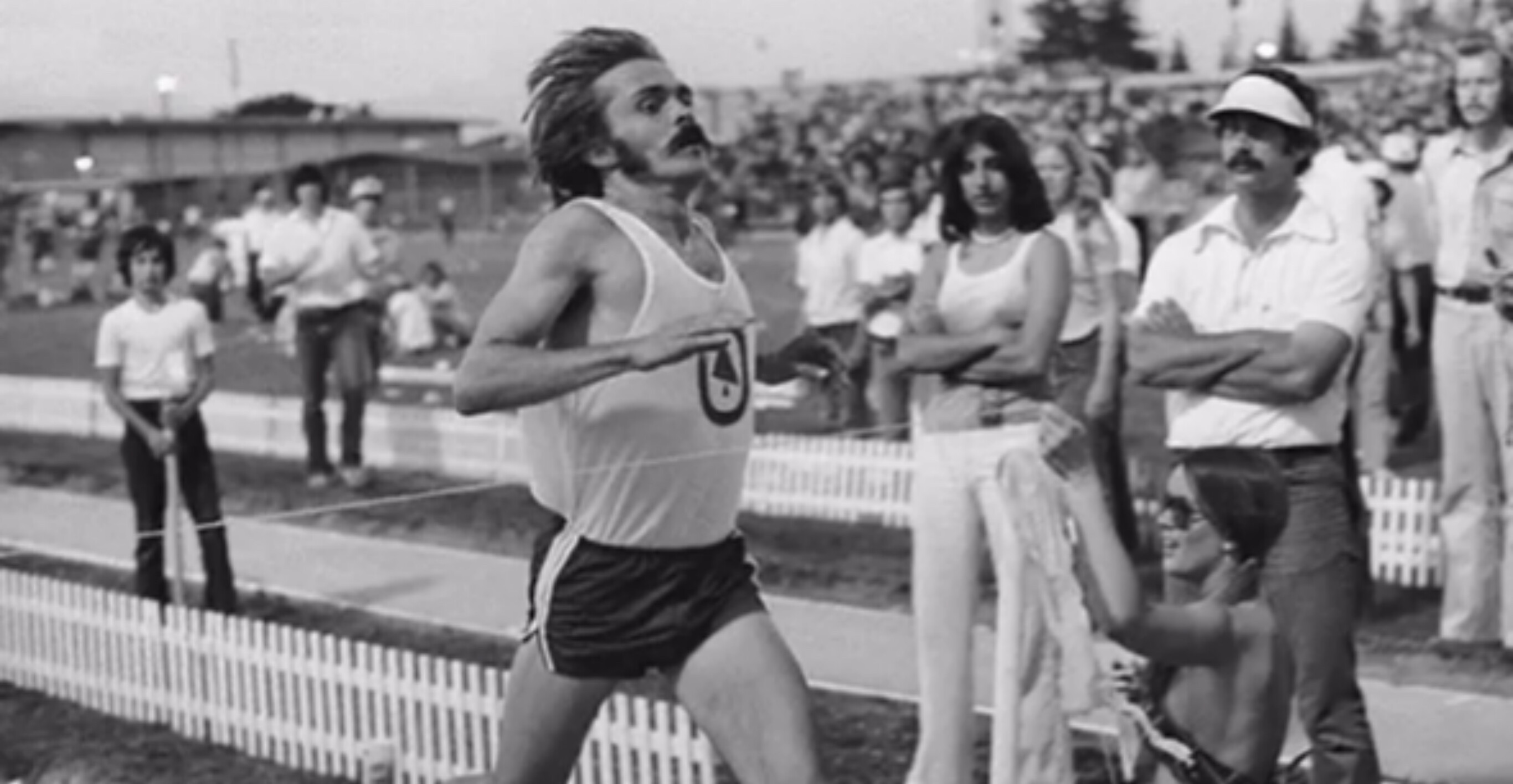
Prefontaine was a pioneer in distance running, known for his fearless approach and unwavering determination. He burst onto the scene in the early 1970s, and his aggressive front-running style and refusal to settle for anything but victory revolutionized distance running in the U.S. and beyond.
Prefontaine’s Olympic journey was tragically cut short when he was 24. He competed in the 1972 Summer Olympics in Munich and was preparing for the 1976 Olympics with the Oregon Track Club when he died in a car accident on May 30, 1975.
Advocate for athletes’ rights
Beyond his achievements on the track, Prefontaine was a vocal advocate for the rights of amateur athletes. He challenged the existing system, governed by the Amateur Athletic Union (AAU) that restricted athletes’ ability to earn money while maintaining their amateur status. Prefontaine defied the AAU by organizing a series of meets with a group of Finnish athletes. One of these meets, held at Marshfield High School in 1975, was where Prefontaine set his last American record.
Legendary duel at the 1972 Munich Olympics
One of Prefontaine’s most memorable moments was the 5,000m race at the 1972 Munich Olympics. In a fierce battle against Finnish runner Lasse Virén, Prefontaine showcased his indomitable spirit, finishing fourth in a race that is often considered one of the greatest duels in Olympic history. The image of Prefontaine pushing himself to the limit serves as a timeless reminder of his competitive fire.
Nike’s first signature athlete
In 1974, Prefontaine signed with Nike for $5,000—as the first runner to sign with the company, he jump-started the brand as a running shoe company. Bill Bowerman, the sports coach at the University of Oregon, also happened to be the co-founder of Nike. In 2022, a pair of Nike Oregon waffle shoes worn by the distance runner were sold for USD $163,800 on the auction site, Sothebys.com.
The Prefontaine Classic
In honor of Pre’s lasting impact on the sport, the annual Prefontaine Classic track and field meet was established in Eugene, Ore. This prestigious event attracts elite athletes from around the world and continues to be a fitting tribute to Pre’s legacy. Hayward Field, where the meet is held, holds a special place in the hearts of runners as the venue where Prefontaine achieved many of his remarkable feats.
Prefontaine is remembered not only for his athletic prowess but also for the passion, courage, and advocacy that defined his life.
(01/27/2024) ⚡AMPUgandan middle-distance runner Prisca Chesang given two-year ban for masking agent
On Friday, the Athletics Integrity Unit (AIU) issued a two-year ban for two-time U20 world championship medalist Prisca Chesang of Uganda. Chesang tested positive for the banned diuretic and masking agent furosemide.
Chesang’s positive test came out-of-competition, at a training camp in Kapchorwa, Uganda, on Sept. 14. She was in Kapchorwa preparing for the women’s mile at the 2023 World Road Running Championships in Riga, Latvia, where she placed 18th overall, on Oct. 1.
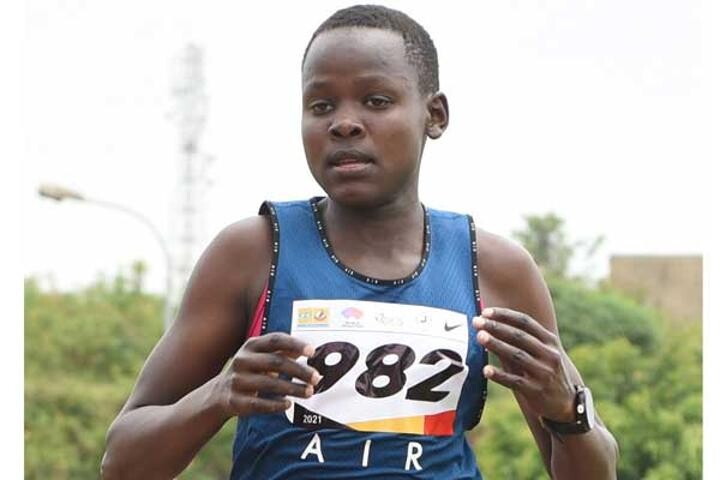
The 20-year-old is a two-time world U20 medalist in the women’s 5,000m, winning bronze at both the 2021 and 2022 U20 championships. According to the AIU, they did not discover any evidence that Chesang’s actions were intentional and therefore she was only given a two-year ban instead of four years. Chesang admitted to the Anti-Doping Rule Violation (ADRV); her result from the 2023 World Road Running Championships will be disqualified, and she will serve a two-year ban, until Dec. 6, 2025.
Furosemide is a diuretic, meaning it increases urine production, eliminating excess water and salt from the body. (It is also used for losing weight.) Furosemide also serves as a masking agent for other performance-enhancing substances that leave the body through urination, and therefore show up in a urine test. The drug has been prohibited by the World Anti-Doping Agency (WADA) for decades.
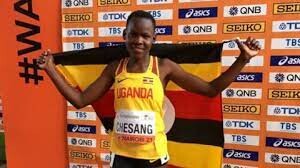
Chesang is one of Uganda’s top up-and-coming distance runners and represented the East African nation at the 2020 Tokyo Olympics in the women’s 5,000m (but failed to advance from the heats). Her top senior championship finish was a seventh-place result at the 2023 World XC Championships in Bathurst, Australia, helping Uganda’s women’s team win bronze.
Chesang is only the second female Ugandan runner to be suspended by the AIU. The country’s first came in Nov. 2023, when Janat Chemusto was given a four-year ban for the use of a prohibited substance.
(01/26/2024) ⚡AMPby Marley Dickinson
Lindsay Flanagan And Her Younger Sister Kaylee Are Both Racing The Marathon Trials
In the past 20 months, veteran marathoner Lindsay Flanagan has cut her personal best by 2 minutes, twice. She won the 2022 Gold Coast Marathon in Australia in a course record of 2:24:43. In August, her 2:27:47 run placed her ninth overall, and first American, at the World Championships marathon in Budapest.
But one of her proudest moments came in the wee hours of December 3. Huddled over her phone in Adelaide, Australia—where she’d traveled for a few months to prepare for the upcoming Olympic Marathon Trials—Flanagan repeatedly refreshed the results of the California International Marathon.
Not long after 4 a.m. Lindsay’s time, her younger sister, Kaylee, crossed the finish line in 2:35:24—a nearly five-minute PR and her first Trials qualifying time. “I did not sleep at all that night,” Lindsay said. As both Kaylee’s sibling and her coach, “I was so invested.”
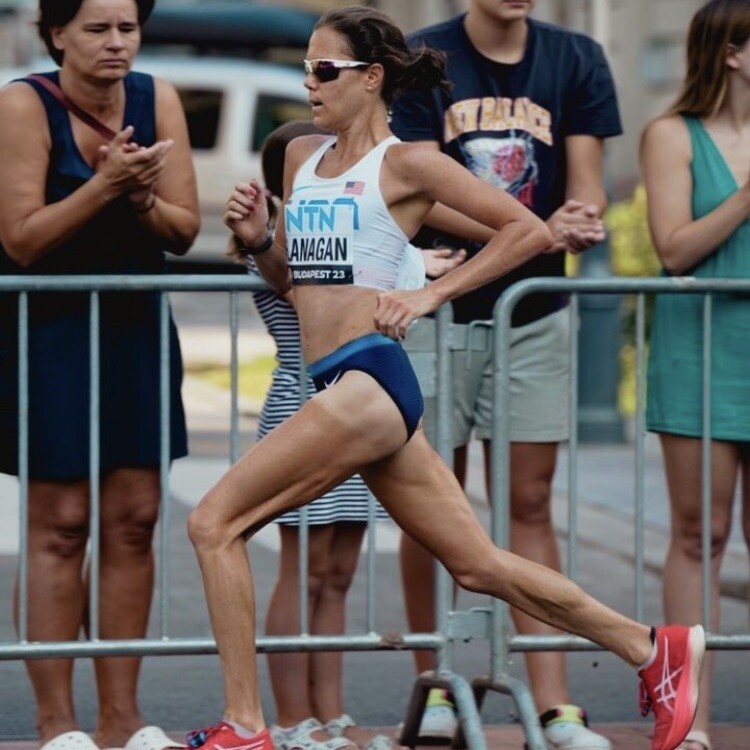
After promising high school running careers in Illinois, both Flanagans (no relation to Shalane) ran at the University of Washington, overlapping for a year. Now, they live across the street from each other in Boulder, Colorado, where they typically share miles at least once if not twice daily. Kaylee cheered Lindsay on in Budapest; afterward, they vacationed in Croatia.
They’ve spent the past few months, uncharacteristically, half a world apart, though Kaylee frequently pops by Lindsay’s house to water plants and make sure the pipes don’t freeze. But they’re reuniting in Florida, lining up together at the Trials.
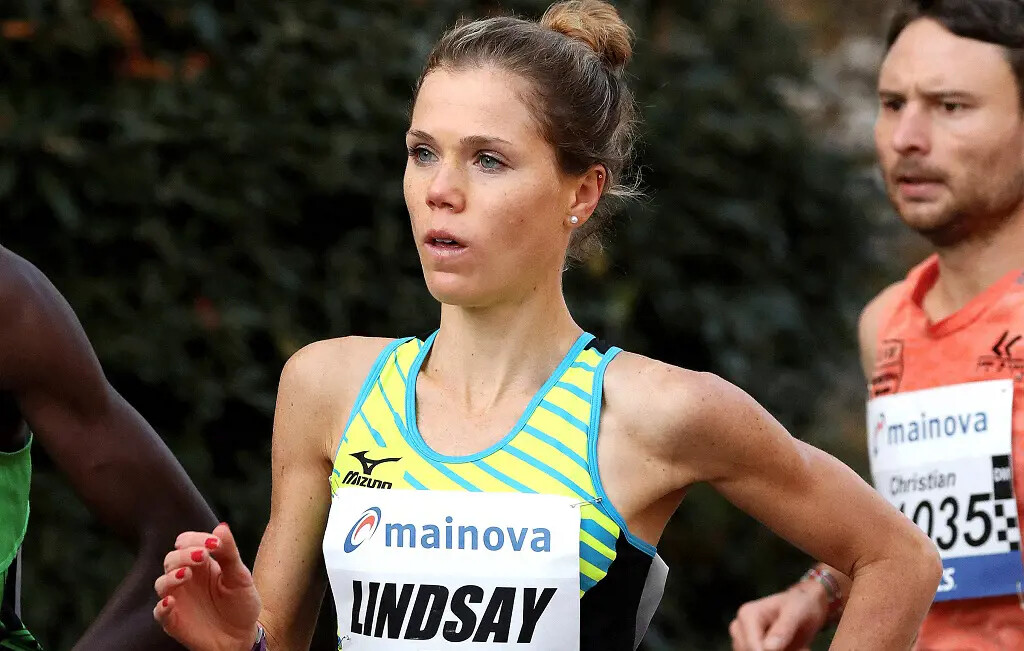
The Flanagans aren’t the only siblings competing in Orlando on February 3; the field also includes brother and sister Kaylee and Austin Bogina and twins Isabel and Monica Hebner. But they’re unique in also being athlete and coach—Lindsay has guided Kaylee’s training for about two years.
And in her third Trials, Lindsay stands out as a top, if under-the-radar, pick to make the U.S. Team.
The Asics-sponsored runner, 33, does most of her workouts alone. Her coach is remote, and she has no training group or partner capturing evidence for Instagram. Yet out of the limelight, Lindsay has spent nearly a decade preparing for a moment just like this one. “Every workout, every season, every race cycle has been meticulously chosen,” Kaylee, 28, said of her sister. “Trust me, she will be one to watch out for in Orlando.”
A steady ascent
As close as they are, the two sisters forged different paths from college to the Trials. Lindsay made her marathon debut the January after graduating. At the 2015 Houston Marathon, she ran 2:33:12, good for ninth place and a slot in the 2016 Trials. On a hot day in Los Angeles the following February, she paused to vomit around the 21-mile mark, then finished 14th in 2:39:42.
Through 20-some marathons since—so many she’s lost count—she’s gradually, if quietly, established herself. Her next breakthrough came at the 2016 Frankfurt Marathon, where she finished fourth in 2:29:28. She notched top-10 finishes in Boston and Chicago in 2019, and headed into the 2020 Trials ranked 12th. That’s exactly where she finished, running 2:32:05.
Post-pandemic, she was coaching herself but seeking mentorship. Her agent connected her with Benita Willis, a four-time Olympian for Australia and gold medalist at the 2004 World Cross Country Championships. After an hour-long conversation, Lindsay realized she wanted Willis to fully take the reins of her training.
The pair became fast friends, and under Willis’s guidance, Lindsay is now even faster. She first lowered her personal best to 2:26:54 in April 2022 at the Paris Marathon. Next, Willis suggested Lindsay make her first Australian trip to run Gold Coast in July.
The race would give the pair the chance to meet in person for the first time, and with her victory, Lindsay had an opportunity that her coach, a 2:22:36 marathoner, had missed. “I ran big races, but I never won a marathon or broke a course record,” Willis said. “I wanted Lindsay to have that sort of experience well before the Olympic Trials.”
(01/26/2024) ⚡AMPby Cindy Kuzma
2024 US Olympic Trials Marathon
Most countries around the world use a selection committee to choose their Olympic Team Members, but not the USA. Prior to 1968, a series of races were used to select the USA Olympic Marathon team, but beginning in 1968 the format was changed to a single race on a single day with the top three finishers selected to be part...
more...Little-known Emmanuel Kiprop set sights on Paris Olympics
Emmanuel Kiprop is ready to go for everything including the Olympic Games after a great start to his 2024 season.
Emmanuel Kiprop will be keen to make an impression this season as he eyes the crème de la crème of events lined up for 2024.
The 24-year-old donned the Team Kenya jersey for the first time during the 2023 World Cross-country Championships held in Bathurst, Australia, and finished 19th in the senior men’s race.
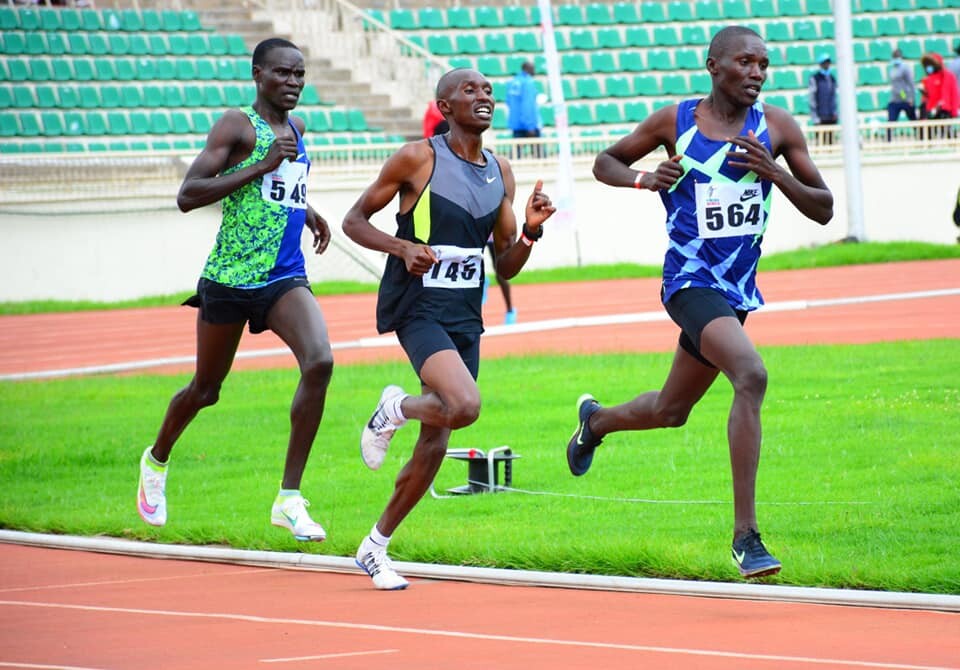
Last season, he also tried making an impact at the World Championships national trials but finished outside of the cut-off point in both the 5000m and 10,000m.
He opened his 2024 season at the second Athletics Kenya meet held at the Ulinzi Sports Complex in Lang'ata where he won the 1500m in style.
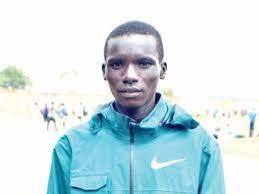
“The race was a bit challenging because that was my first time running the 1500m…I was trying to build on my speed.
"My target is to represent the country at the All-African Games and even the Olympic Games. Last year I competed at the World Cross-country Championships and that was like an eye opener for me,” Kiprop told Pulse Sports.
Going forward, the long-distance runner explained that he will work on his speed and endurance as he eyes the breakthrough. He noted that he will mostly focus on the 5000m since that is where he has more strength.
“I want to work on my speed that’s why I want to run more 1500m and 800m races to work on my speed. The 5000m is where I have capabilities and that’s where I will channel my energy to,” he added.
(01/26/2024) ⚡AMPby Abigael Wuafula
Paris 2024 Olympic Games
For this historic event, the City of Light is thinking big! Visitors will be able to watch events at top sporting venues in Paris and the Paris region, as well as at emblematic monuments in the capital visited by several millions of tourists each year. The promise of exceptional moments to experience in an exceptional setting! A great way to...
more...2017 Valencia Marathon champion to compete in first marathon after doping ban
The 2017 Valencia Marathon champion will be keen to make a comeback to winning ways this year after successfully serving his doping ban.
An estimated 13,000 runners from more than 70 countries have been confirmed for the Marrakech International Marathon (MIM), scheduled for Sunday, January 28.
Sammy Kitwara, a former World Half Marathon Championships bronze medalist will bid to make an impression in his first marathon after concluding his doping ban.
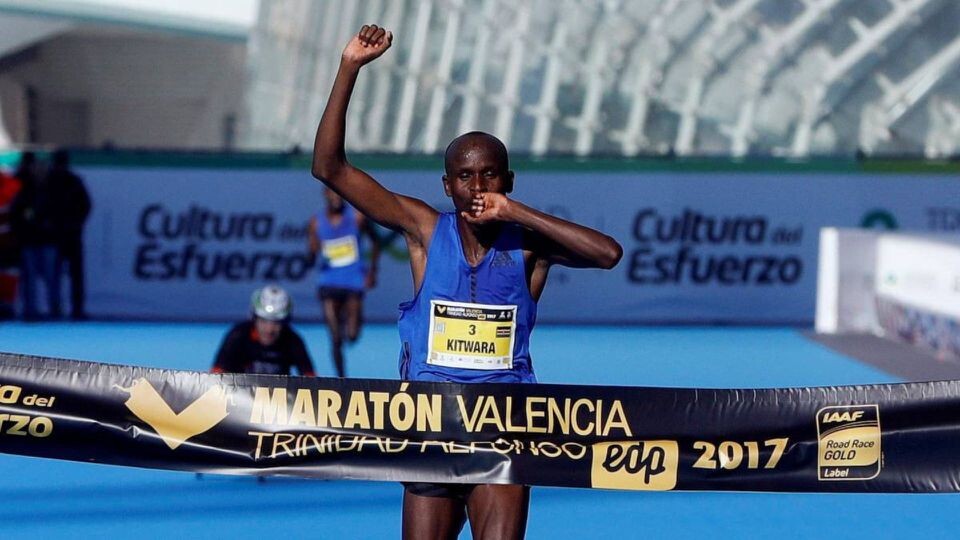
The 2017 Valencia Marathon champion was banned by the Athletics Integrity Unit (AIU) back in 2019 for the presence of Nanning Terbutaline, a drug used as a "reliever" inhaler in the management of asthma symptoms.
His positive test came from the Seul International Marathon in March 2019 where he took seventh place with 2:09:52. Kitwara said he took the drug without knowing it was banned by WADA. He had also failed to consult with a doctor to obtain a therapeutic use exemption (TUE).
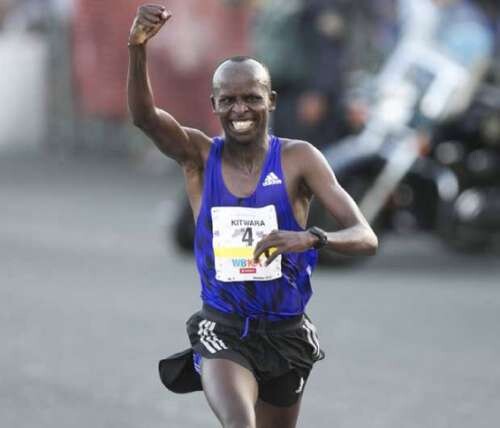
Kitwara will be joined by compatriot Nicholas Kirwa and the Kenyan duo will be up against top runners including Ethiopia’s Hiribo Shano Share and Omar Ait Chitachen.
Speaking at a press conference, Mohamed Knidiri, the Grand Atlas (AGA) and director of this international competition indicated that the marathon is organized under the high patronage of HM King Mohammed VI.
“Over the years, MIM has become a school for promoting and launching great champions of this discipline, who have left their mark on the international scene, particularly among Moroccan athletes.
“Thanks to upstream planning and operational management experienced in major competitions, the MIM aims not only to obtain the 11th place in the world obtained in 2013 but, even better, to become the essential international meeting for all the stars of this sporting discipline, like its glorious position in 2012 when it was the only marathon on the African continent qualified for the London Olympic Games,” he said.
He also hoped that this edition would be marked by the achievement of new records, particularly among the men.
(01/26/2024) ⚡AMPby Abigael Wuafula
Marrakech Marathon
The magical town of Marrakesh offers an exceptional setting, a very mild climate in January and a beautiful circuit considered as one of the fastest in the world. It goes along the alleys of palm trees, orange, and olive trees, but also the ramparts of the city. The International Marathon of Marrakesh is not only expected to reconquer the prime...
more...Three power-packed workouts to help you nail a marathon PB
If your goal this season is to run your fastest marathon, one of these speedy track sessions will definitely help. Renowned coach and author Greg McMillan explains on his website that runners who are aiming to improve (rather than to simply complete the iconic distance) should be focused on speed sessions tailored specifically to the marathon.
McMillan recommends including at least one workout per week that focuses on building the stamina (lactate threshold) and speed (VO2 max) you’ll need to blast to a marathon PB.
1.- Quarters
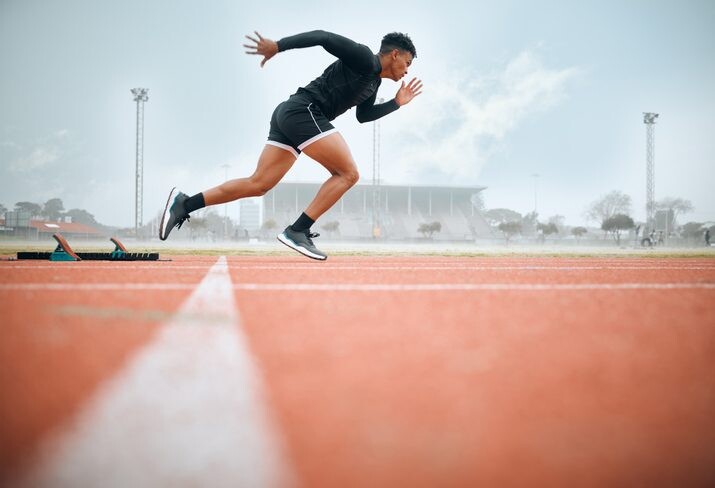
McMillan says that one key of fast marathoning is running economy—the amount of oxygen required to run at a given pace. “Improve your economy and your carbohydrate stores are used less quickly, giving you power at the end of the race,” he explains. This session will boost your running economy and build your VO2 max, while also making your marathon pace feel easier.
Cool down with 10 minutes of easy running.

Run each 400m at 5K pace or slightly faster, with a lap of recovery running in between. “Each lap shouldn’t feel super hard, but the accumulation of doing 16 to 20 repetitions will build your fatigue resistance,” McMillan says.
2.- Tempo interval session
Work on running at a strong, steady pace and focus on the volume of running in this workout, not hitting a target speed. McMillan suggests runners aim to complete at least four and up to five repetitions, and making the last two the strongest.
Warm up with 10 minutes of easy running.
4 to 5 x 2 km, with 400m recovery jog
Cool down with 10 minutes of easy running.
“Many runners find that starting this workout at half-marathon pace and progressing down to near 10K race pace is ideal,” writes McMillan.
Warm up with 10 minutes of easy running.
Run 16 to 20 x 400m, with a 400m recovery jog.
3.- Cruise intervals
Legendary Olympic coach Jack Daniels popularized the term “cruise intervals” in his book Daniels’ Running Formula, and McMillan says they’re a perfect introduction to more intense marathon training. The term “cruise interval” describes the effort—it should be fast and smooth without feeling gut-wrenching.
Warm up with 10-15 minutes of easy running.
Run 6-8 x 1 km, with a 200m recovery jog between repeats.
Cool down with 10 minutes of very easy running.
“Run these between 10K and 15K race pace,” says McMillan. “It’s a good idea to start them at 15K pace and progress to 10K pace during your last repeats if possible.” This session should tire you out from the duration of the intervals, rather than the speed.
Follow any fast, challenging sessions like these with a very easy running day or rest day.
(01/25/2024) ⚡AMPby Keeley Milne
Five things you should know about Steve Prefontaine, on his birthday
Steve “Pre” Prefontaine would turn 73 on Thursday (Jan 25), and the legendary runner’s enduring legacy and impact on the sport continues. From Coos Bay, Ore., Pre became one of the biggest stars in the sport during his time at the University of Oregon in the 70s, where he held seven American records from the 2,000m to the 10,000m. Here are five facts about the iconic runner, whose achievements and words continue to inspire and resonate worldwide.
1.- Trailblazer of distance running
Prefontaine was a pioneer in distance running, known for his fearless approach and unwavering determination. He burst onto the scene in the early 1970s, and his aggressive front-running style and refusal to settle for anything but victory revolutionized distance running in the U.S. and beyond.
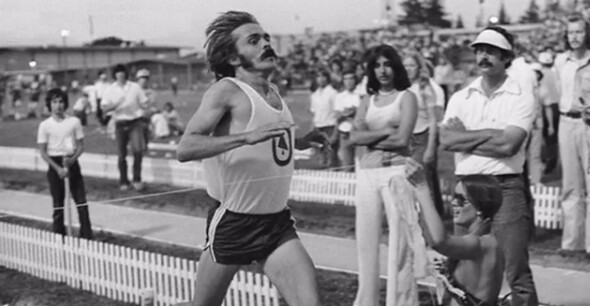
Prefontaine’s Olympic journey was tragically cut short when he was 24. Prefontaine competed in the 1972 Summer Olympics in Munich and was preparing for the 1976 Olympics with the Oregon Track Club when he died in a car accident on May 30, 1975.
2.- Advocate for athlete’s rights
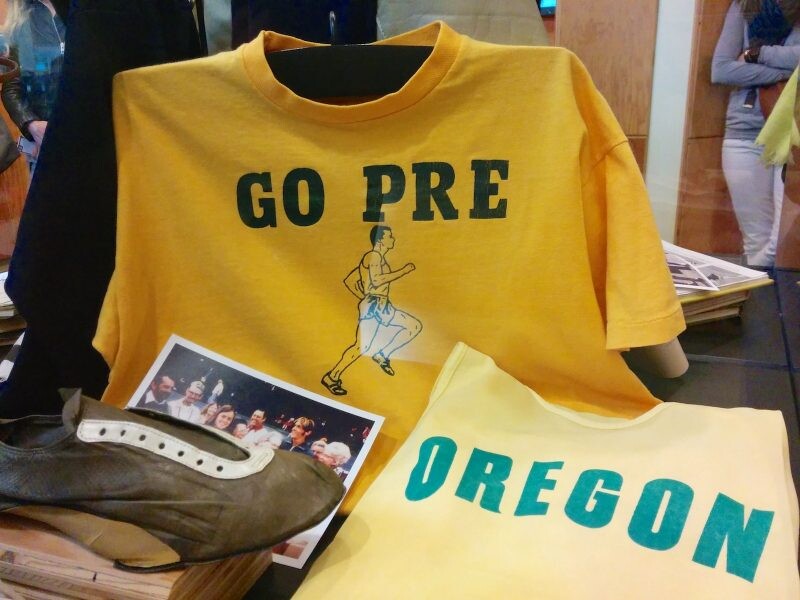
Beyond his achievements on the track, Prefontaine was a vocal advocate for the rights of amateur athletes. He challenged the existing system, governed by the Amateur Athletic Union (AAU) that restricted athletes’ ability to earn money while maintaining their amateur status. Prefontaine defied the AAU by organizing a series of meets with a group of Finnish athletes. One of these meets, held at Marshfield High School in 1975, was where Prefontaine set his last American record.
3.- Legendary duel at the 1972 Munich Olympics
One of Prefontaine’s most memorable moments was the 5,000-meter race at the 1972 Munich Olympics. In a fierce battle against Finnish runner Lasse Virén, Prefontaine showcased his indomitable spirit, finishing fourth in a race that is often considered one of the greatest duels in Olympic history. The image of Prefontaine pushing himself to the limit serves as a timeless reminder of his competitive fire.
4.- Nike’s first signature athlete
In 1974, Prefontaine signed with Nike for $5,000—as the first runner to sign with the company, he jump-started the brand as a running shoe company. Bill Bowerman, the sports coach at the University of Oregon, also happened to be the co-founder of Nike. In 2022, a pair of Nike Oregon Waffle shoes worn by distance runner Prefontaine were sold for USD $163,800 on the auction site, Sothebys.com
5.- The Prefontaine Classic
In honor of Pre’s lasting impact on the sport, the Prefontaine Classic, an annual track and field meet, was established in Eugene, Ore. This prestigious event attracts elite athletes from around the world and continues to be a fitting tribute to Pre’s legacy. Hayward Field, where the meet is held, holds a special place in the hearts of runners as the venue where Prefontaine achieved many of his remarkable feats.
Prefontaine is remembered not only for his athletic prowess but also for the passion, courage, and advocacy that defined his life.
(01/25/2024) ⚡AMPby Keeley Milne
Prefontaine Classic
The Pre Classic, part of the Diamond League series of international meets featuring Olympic-level athletes, is scheduled to be held at the new Hayward Field in Eugene. The Prefontaine Classicis the longest-running outdoor invitational track & field meet in America and is part of the elite Wanda Diamond League of meets held worldwide annually. The Pre Classic’s results score has...
more...For Betsy Saina, the U.S. Olympic Trials Marathon Presents a Chance to Represent Her Son
For much of last year, Betsy Saina had a plan. She would race the Chicago Marathon in October, eager to run alongside Emma Bates (who placed fifth at last year’s Boston Marathon in a new personal best of 2:22:10) in pursuit of breaking Emily Sisson’s American record of 2:18:29, set the previous year at that same race.
Saina, 35, a naturalized U.S. citizen who represented Kenya in the 2016 Olympics in Rio de Janeiro—she placed fifth in the 10,000 meters 30:07.78—had reason to be confident. Last spring, she set a new personal best of 2:21:40 with her fifth-place finish at the Tokyo Marathon, which wound up being the fastest marathon by an American woman in 2023 and made her the eighth-fastest U.S. female marathoner of all-time, solidifying her position as a top U.S. Olympic marathon team contender.
The Chicago Marathon had assured Saina’s agent, Tom Broadbent, that she was in for the race. But when the elite field was announced in August, Saina learned she had not been accepted, which not only threw a wrench in her fall training plans, but made for a lot of stress as she was planning her U.S. Olympic Marathon Team Trials buildup.
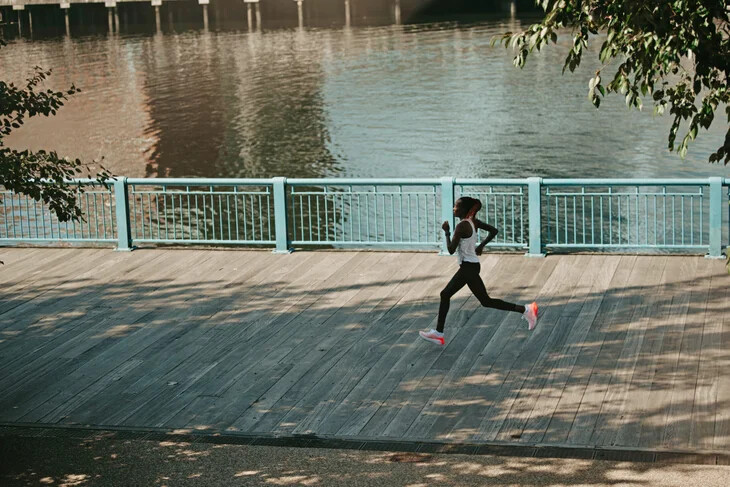
“I was shocked and spent three days looking at myself and trying to find any mistakes I made to not make the field, especially after running 2:21 in Tokyo,” Saina says. “I had never been rejected from a race before, and never got a response or an explanation as to why I didn’t make it. Being denied to run in Chicago honestly was one of the most disappointing things I’ve experienced in my career.”
Saina looked into entering the Berlin Marathon the following month, but had no such luck getting in with it being so late in the game. She was ultimately accepted into the Sydney Marathon (which shares its sponsor, ASICS, with Saina) on September 16. Unlike Chicago—with its fast, flat course that ended up having ideal racing conditions with temperatures in the 40s—Sydney has a hilly course and race-day weather was on the hotter side, with a starting temperature of 68 degrees.
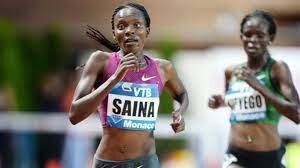
Despite the conditions, Saina proved herself once again, winning the race in 2:26:47. This sealed her confidence as she began to look ahead to the Olympic Trials in Orlando on February 3. If she’s one of the top three finishers in the women’s race in Florida, she’ll earn a spot on the U.S. team that will compete in the marathon at the Paris Olympics on August 11.
“Challenges make people strong, and running a good marathon on a harder course made me come back feeling motivated,” she says. “[Even though it wasn’t the faster time I originally wanted], it didn’t stop me from being a better version of myself.”
Transcendent Transplant
Despite her impressive performances in 2023, Saina has remained largely under the radar in terms of media coverage and fan predictions leading up to the Trials in Orlando, similarly to what fellow Kenyan-born marathoners Aliphine Tuliamuk and Sally Kipyego (both of whom made the last Olympic marathon team) experienced in 2020. The lack of attention relative to her competitors hasn’t fazed Saina, however.
“I know how to deal with pressure, having been in the sport since 2013, so as long as my training is going well, I don’t pay too much attention to what people say,” Saina says. “I’m just more excited to see many of the U.S. women [who are also] my friends, like Emily Sisson, Sara Hall, and Keira D’Amato, and to be racing so many amazing U.S. athletes for the first time.”
Saina’s result in Tokyo was only about a minute faster than her debut at the distance at the 2018 Paris Marathon, which she won in 2:22:56 (after dropping out of the 2017 Tokyo and New York City Marathons). It was also a confidence boost for Saina because it was also her first marathon since giving birth to her son, Kalya, now two, in December 2021, after previously running 2:22:43 and 2:31:51 at the 2019 Toronto Waterfront and Honolulu Marathons, respectively.
Saina—who originally came to the U.S. to attend Iowa State University where she trained alongside Tuliamuk and was a three-time individual NCAA champion and 11-time NCAA All-American—has remained in her hometown of Iten, Kenya, for the majority of the time since having her son, as her husband, Meshack Korir, is a doctor completing his postgraduate education there.
Although Saina became a U.S. citizen in late 2020 and has a home base in Colorado Springs, she made the decision to return to Kenya to have additional family support and childcare as she worked to come back from pregnancy and childbirth to prepare for the Olympic Trials, which she’ll return for just a few days before the race. Saina also keeps busy managing a couple of guesthouses, which she regularly rents out to visiting athletes and tourists. She also works with Cross World Africa, a nonprofit that sponsors underprivileged children in pursuing secondary and higher education.
“Before I came from Kenya, my family was struggling and we had to fundraise for my flight ticket to come to the U.S. Being here has changed my family in a different way—I have two sisters who are now nurses in the U.S., and my parents can now more easily fly to visit us, and while it is not where I began running, the U.S. where I began competing at such a high level,” she says. “My son also gives me so much motivation and is my inspiration. When I see him, I see beauty in myself and see myself getting better when I’m running. So I am excited both to compete and represent my son, and to hopefully wear the U.S. uniform because it has so much meaning for me.”
Back in Iten, Saina has been training in a group with personal pacemakers alongside 2019 New York City Marathon champion Joyciline Jepkosgei, which she describes as game-changing for her progress in the marathon. Both Saina and Jepkosgei, who is also the former world-record holder in the half marathon and Saina’s best friend from high school, are coached by Jepkosgei’s husband, Nicholas Koech.
“Sometimes you will train with people who don’t want to help someone else get better, but [Jepkosgei], who has run 1:04 [in the half marathon] and 2:17 [in the marathon] is unique in that she has sacrificed a lot, which I don’t think a lot of women will ever do for each other, and I don’t think I would either,” Saina says. “But she has been pushing me a lot since the first day I joined her, and I think that’s the reason I came back and I’ve had better races. I have someone to chase and it’s like competition in training, but in a good way.”
American Original
Saina returned to the U.S. twice last year, to race the USATF 25K Championships in Grand Rapids, Michigan, (where she took the win in 1:24:32 for her first U.S. title, narrowly beating D’Amato) and to be inducted into Iowa State’s Athletics Hall of Fame in September. Saina had planned to do some shorter U.S. races, including the Bolder Boulder 10K in May and the NYRR Mini 10K in June, following her national championship title in the 25K. However, she ultimately decided she couldn’t bear to be away from her son any longer.
“As a mom, when you’re away, you are so worried because you’re like, ‘How is he doing right now? How can I handle the pressure, being away from him?’” Saina says. “This year, it’s really different for me because the only race I want to travel to without Kalya is the Olympic Trials. He is growing now and getting better, so I want to travel with him afterward to compete in the USATF circuit. That’s the biggest goal for 2024, to travel with my son.”
Later this year, Saina hopes to also run the April 7 Cherry Blossom 10-Miler in Washington, D.C., the Mini 10K on June 8 in New York City, and a fast spring half marathon to pursue the current American record (which was broken yet again by Weini Kelati on January 14 in Houston), before running another marathon in the fall. In the meantime, she noted that she is especially eager to compete in one of the deepest fields ever assembled for the Trials.
Although Bates withdrew from the Trials, Saina figures to be one of the favorites in Orlando along with Sisson, Hall, Tuliamuk, D’Amato, and Seidel. However, Lindsay Flanagan (ninth in last summer’s world championships), Sara Vaughn, Susanna Sullivan, Gabriella Rooker, Dakotah Lindwurm, and Nell Rojas are all sub-2:25 marathoners, and thus top contenders, too.
“The U.S. is no longer small and non-competitive. Look at Molly Seidel. She got bronze at the Tokyo Olympics, and I remember when Amy [Cragg] was a bronze medalist at the 2017 World Championships. If you put that in perspective, it has changed even more right now compared to that time,” she says. “The competition [to make the U.S. team] is no longer as easy as the way some people [thought], and I’m super excited to be competing with a lot of solid women. There is no difference between the U.S. and other countries right now—it’s not just to go compete at the Olympics; they’re going to compete for the medals, just like other countries.”
(01/25/2024) ⚡AMPby Emilia Benton
2024 US Olympic Trials Marathon
Most countries around the world use a selection committee to choose their Olympic Team Members, but not the USA. Prior to 1968, a series of races were used to select the USA Olympic Marathon team, but beginning in 1968 the format was changed to a single race on a single day with the top three finishers selected to be part...
more...Canadian Paralympians to receive equal pay at 2024 Games
On Wednesday, the Canadian Paralympic Committee and the Paralympic Foundation of Canada announced a significant shift in the financial landscape for Paralympic athletes. Each Paralympic medalist for Canada, starting at the 2024 Paralympic Games in Paris, will receive an equivalent prize to that of their Olympic counterparts.
The newly unveiled Paralympic Performance Recognition program, introduced at the Canadian Museum of History in Gatineau, Que., promises a significant shift in the financial landscape for Canadian Paralympic athletes.
Gold medalists will earn $20,000, silver medalists $15,000 and bronze medalists $10,000, which will create parity for Paralympic athletes.
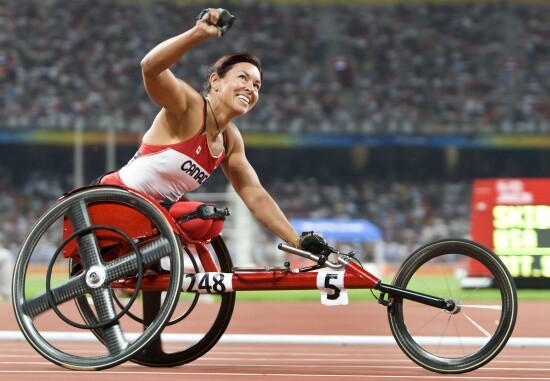
This pioneering program was made possible by an initial $8-million endowment from the Paralympic Foundation of Canada, the Canadian Paralympic Committee’s philanthropic partner. Sanjay Malaviya, CEO of healthcare tech company RL Solutions, contributed $4 million, with $2 million matched by the Canadian government, and an additional $2 million to be raised.
Malaviya, reflecting on the moment, said in a press release that he believed this program was a long time coming. “Canada’s Paralympians are incredible athletes who unite all of us as they proudly represent our country, and I am thrilled to be able to support them and celebrate their accomplishments in this way.”
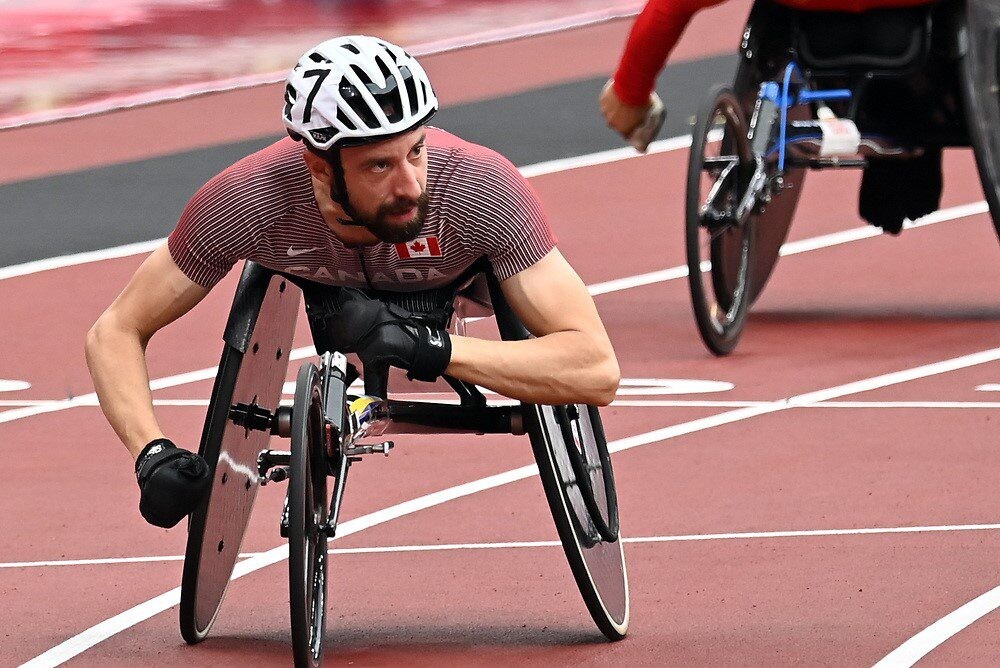
This isn’t the first time Malaviya has made a substantial donation to Canadian athletes. In March 2022, Malaviya gave 130 Olympians and 53 Paralympians $5,000 each for winning a medal at the Tokyo (summer) and Beijing (winter) Games—a donation of $1.2 million.
A total of 128 athletes (57 men and 71 women) represented Team Canada at the 202 Tokyo Paralympic Games, with 21 athletes winning medals for Canada. Two of the five gold medals were won in athletics. Victoria’s Nate Riech won gold in the men’s T38 1,500m, and Greg Stewart won gold in the men’s F46 shot put.
Similar initiatives for Paralympic athletes also exist in other countries—such as France, the U.S., and Australia—and the program for Canadian Olympians has been in place since 2006. The 2024 Paris Paralympic Games will begin Aug. 28 and run until Sept. 8.
(01/25/2024) ⚡AMPby Marley Dickinson
Paris 2024 Olympic Games
For this historic event, the City of Light is thinking big! Visitors will be able to watch events at top sporting venues in Paris and the Paris region, as well as at emblematic monuments in the capital visited by several millions of tourists each year. The promise of exceptional moments to experience in an exceptional setting! A great way to...
more...North Korea cancels Pyongyang marathon for fifth straight year
North Korea has called off its annual international marathon for the fifth consecutive year, but could reschedule the event for later in 2024 as the isolated country gradually eases longstanding border restrictions.
The Pyongyang Marathon Committee confirmed that the Pyongyang International Marathon will not be held as scheduled in April, North Korea-focused travel company and official event partner Koryo Tours announced in a blog post on Tuesday.

First held in 1981, the event has traditionally taken place around the time of founding leader Kim Il Sung’s birth anniversary on April 15, commemorated in the DPRK as the Day of the Sun, but a lack of time to prepare ahead of the national holiday appears to have prompted this year’s cancellation.
Simon Cockerell, general manager of Koryo Tours, told NK News that the organizers did not give a specific reason for calling off the marathon, but added that they likely faced challenges in including enough elite foreign runners required to stage a World Athletics Bronze Label event.
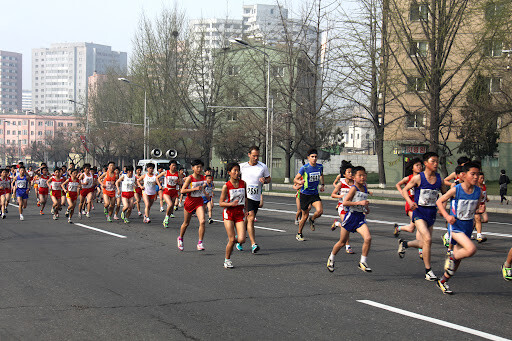
“As this cannot be confirmed, and as time is getting closer, it is likely they just decided that the correct operation of the race couldn’t be guaranteed,” he said.
The Pyongyang International Marathon last took place in 2019, with subsequent editions canceled as the country completely shut its borders in Jan. 2020 due to the outbreak of the COVID-19 pandemic.
However, according to the Koryo Tours blog post, there is still “a glimmer of hope” for those keen to participate in the race as it could be held later this year, likely in September or October.
Cockerell stated that the potential rescheduling remains under discussion and organizers have yet to officially confirm the September-October timeline, which could partly depend on when North Korea eases its stringent border restrictions for foreign visitors.
The DPRK has yet to fully reopen to foreigners despite occasional exceptions since last year for engagement with close partners Russia and China.
However, a Vladivostok travel agency may soon open the door for the return of visitors from overseas with a group tour scheduled for February, which could serve as a trial run ahead of reported plans to resume regular tourism in April.
The Pyongyang International Marathon has been a popular attraction for tourists since the event started allowing foreign amateurs to enter in 2014, but Koryo Tours stressed that the cancellation should not be seen as an indicator of when North Korea will reopen for tourists.
Noting that the marathon took place for decades without tourists, Cockerell views the lack of elite foreign athletes as the bigger barrier.
“If tourism resumes tomorrow, or soon, or before the April planned date for the race, then it still will be canceled,” he said. “I believe it is simply down to not [having] enough time remaining to organize such an event.”
Cockerell added that the marathon’s organizers have no inside knowledge or influence regarding the border reopening, but welcomed their openness to the idea of postponing it until later in the year.
“It is the one marathon in the country, after all, and there is a motive to use it to give competitive practice to possible international-level runners from the DPRK,” he said. “So I’m sure the relevant organs there very much want it to go ahead somehow.”
While Pyongyang has called off its high-profile marathon for now, a scheduled women’s soccer match between the DPRK and Japan in late February could present a valuable opportunity to gauge the country’s readiness to host international sporting events.
State media has not yet confirmed the match will go ahead as scheduled at Pyongyang’s Kim Il Sung Stadium, but if it does, it will mark the first time foreign sportspersons are allowed to enter North Korea since before the pandemic.
(01/24/2024) ⚡AMPby Alannah Hill
Pyongyang Marathon
This race can be run either as a full marathon or as a half marathon. There is also a 10km race and a 5km race. Hundreds of local runners take part as well as some elite foreign runners. Anyone taking part in this tour who wants to watch the marathon instead of take part in it is more than welcome...
more...Stellar Field Assembled to Challenge Yared Nuguse in the NYRR Men's Wanamaker Mile
The 116th Millrose Games is now just 19 days away, as the eyes of the global athletics community will once again return to the Nike Track & Field Center at The Armory. As always, the meet will conclude with the NYRR Men’s Wanamaker Mile, a legendary race with over a century of tradition.
The Millrose Games is scheduled to take place on Sunday, February 11th.
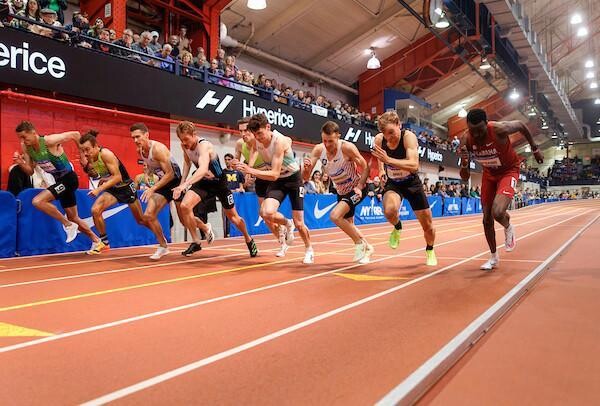
Previously announced as the headliner for this race is defending champion Yared Nuguese, the American record holder in the mile indoors and outdoors. Nuguse has his eyes on the world record of 3:47.01, but he will have to contend with a number of the best athletes in the world if he is to win his second straight Wanamaker title, including two additional 1500m finalists from last summer’s World Championships.
“[The world record] feels like a goal that’s within my grasp of achieving.” said Nuguse. “Not only am I stronger and smarter than I was last year, but I feel like I will be able to attack this race with a lot more confidence to chase the world record. When I went to Millrose for the first time, I was just chasing the American record. So changing that mindset, just seeing how far I’ve come, it feels like a very real possibility at this point.”
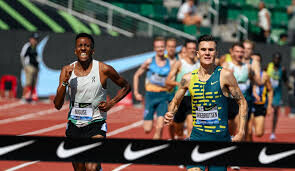
The elite athletes lining up to challenge Nuguse are as follows:
-Mario Garcia Romo was last year’s runner-up, and he is the 2022 1500m champion for Spain and a two-time World Championship finalist.
-Neil Gourley is a three-time British 1500m champion, and he holds the European indoor mile record.
-George Mills placed third in the mile at the Diamond League final, moving up to third on the all-time British list, before also placing second at the NYRR 5th Avenue Mile.
-Hobbs Kessler is the reigning World Road Mile champion, and he also holds the national high school indoor mile record.
-Andrew Coscoran is an Olympian and the Irish record holder over 1500m.
-Adam Spencer of the University of Wisconsin and Australia holds the NCAA 1500m record.
-Sam Prakel is the US Road Mile champion, and he placed fourth nationally in the 1500m.
-Charles Philibert-Thiboutot is a Canadian Olympian and the 2023 NACAC 1500m champion.
The winner of the mile at the Dr. Sander Invitational this Saturday, January 27th will be added to the NYRR Wanamaker Mile field as well.
Stay tuned over the coming weeks before the 116th Millrose Games, as the world-class start lists are finalized. Top athletes already confirmed to compete include Laura Muir, Elle Purrier-St. Pierre, Dina Asher-Smith, Julien Alfred, Alicia Monson, Grant Fisher, Danielle Williams, Josh Kerr, Cooper Teare, Yaroslava Mahuchikh, Christian Coleman, Andre De Grasse, Nia Ali, Chris Nilsen, and KC Lightfoot, with even more Olympians and World Championship medalists still to come.
As always, the Millrose Games will feature the absolute best athletes in the sport, including dozens of Olympians and world champions. The Millrose Games is a World Athletics Indoor Tour Gold meet. With highest-level competition at the youth, high school, collegiate, club, and professional levels, there is truly something for everyone at the Millrose Games.
Tickets can be purchased at https://www.millrosegames.org/
(01/24/2024) ⚡AMPNYRR Millrose Games
The NYRR Millrose Games,which began in 1908 as a small event sponsored by a local track club, has grown to become the most prestigious indoor track and field event in the United States. The NYRR Millrose Games meet is held in Manhattan’s Washington Heights at the New Balance Track & Field Center at the Armony, which boasts a state-of-the-art six-lane,...
more...Ugandan Stella Chesang headlines Osaka Women’s Marathon
The 2018 Commonwealth Games 10,000m champion, Stella Chesang will be the lady to watch at the 43rd edition of the Osaka Women’s Marathon slated for this Sunday (28) in Osaka, Japan.
The 27 year-old who is also the 2015 World U20 5000m bronze medallist, comes to this race with a life time best of 2:20.23 that she got last year at the Haspa Marathon where she took the bronze medal.
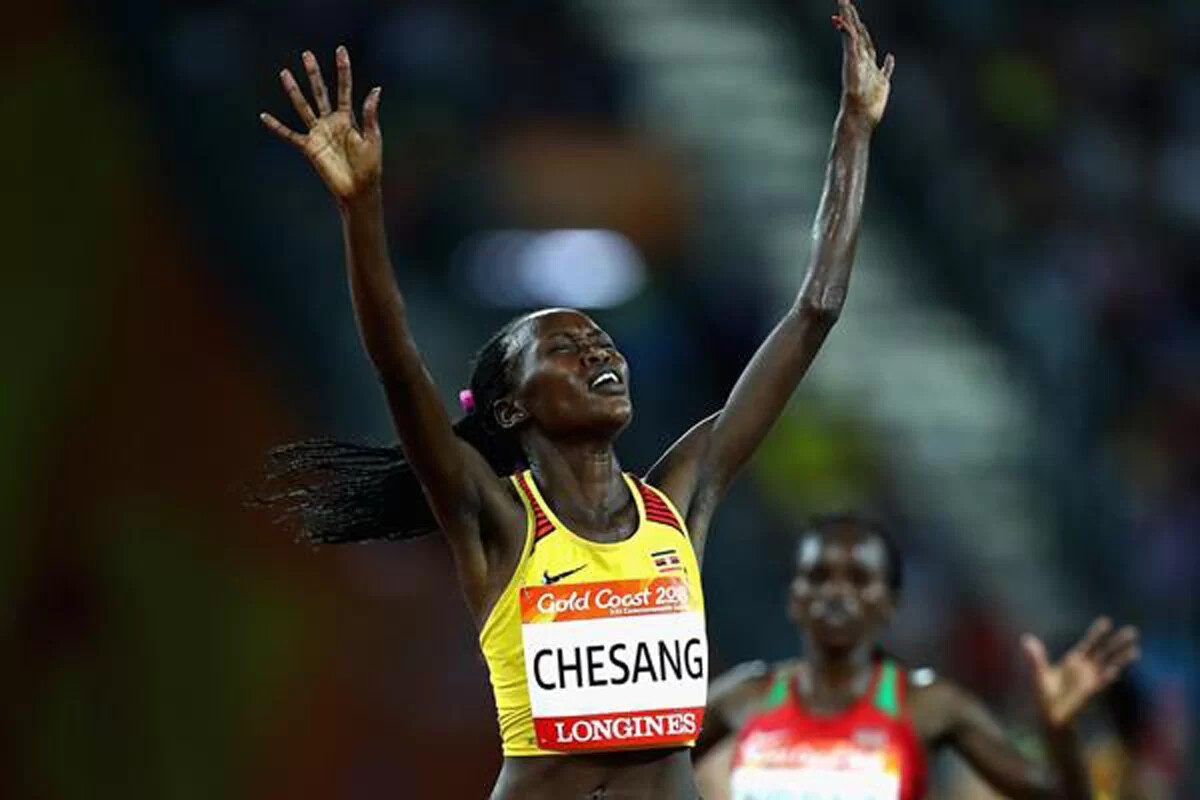
Chesang will not have an easy ride as she will have to get past Workenesh Edesa of Ethiopia, who is the fastest athlete on paper with a time of 2:18.51 that she set two years ago at the Berlin Marathon, where she finished in fourth place. Edesa who is the oldest athlete on the elite list is also the reigning Prague Marathon champion and will steer the ship alongside her compatriot Sisay Meseret Gola, who is the youngest athlete among the elite and holds the third fastest time of 2:20.50 that she got at the 2022 Zurich Marathon where she took the silver medal.
The three athletes will battle with the race defending champion and course record holder, Matsuda Mizuki, who is also the 2017 Asian Games 10,000m bronze medallist and comes to this race with a personal best of 2:20.52 that she got last year at this event. The 28 year-old will partner with her six compatriots as they seek to retain the title.
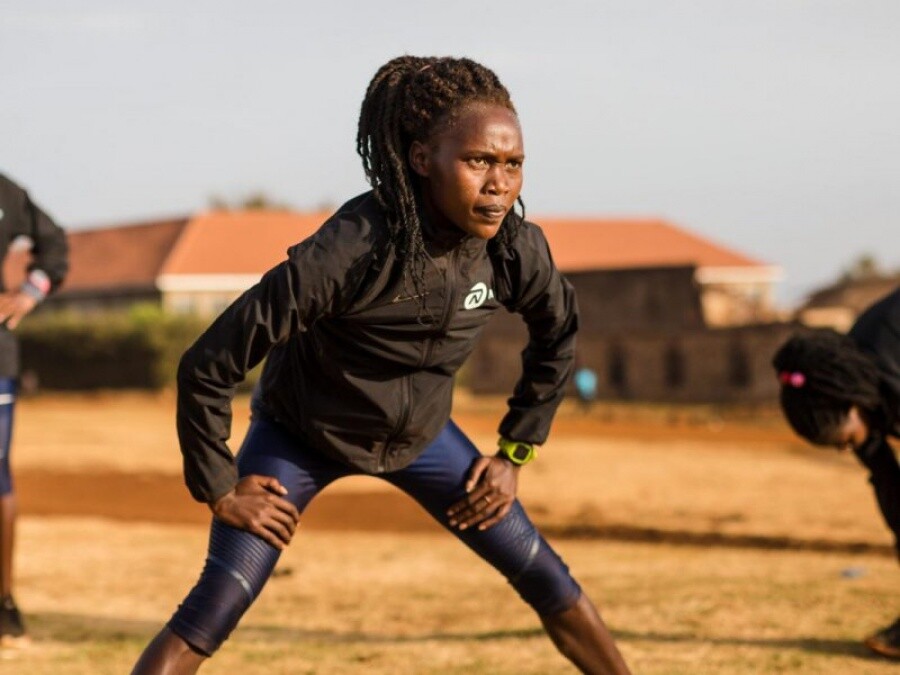
Japan’s Sato Sayaka of 2:22.13 will tag along Maeda Honami of 2:22.32, Matsushita Natsumi 2:23.05, Kawauchi Rie 2:25.35, Daito Yuna 2:26.09, Takeyama Kaena 2:29.20 as they also fight for the top position.
LEADING TIME
42KM WOMEN
Stella Chesang (UGA) 2:20.23
Workenesh Edesa (ETH) 2:18.51
Sisay Meseret Gola (ETH) 2:20.50
Matsuda Mizuki (JPN) 2:2052
Sato Sayaka (JPN) 2:22.13
Maeda Honami (JPN) 2:22.32
(01/24/2024) ⚡AMPby John Vaselyne
Osaka International Womens Marathon
The Osaka International Ladies Marathon is an annual marathon road race for women over the classic distance of 42.195 kilometres which is held on the 4th or 5th Sunday of January in the city of Osaka, Japan, and hosted by Japan Association of Athletics Federations, Kansai Telecasting Corporation, the Sankei Shimbun, Sankei Sports, Radio Osaka and Osaka City. The first...
more...Inside Usain Bolt's little-known 11-year love story with Jamaican model
Usain Bolt and Kasi Bennett's journey, from a secret romance to proud parents, embodies love, support, and shared privacy.
Double 100m and 200m world record holder Usain Bolt has been in a long-standing relationship with Jamaican model Kasi Bennett since 2013, according to reports.
This couple's journey, filled with love, privacy, and the joy of parenthood, paints a picture of a partnership built on mutual respect and support.
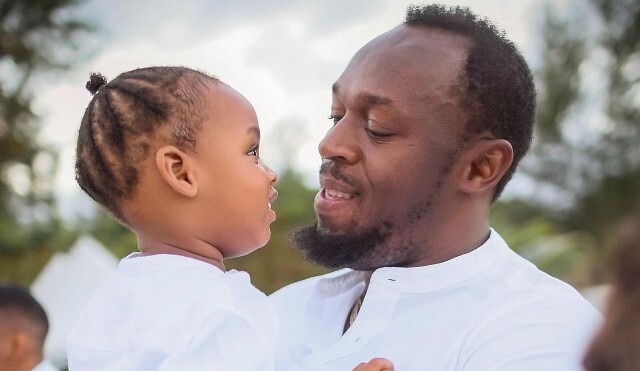
Bennett, who has been the anchor in Bolt's life through his career highs and lows, prefers to maintain a low profile, despite her partner's worldwide fame.
"Usain and I are very private when it comes to our relationship, but it's filled with love and mutual respect," Bennett shared in an interview with Vogue Jamaica.

Their love story began quietly in 2013, but it was not until a 2016 interview with People Magazine that Bolt openly expressed his happiness about the relationship.
“She’s happy, I’m happy!” he exclaimed, shedding light on their private life for the first time.
The birth of their daughter, Olympia Lightning Bolt in 2020, and twins Saint Leo Bolt and Thunder Bolt in 2021, marked new chapters in their lives.
Bennett, embracing motherhood, often shares glimpses of their family life on social media.
“Our babies are our greatest achievements,” she remarked in a heartwarming post on Instagram.
Despite their public figures, Bolt and Bennett have consistently strived to give their children a normal upbringing.
"We want our kids to grow up with the values we hold dear. Fame is fleeting, but family is forever," Bolt reflected in a candid discussion with The Guardian.
Fatherhood has been a new and challenging race for Bolt, as he humorously admitted that handling three children can be more daunting than competing in the Olympics.
Bennett, apart from being a supportive partner and a doting mother, is an advocate for women's empowerment in Jamaica.
Her efforts in various charitable causes have been a source of inspiration.
"It's important for me to use my platform to uplift other women," Bennett stated during a charity event in Kingston.
Their family dynamic is often showcased on Bennett's TikTok account, where she shares candid moments of their life, giving fans a peek into the everyday joys and challenges of being a family of five.
In a touching Father's Day post in 2023, Bennett celebrated Bolt as a father, highlighting his dedication and love for their family. "To the world, he's the fastest man, but to us, he's the world's best dad," she wrote, accompanied by a photo of Bolt with their children.
(01/24/2024) ⚡AMPby Festus Chuma
Usain Bolt
Faith Kipyegon revels after receiving 'beautiful' gift from Nike
Faith Kipyegon expressed her excitement after being gifted by her sponsors, Nike.
Double world record holder Faith Kipyegon has expressed her excitement after being gifted a bomber jacket by Nike, her sponsors.
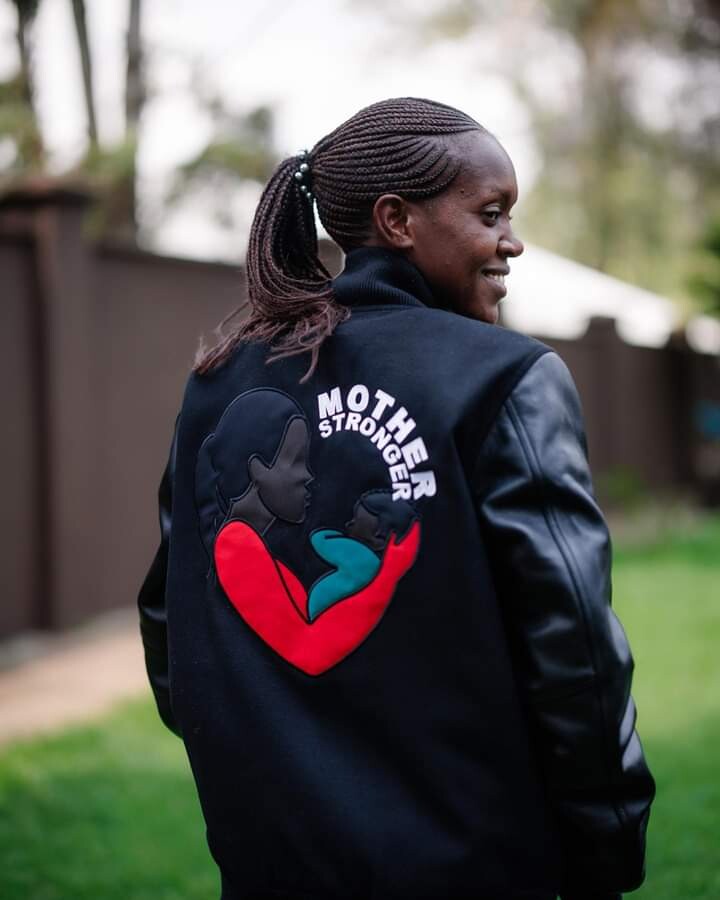
The jacket has a portrait of a mother embracing her child to depict the two-time Olympic champion with her daughter and is quoted with words, ‘MOTHER STRONGER’ at the back.
At the front, one side has the Kenyan flag logo and the other side has the Nike logo. The arms of the jacket are also made of leather to showcase the good quality of the merchandise.
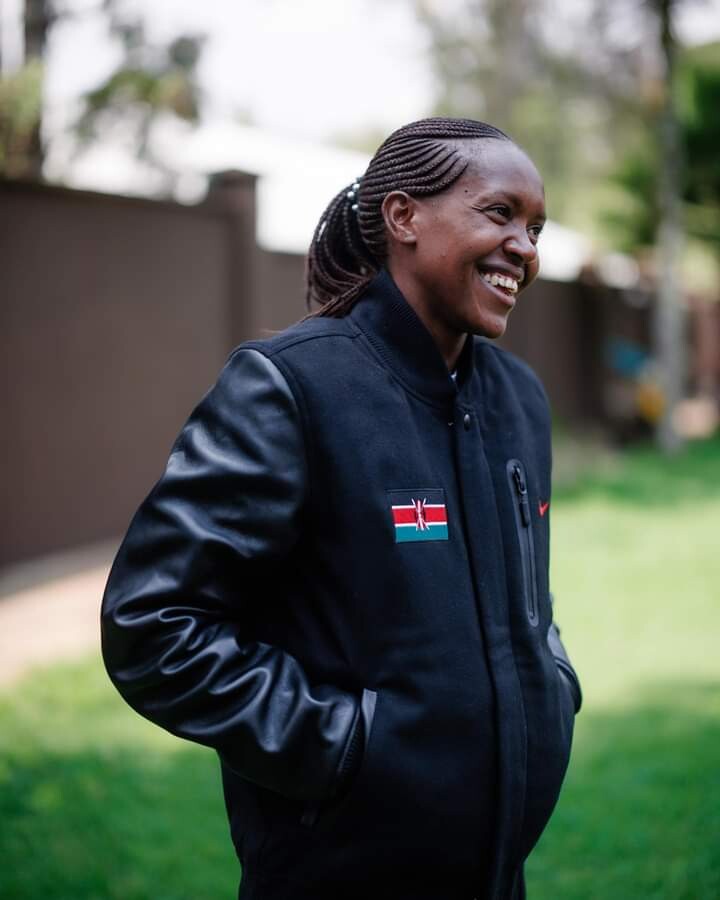
Expressing her gratitude on her X (Twitter) handle, the double World champion shared a snapshot showcasing her radiant smile while donning the sleek Nike bomber jacket. In the caption, she said: “A beautiful present from #NikeRunning.”
Kipyegon's words resonated with the essence of the athlete-sponsor relationship, emphasizing more than just the material aspect of the gift.
The acknowledgment underscored the profound support that sponsors like Nike provide, extending beyond the track to boost an athlete's confidence and style.
The bomber jacket, a symbol of both fashion and functionality, perfectly aligns with Nike's commitment to merging performance and aesthetics. As a global leader in athletic apparel, Nike has consistently demonstrated an understanding of athletes' multifaceted needs.
The brand's dedication to crafting gear that transcends the sporting arena to seamlessly integrate into an athlete's lifestyle is evident in the choice of this trendy yet functional gift for Kipyegon.
Kipyegon's appreciation for the thoughtful gesture serves as a testament to the symbiotic relationship between athletes and their sponsors. Beyond the tracks and competition, it's the unwavering support and thoughtful gestures that foster a sense of camaraderie and gratitude.
As Kipyegon continues to conquer new milestones in her athletic journey, she does so not only as an ambassador for her sport but also as a stylish representative of Nike's commitment to empowering athletes both on and off the field.
(01/23/2024) ⚡AMPby Abigael Wuafula
Over a year after suffering season ending injury, Dina Asher-Smith makes a comeback into uncharted territory at Millrose Games
Every day, we are getting closer to one of the most anticipated events, The Millrose Games 2024. The track and field world is amped up to witness the thrilling performances of top-notch athletes in all the exciting events. Among this one athlete that has grabbed every track and field enthusiast’s attention is Dina Asher-Smith. This British Sprinter is ready to make a spectacular comeback in the 2024 iteration of the Millrose Games after facing trials and tribulations due to her hamstring injury.
After sustaining an injury at the World Championships in Oregon, the athlete had to pull out from several events. However, after a year of grappling, Dina Asher-Smith has announced her participation in the Millrose Games 2024. Let’s have a panoramic view of the same.
Dina Asher-Smith to participate in two events at the Millrose Games.
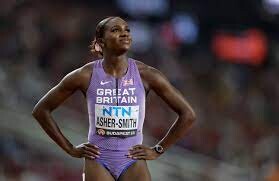
The British Sprinter Dina Asher-Smith faced a tough time after her hamstring Injury in 2022 as she had to pull out from the Commonwealth Games. She sustained this injury while performing at the 4x100m relay. However, more than a year after this incident, the Olympian has added her name to the Millrose Games giving a great start to her 2024 season. A US track and field Insider took to their X account to announce the same.
The post carried, “Dina Asher-Smith will be running the 60m at the Millrose Games on February 11th!” Apart from this, the champion has added her name to the 4x400m as well. She is extremely excited to showcase her skills here at one of the most prestigious track and field competitions.

She expressed, “The Millrose Games is one of the most prestigious and historic indoor competitions in the USA, and I am looking forward to racing there for the first time.” Dina Asher-Smith further added, “I am really enjoying my new training setup in Austin, and I’m looking forward to a big year in 2024”. This competition is going to be a great one as some of the most anticipated races will be held among the top-notch athletes.
Athletes to compete with the British Olympian at the Millrose Games 2024
The Millrose Games will be held on the February 11, 2024 at the Armory in NYC. The Armory this year will witness great races yet again with some of the notable athletes participating in the event. The 60m will be one of the anticipated races as along with Dina Asher-Smith, other renowned athletes will also be gracing the event.
The first name on the list of the 60m event is the first woman in NCAA to break the seven-second barrier over the 60m, Julien Alfred. This Saint Lucian Sprinter is the Joint North American holder for the 60 meters. Then is the Olympian American athlete English Gardner. The Jamaican athlete Briana Williams will also be competing.
Other athletes like Shashalee Forbes, Tamari Davis, Marybeth Sant-Price, and Celera Barnes will be a part of the competition. The track and field enthusiasts cannot wait to witness which athlete will sprint towards victory and take the gold home.
(01/23/2024) ⚡AMPby Nancy Singh
NYRR Millrose Games
The NYRR Millrose Games,which began in 1908 as a small event sponsored by a local track club, has grown to become the most prestigious indoor track and field event in the United States. The NYRR Millrose Games meet is held in Manhattan’s Washington Heights at the New Balance Track & Field Center at the Armony, which boasts a state-of-the-art six-lane,...
more...

